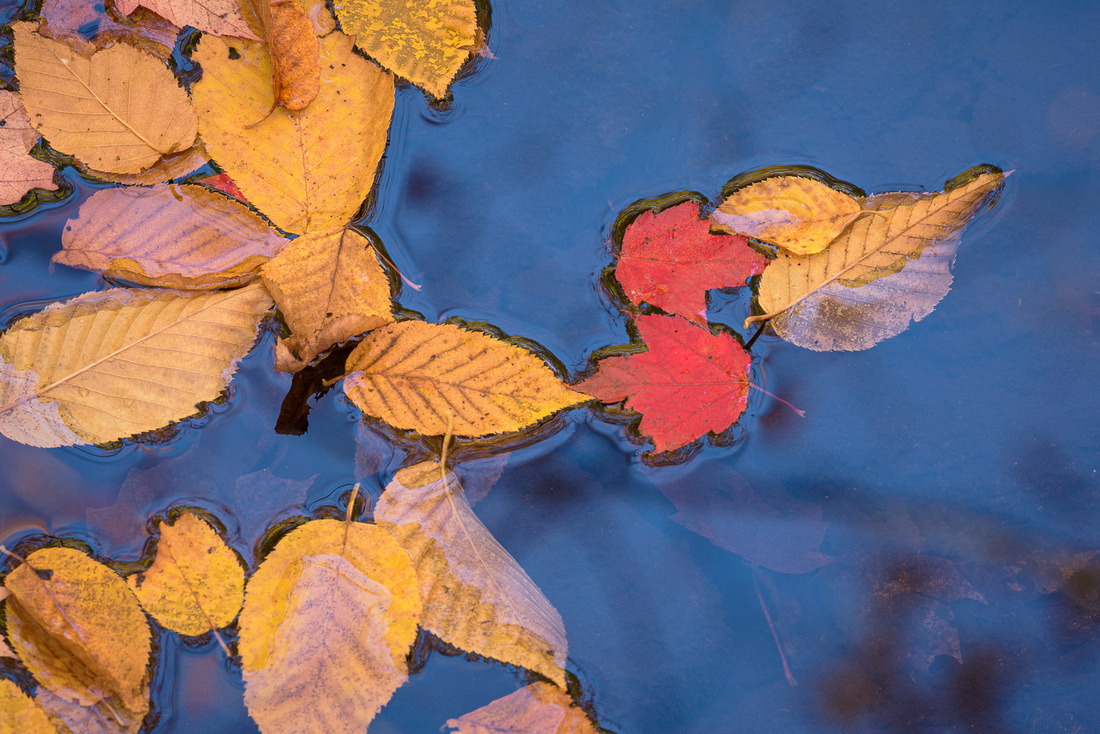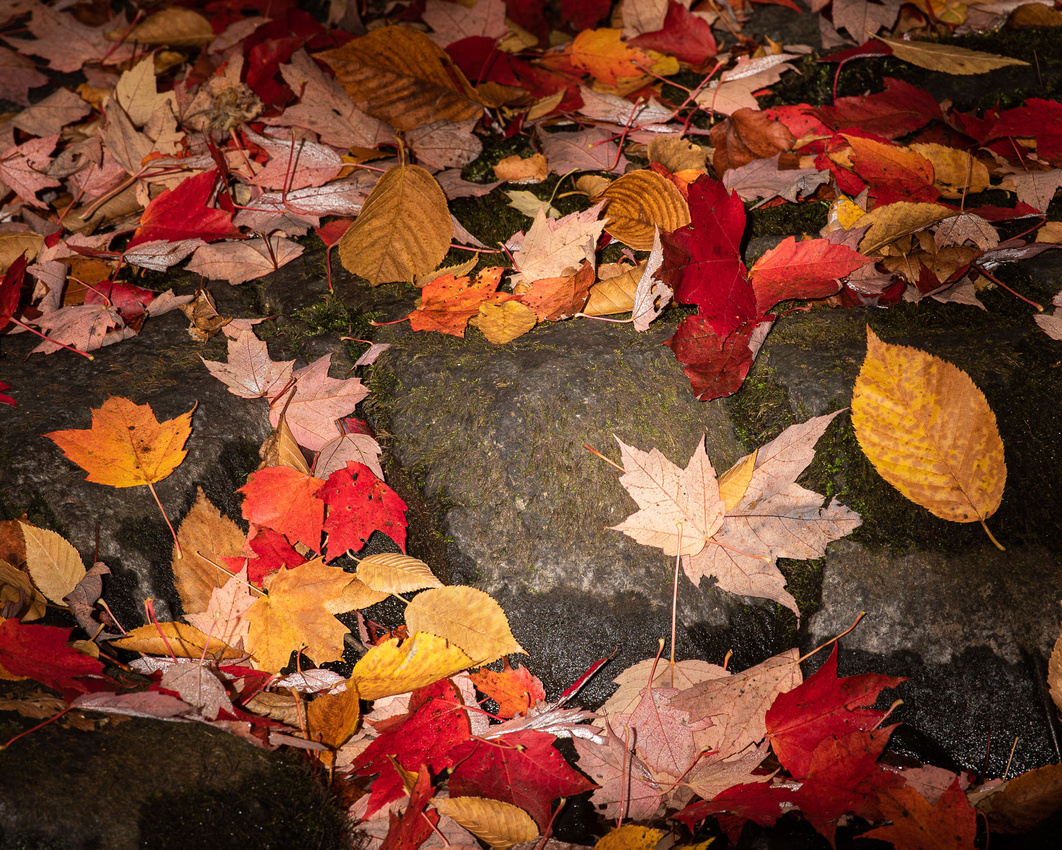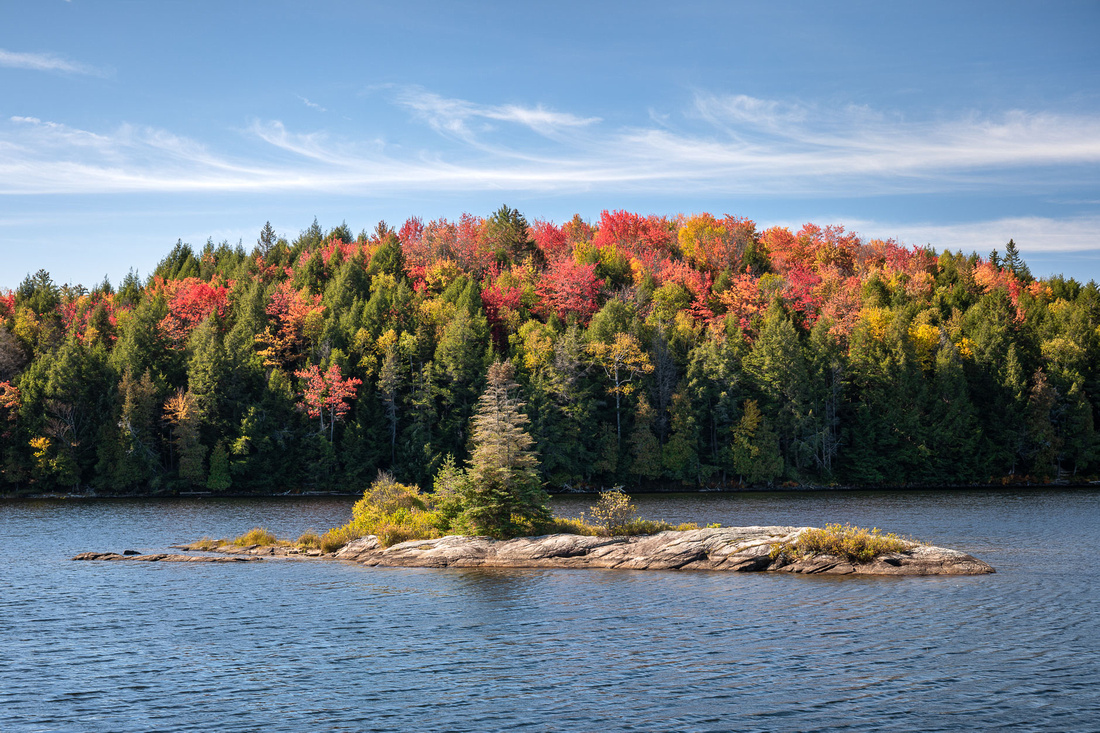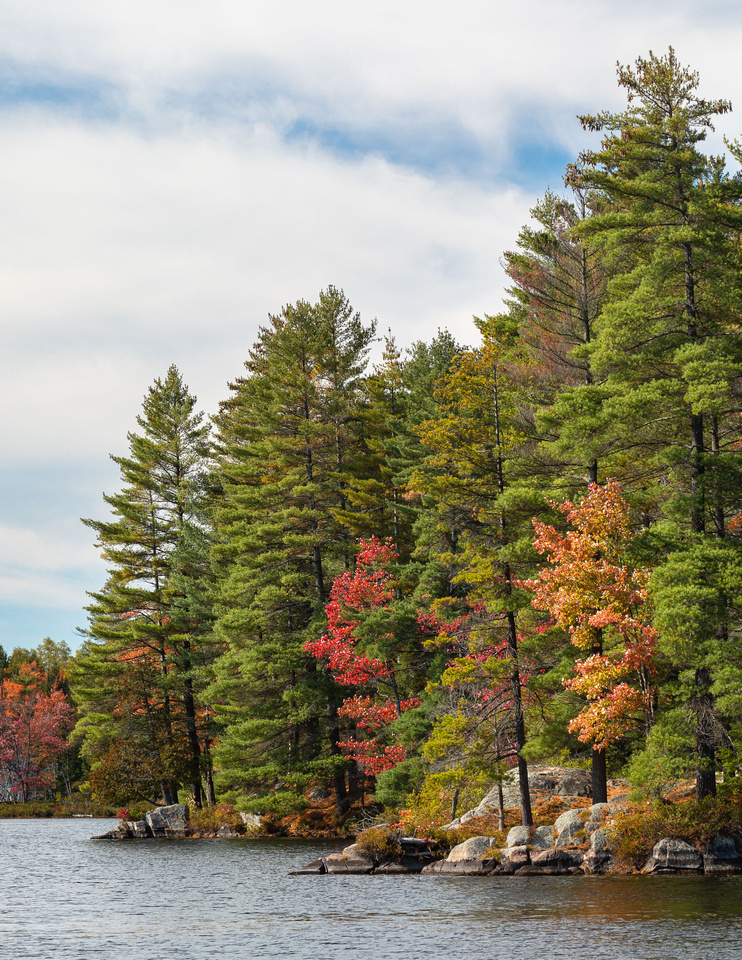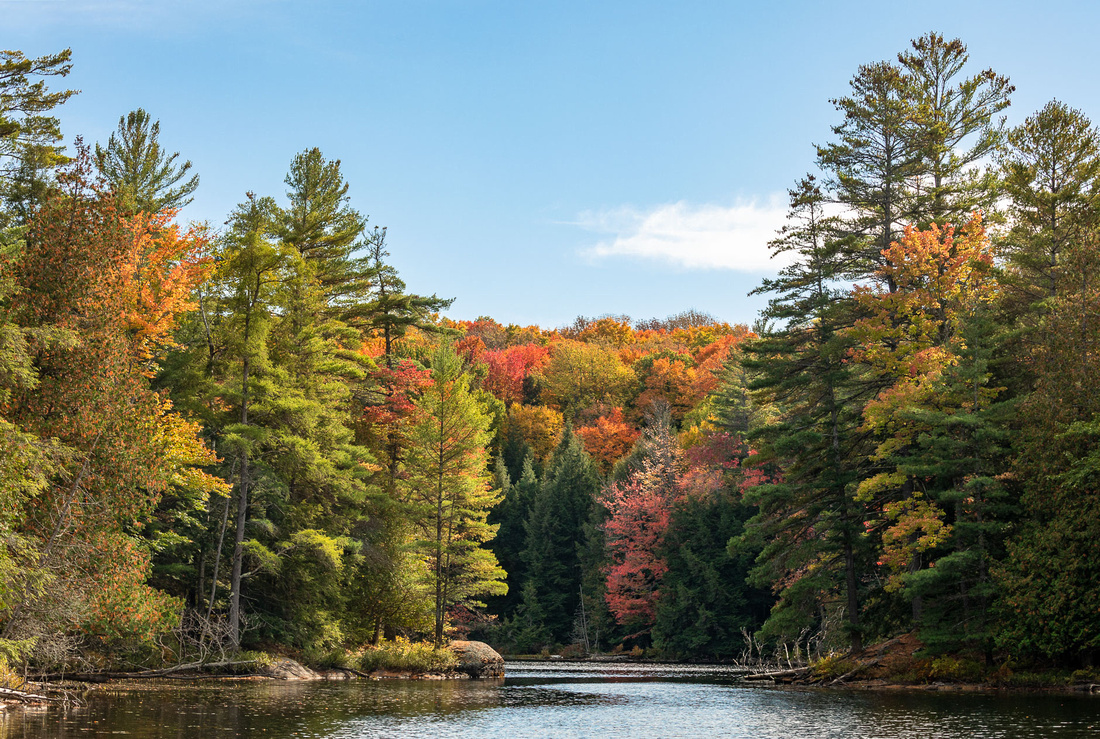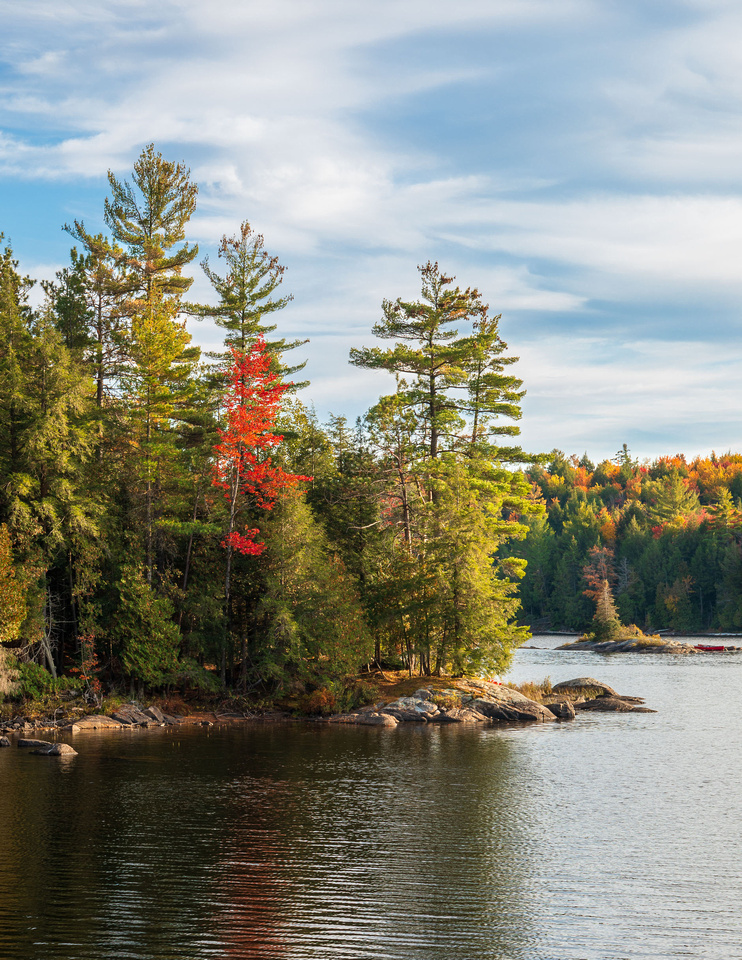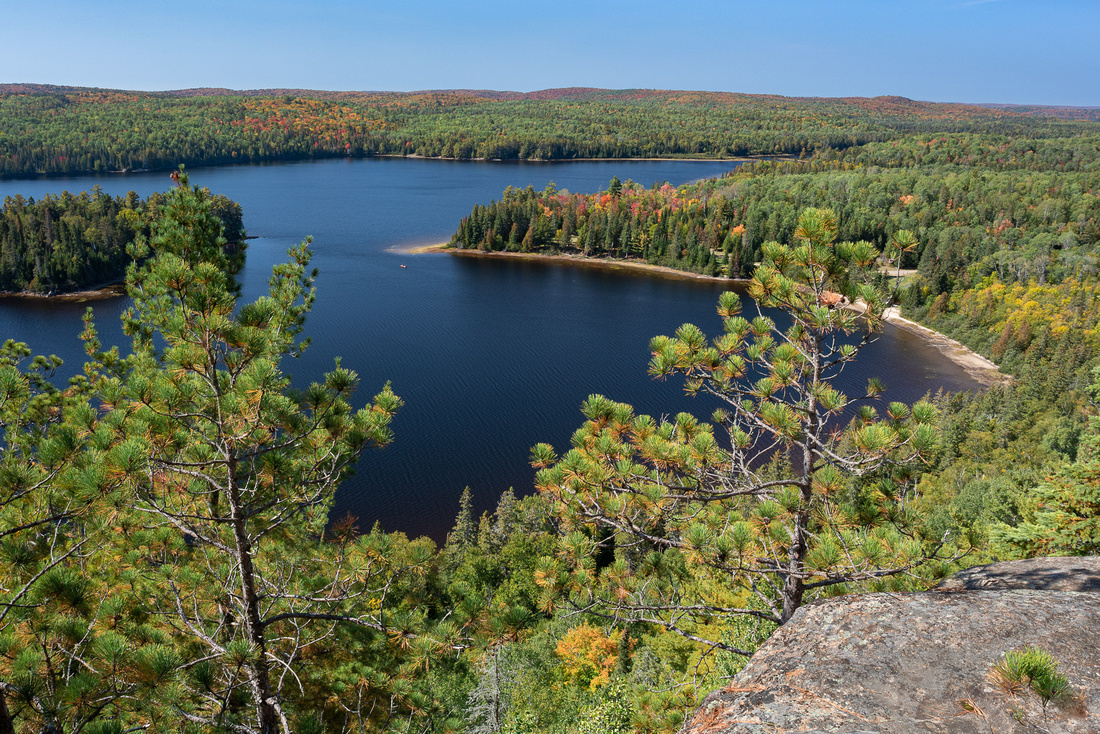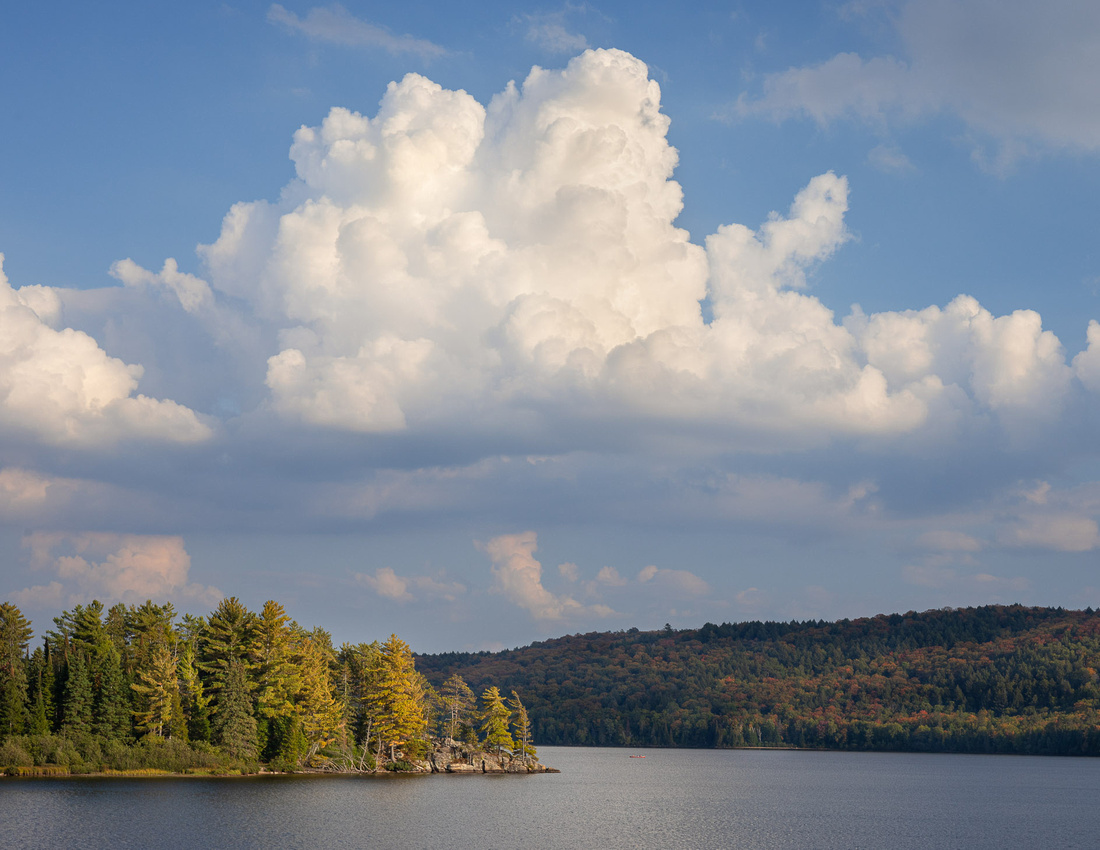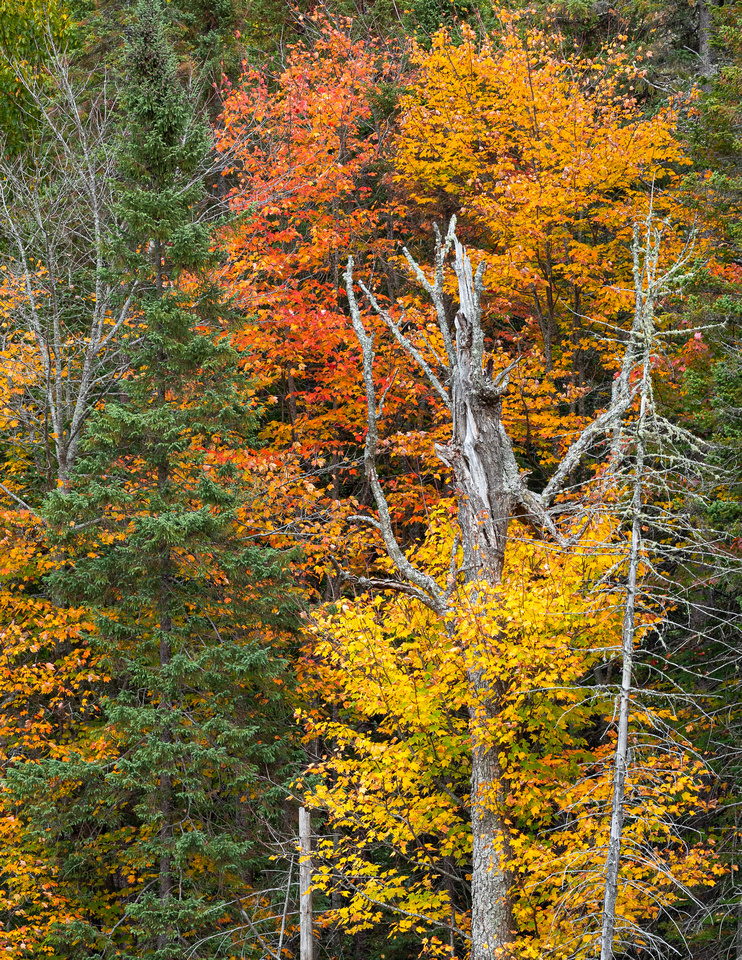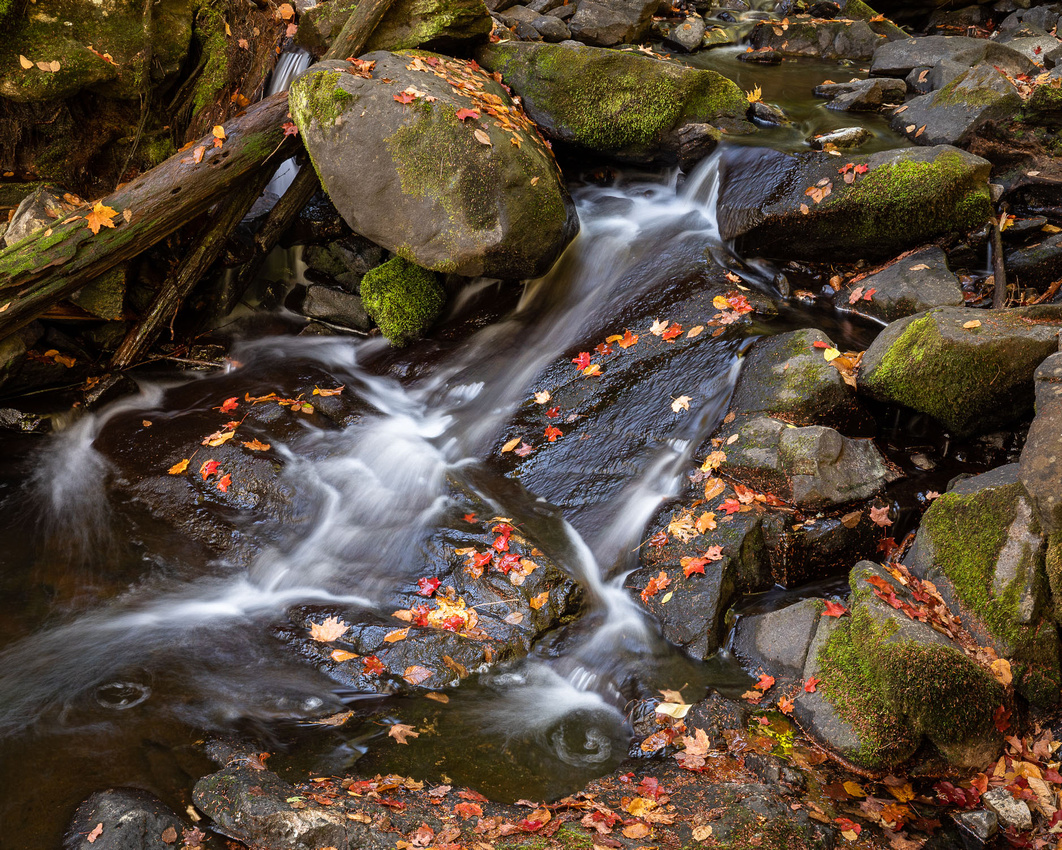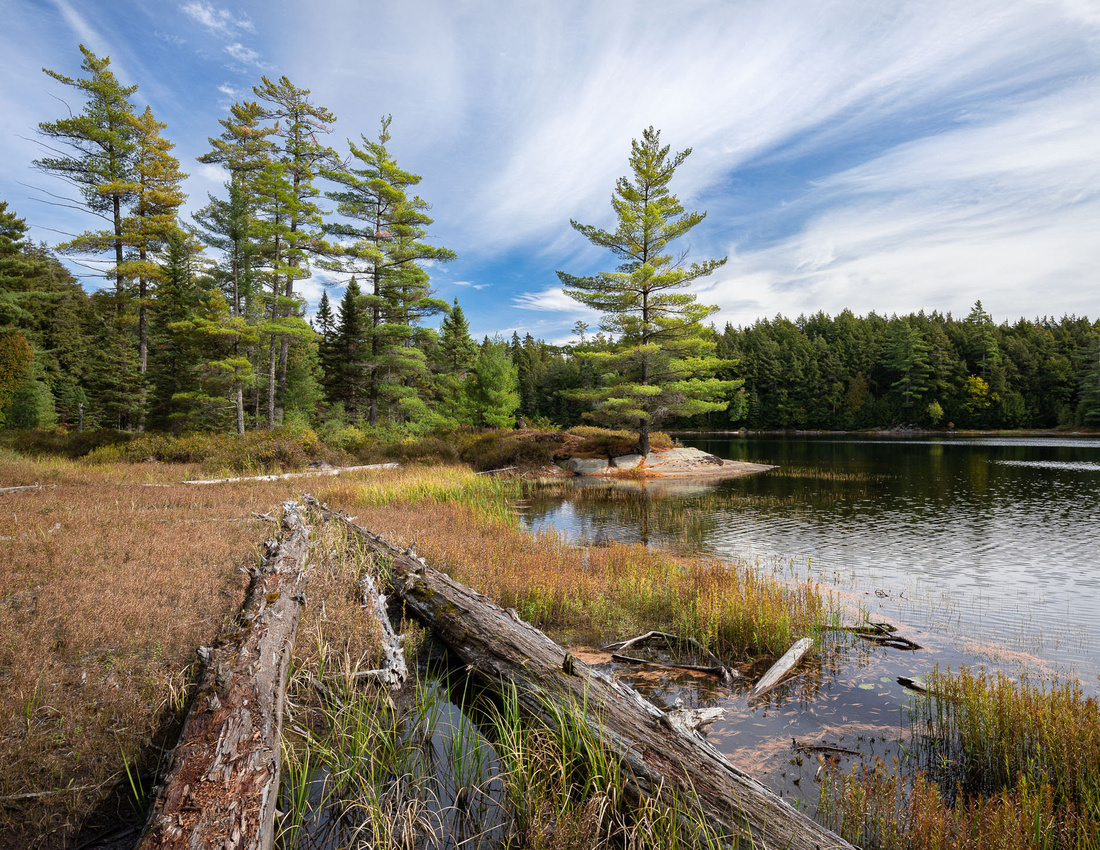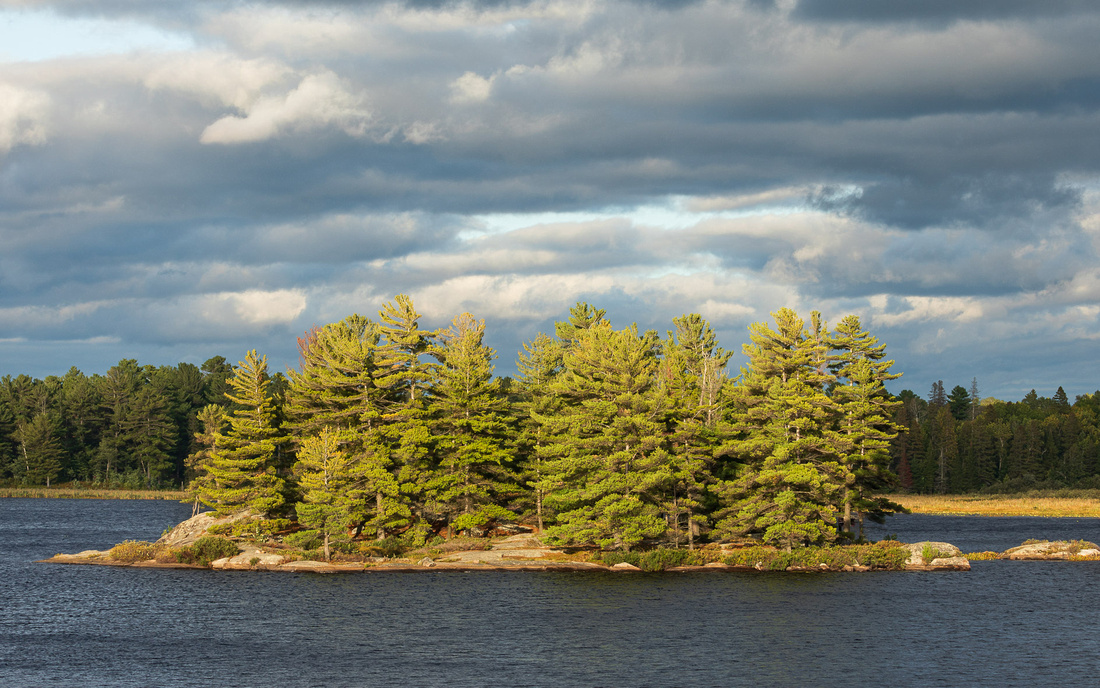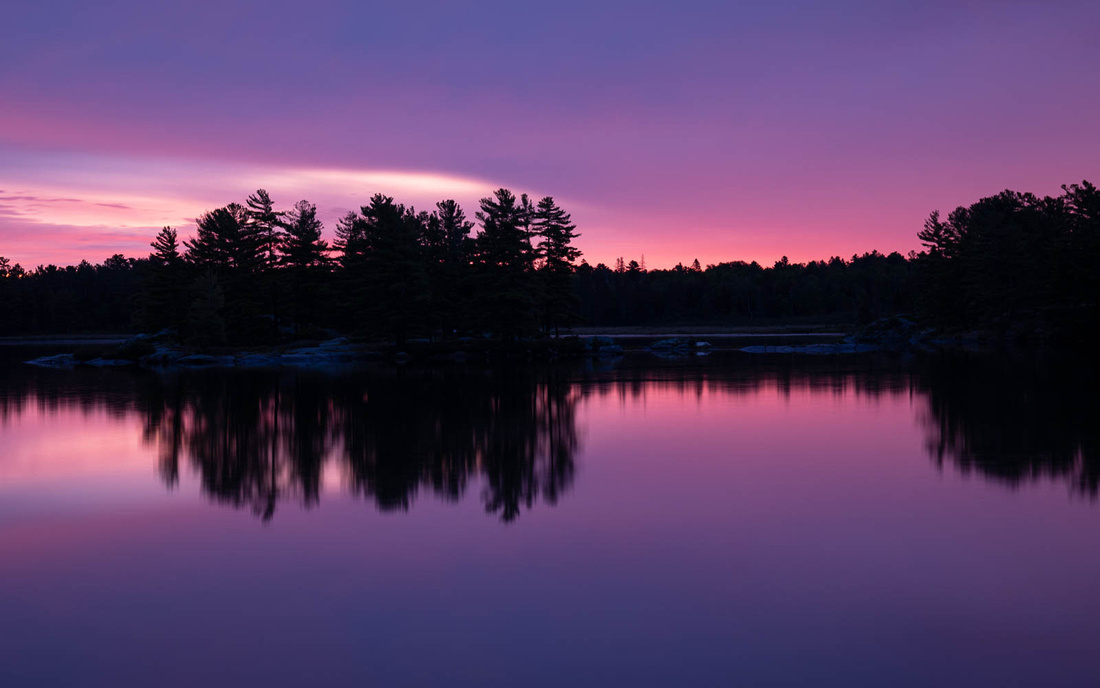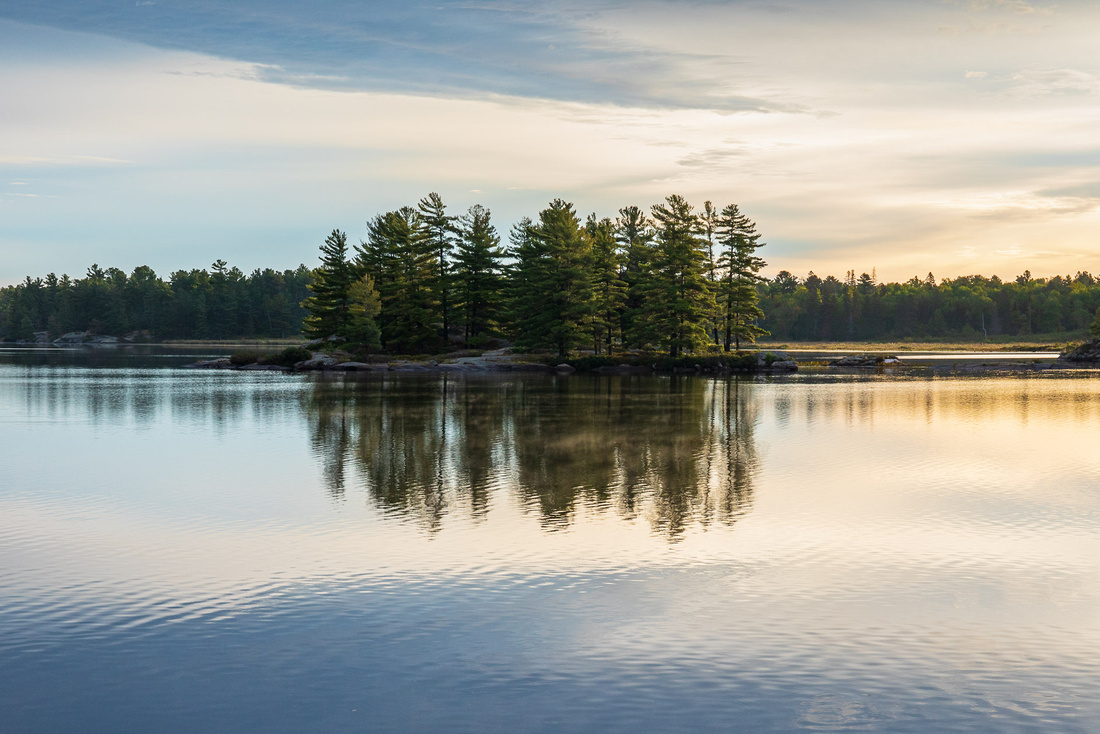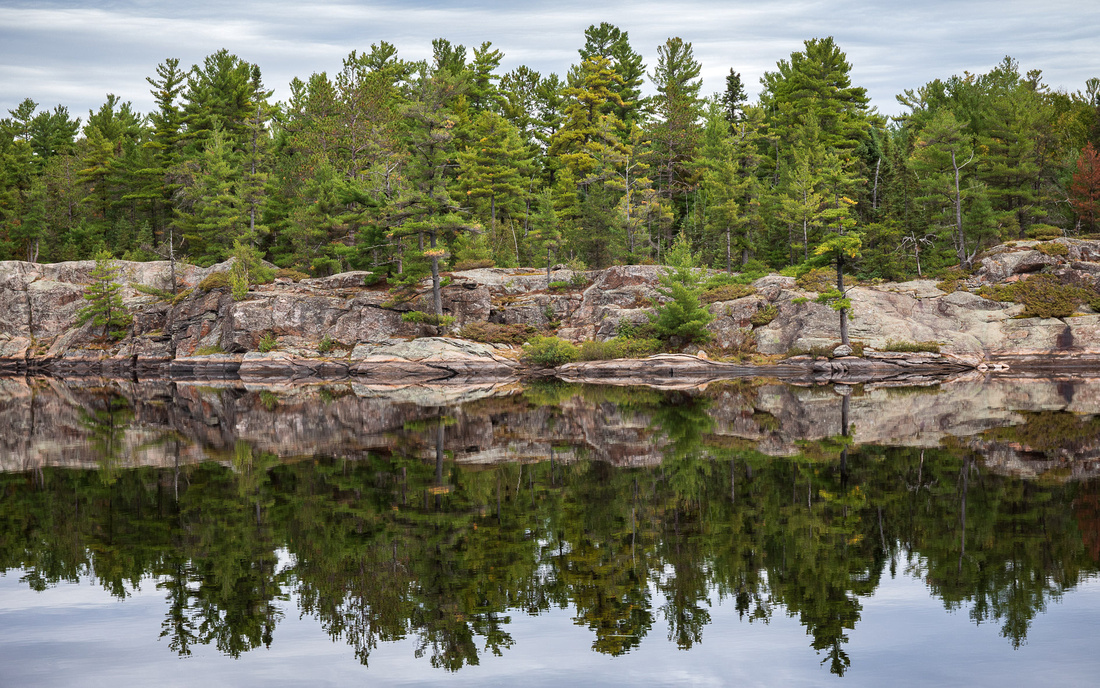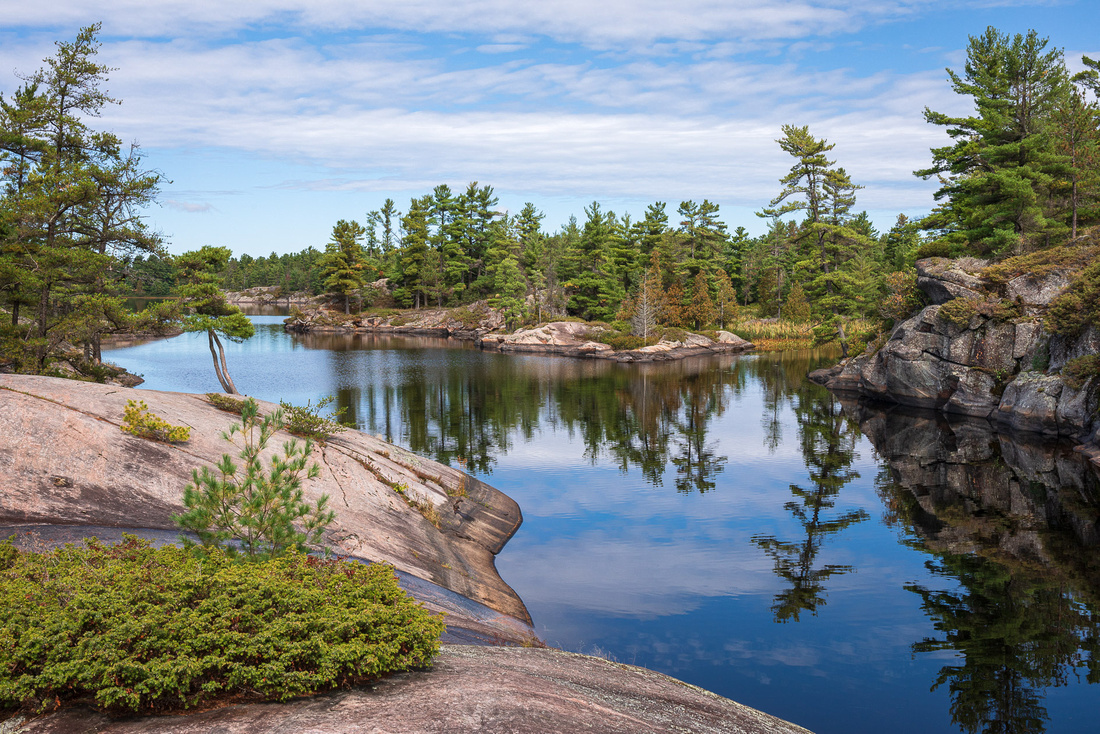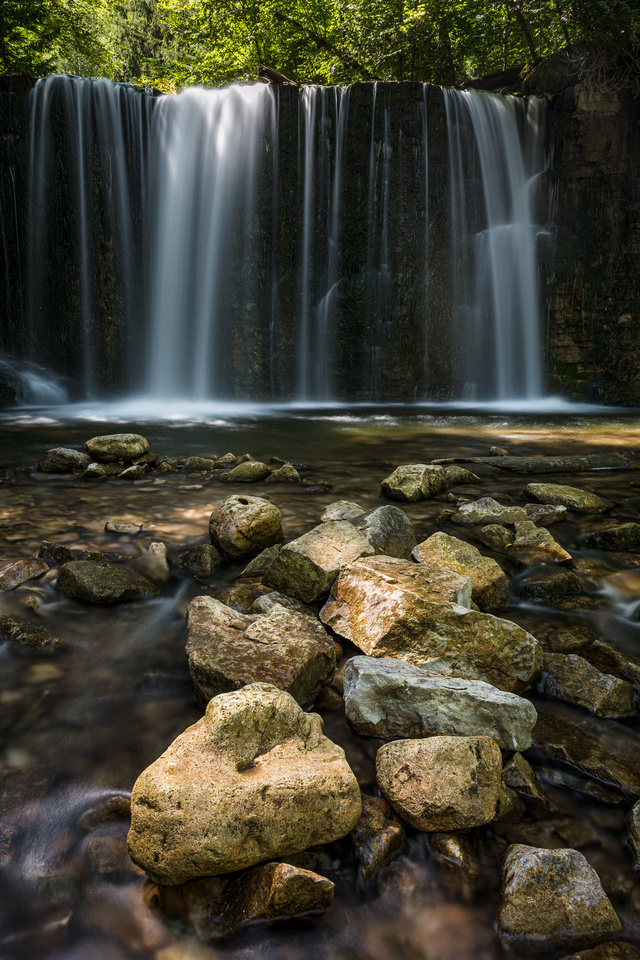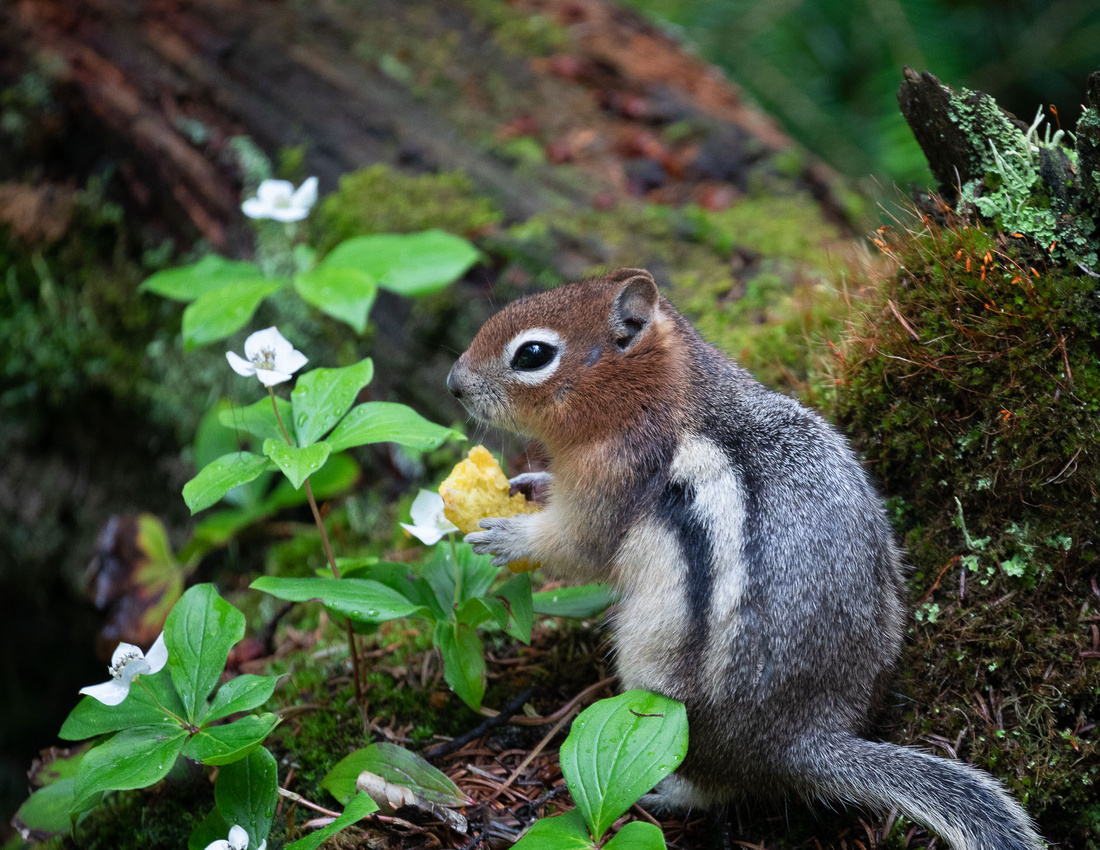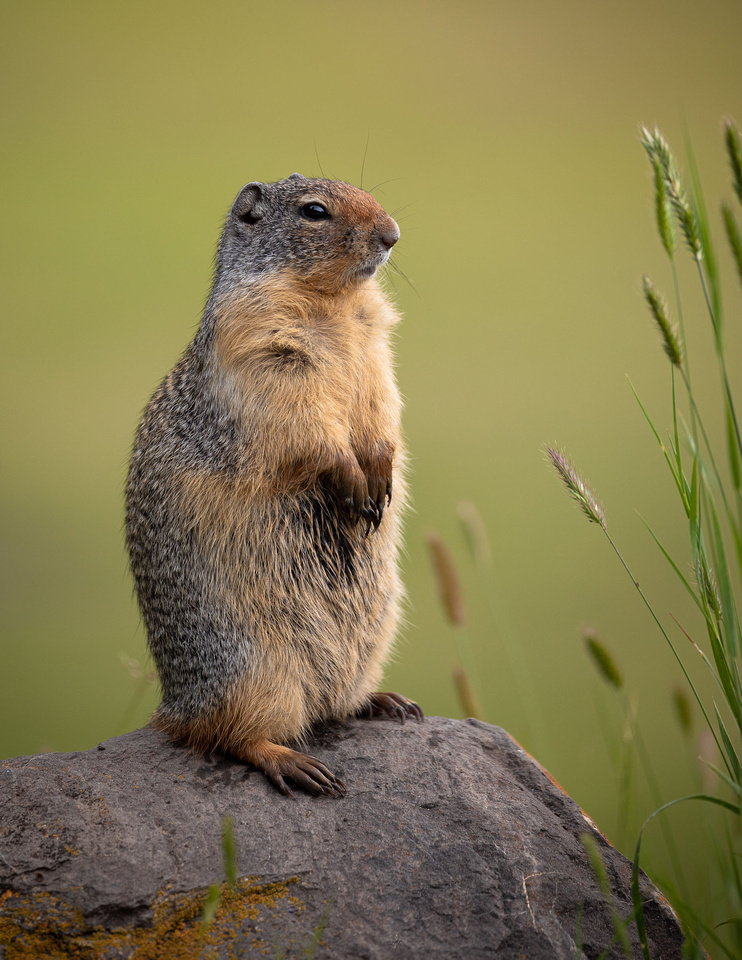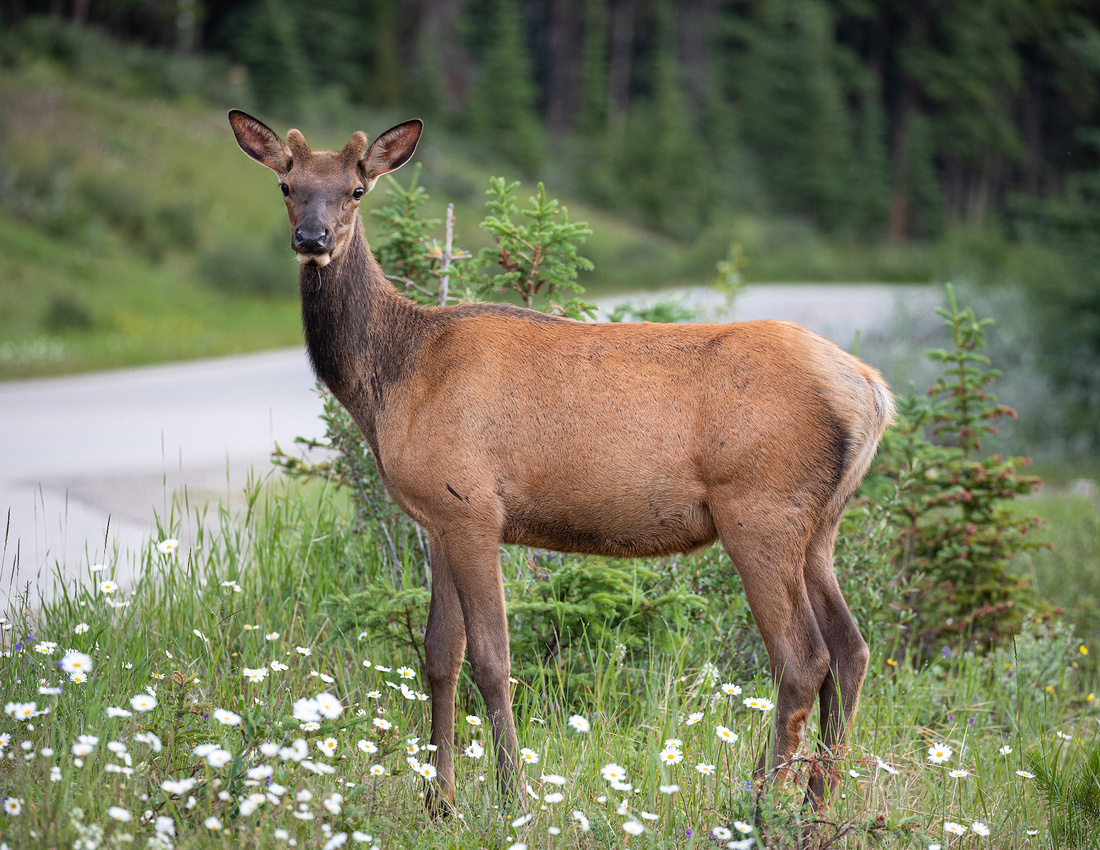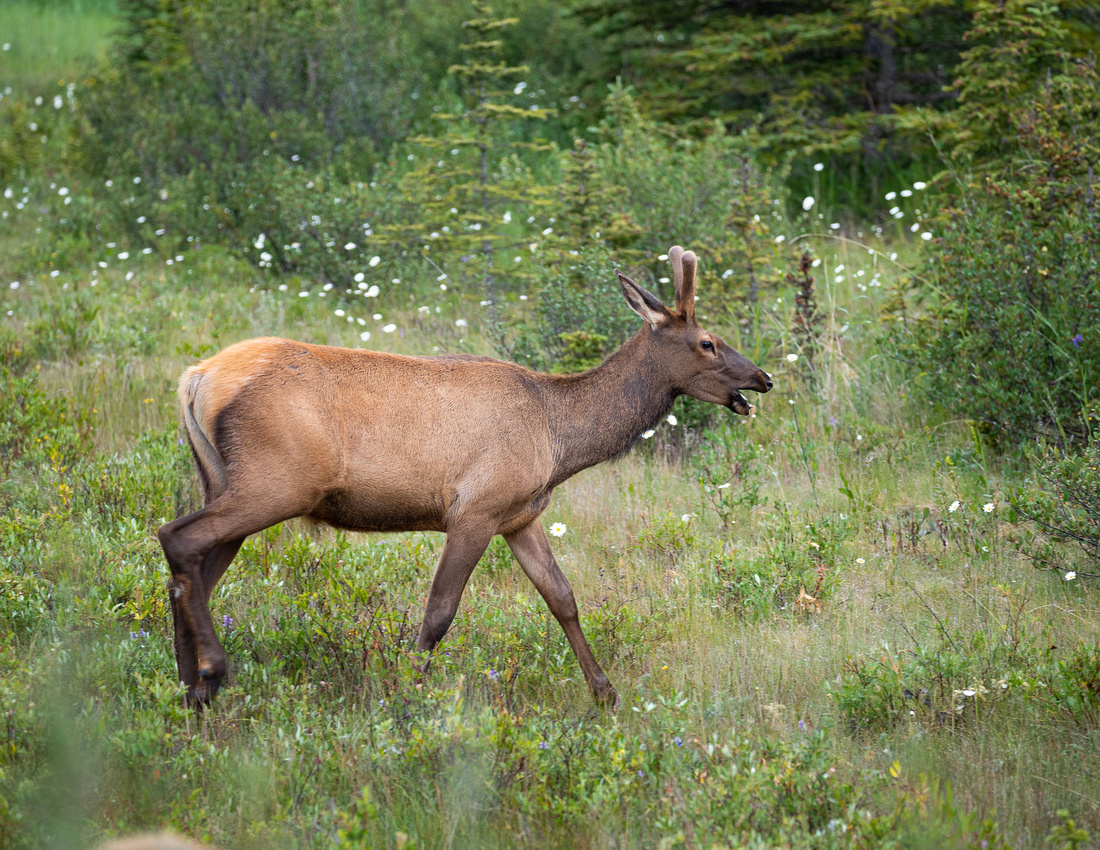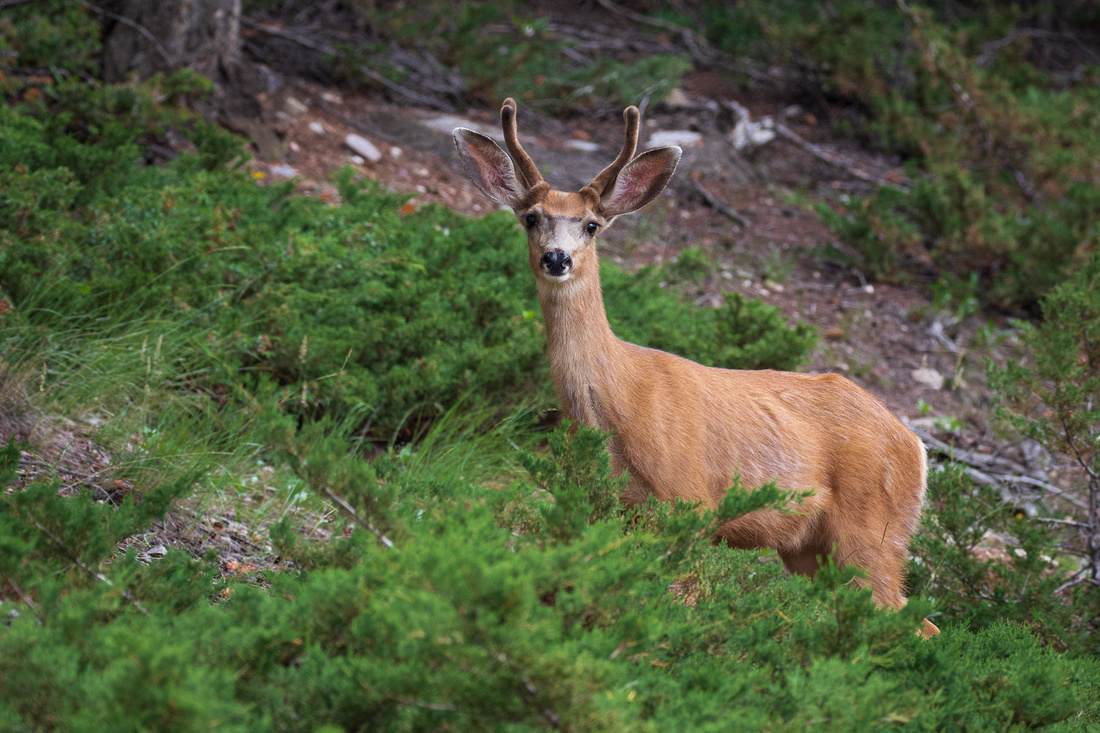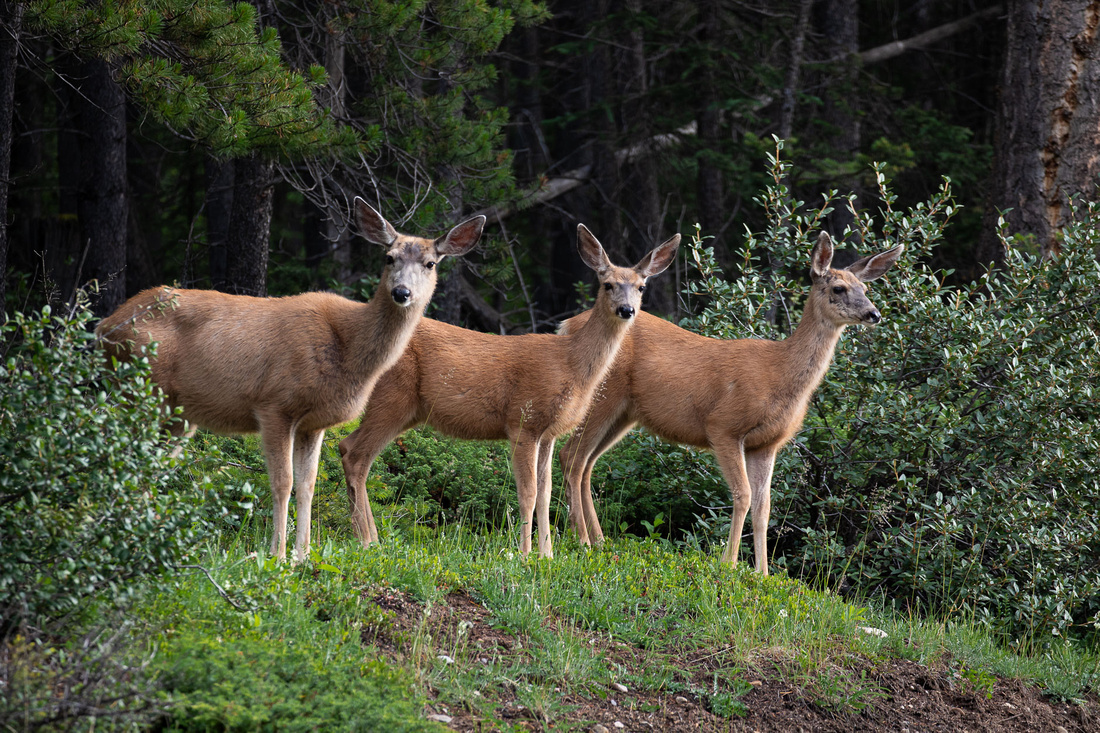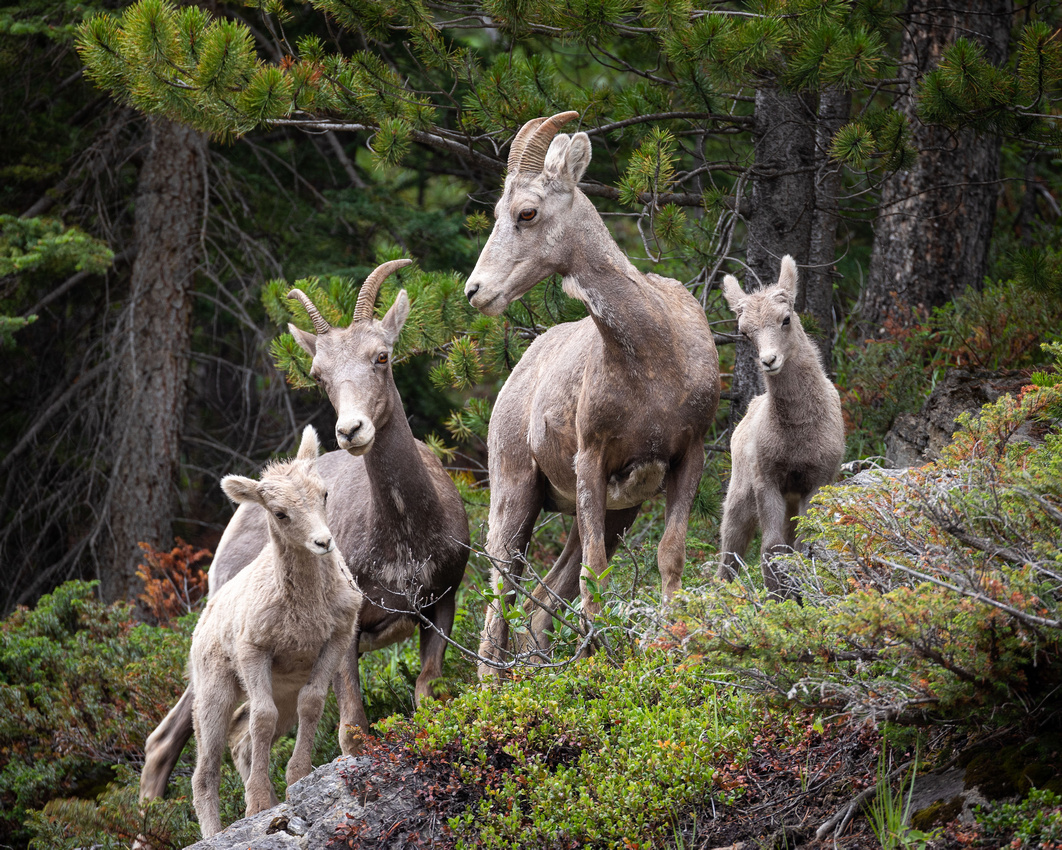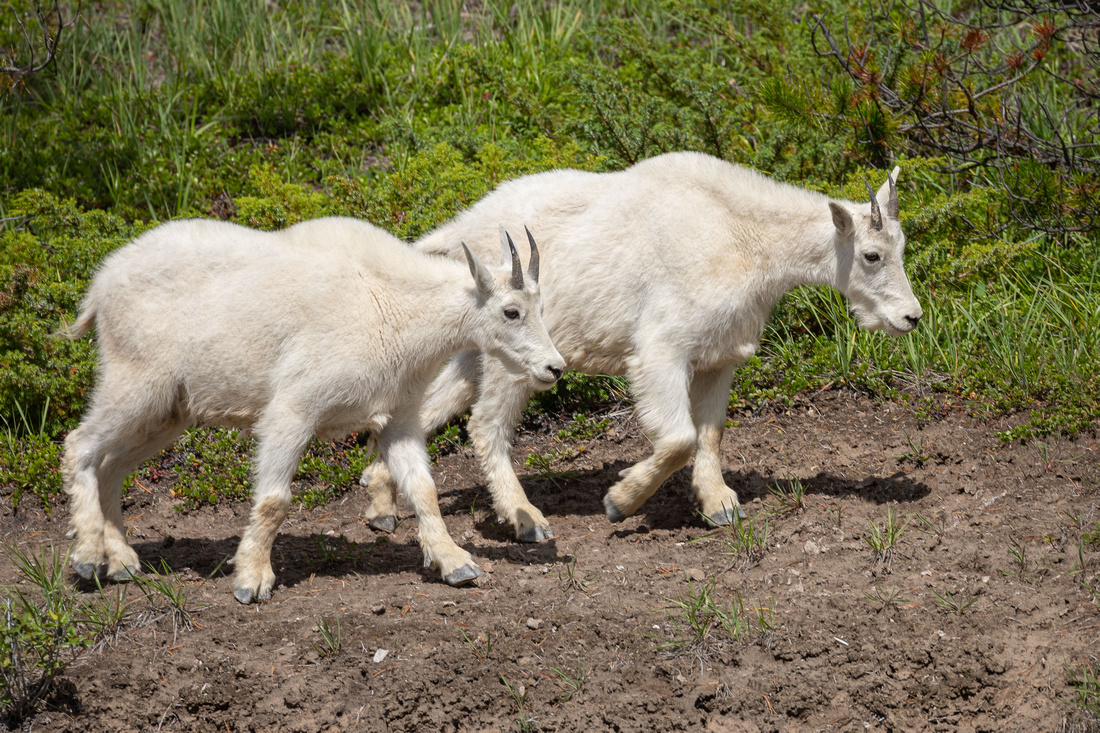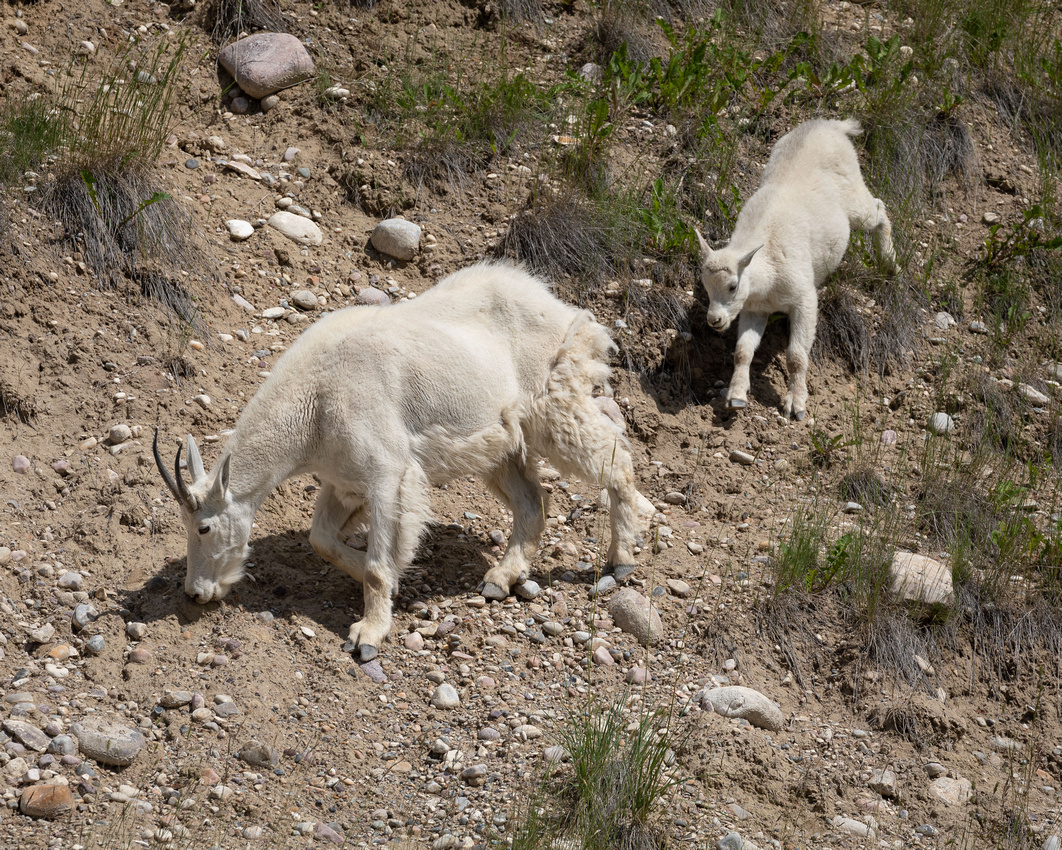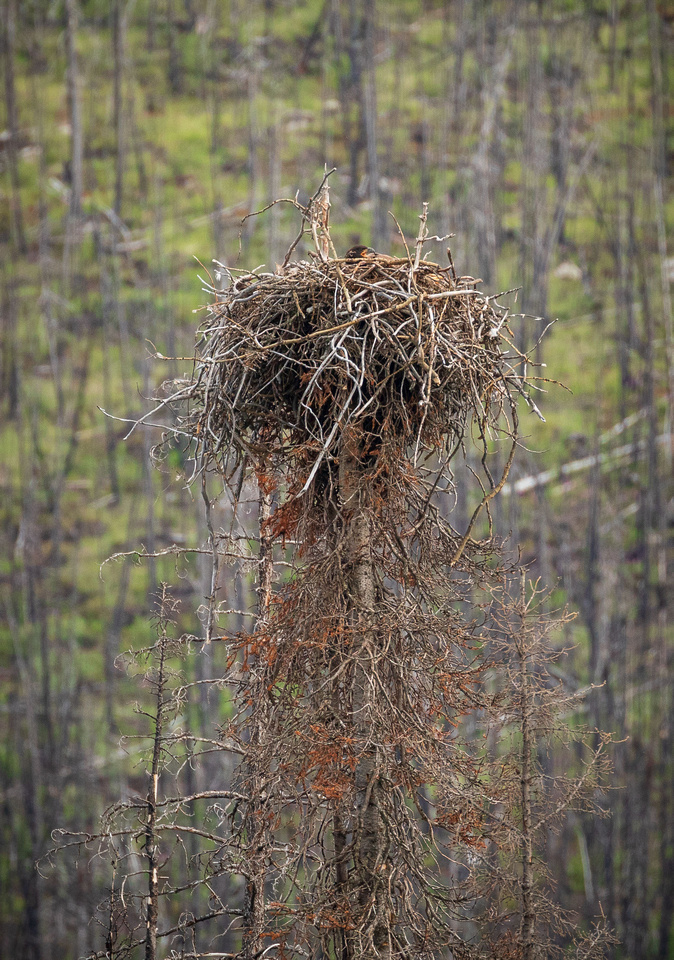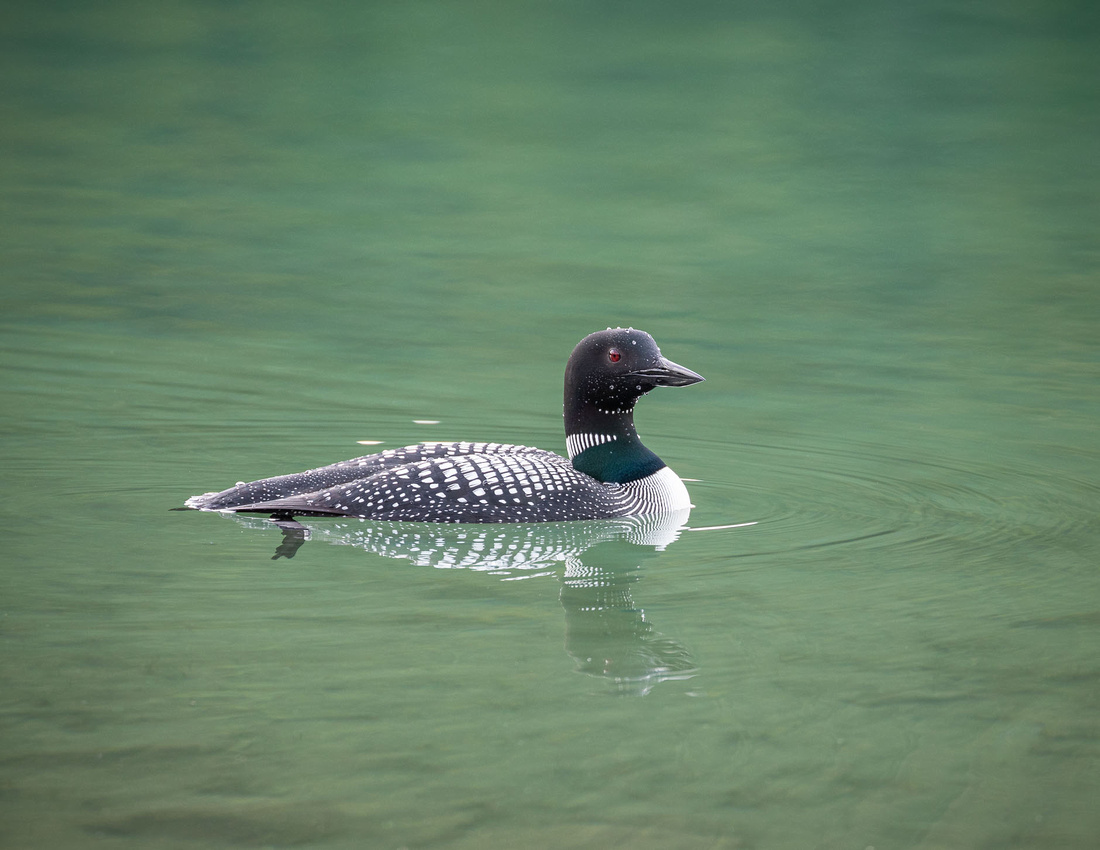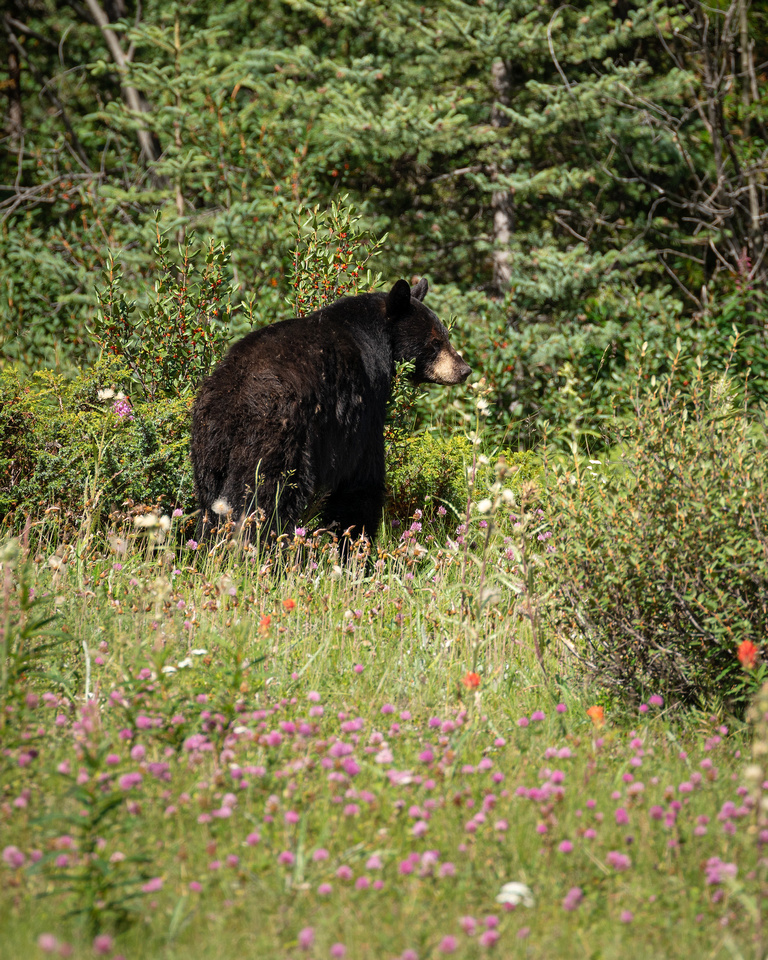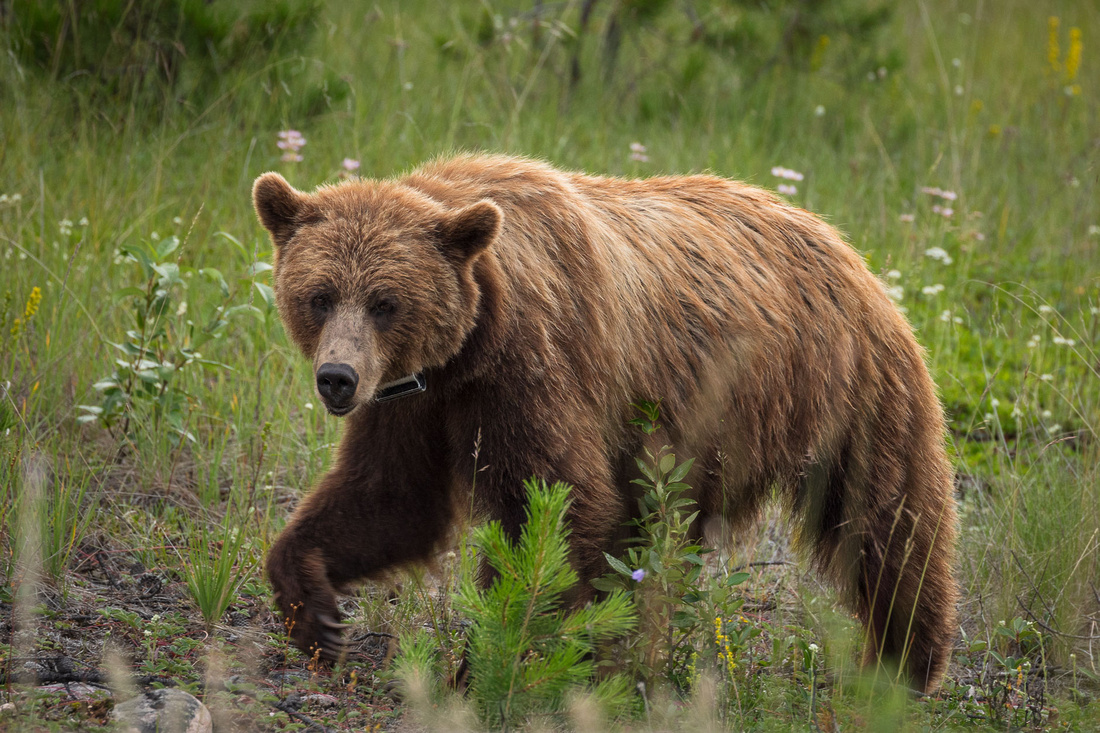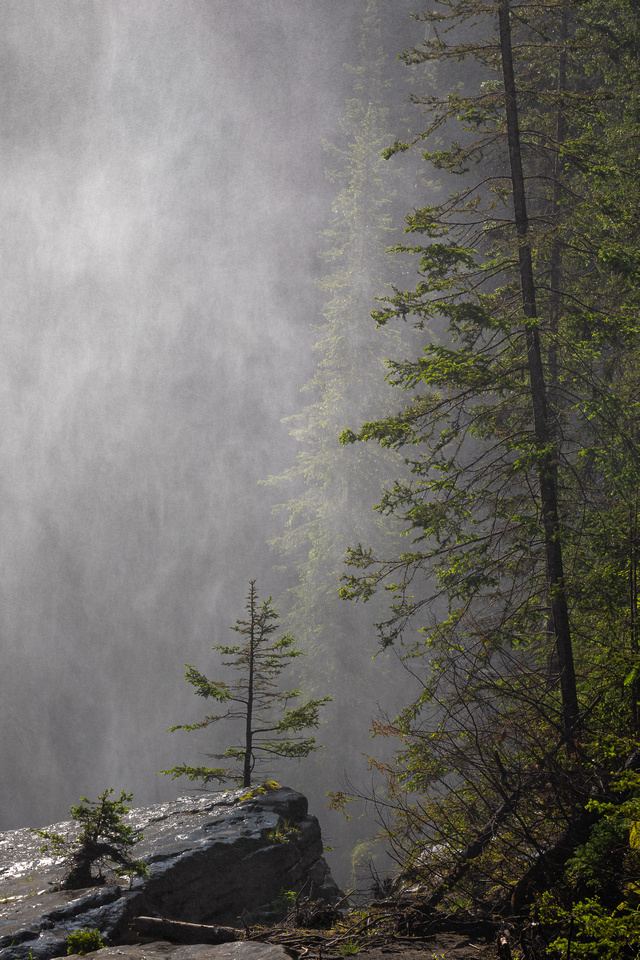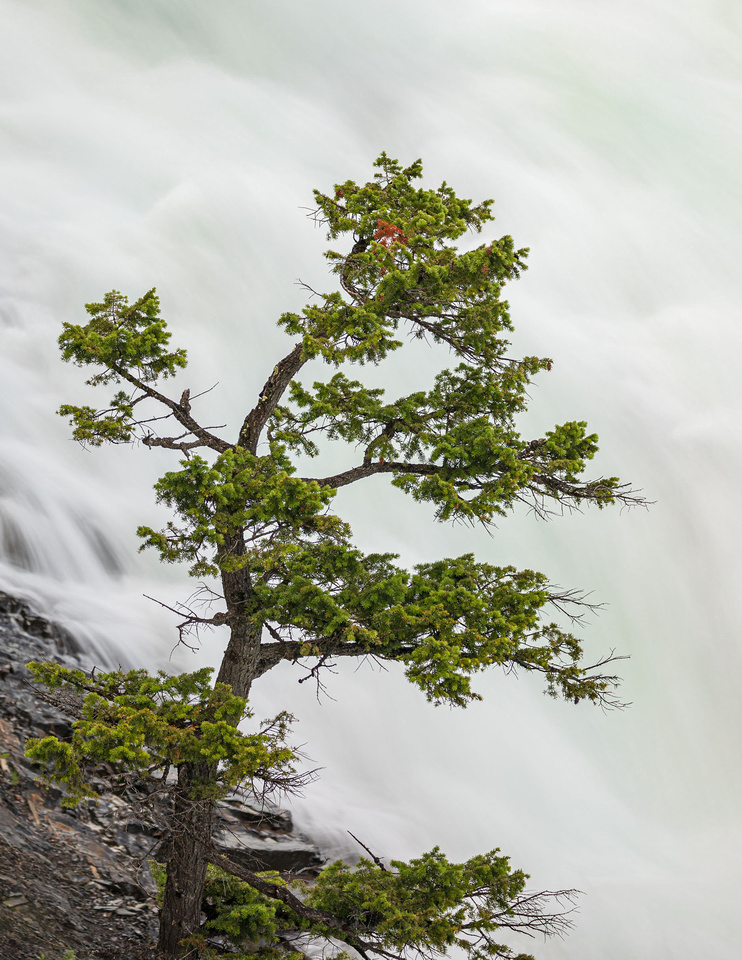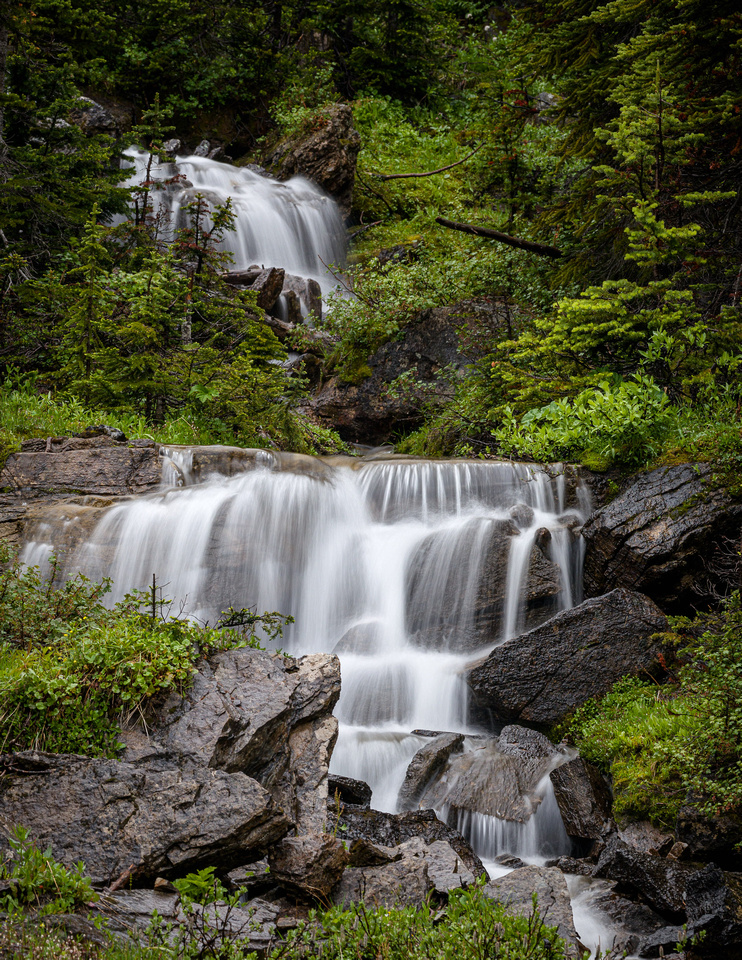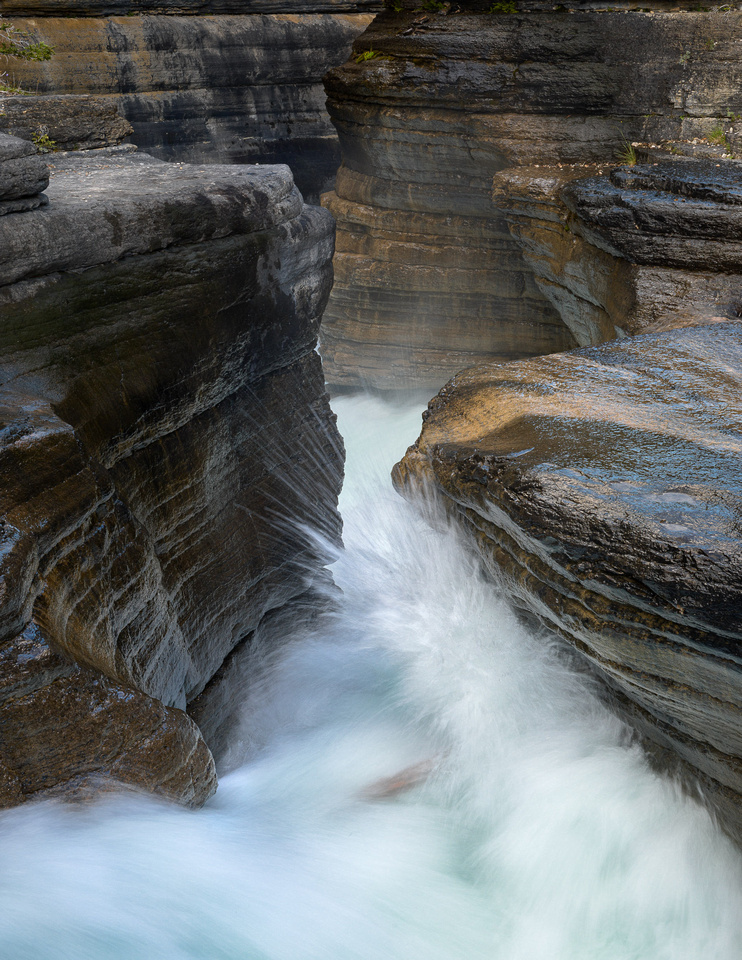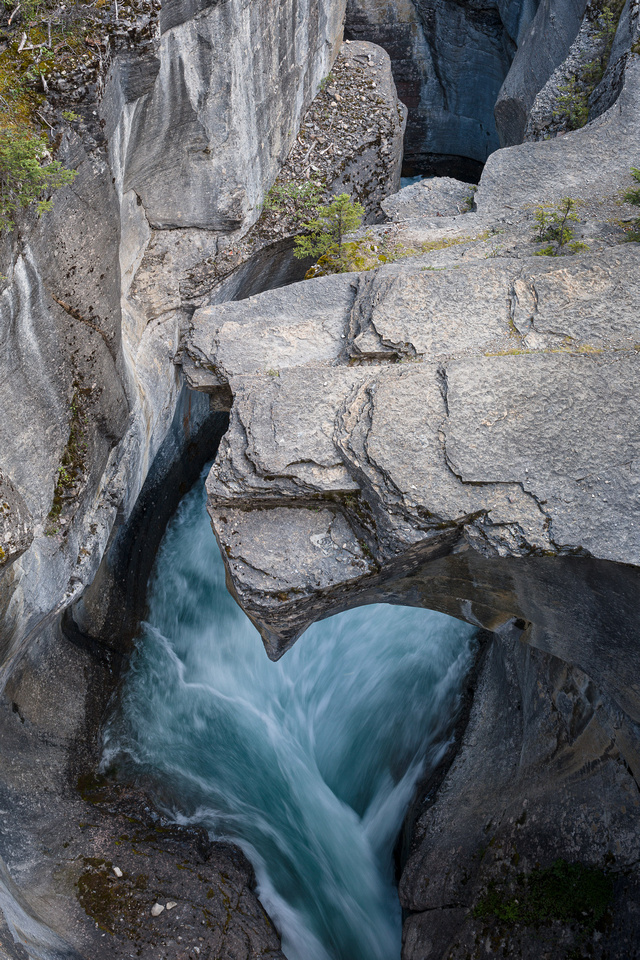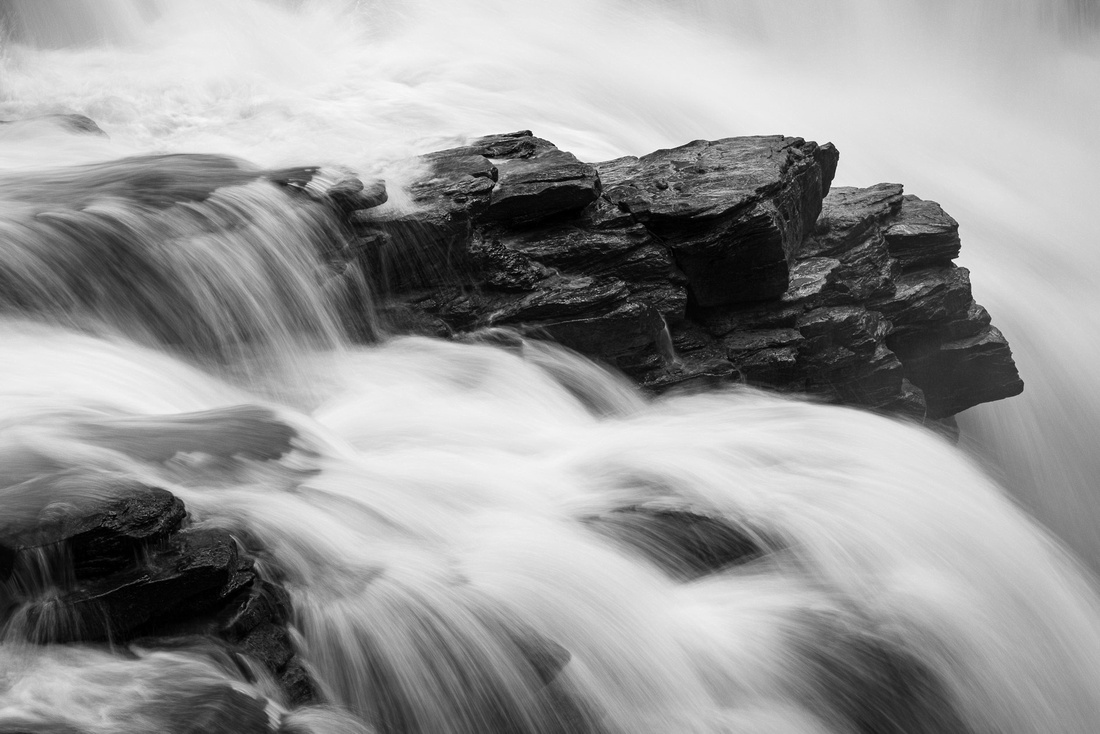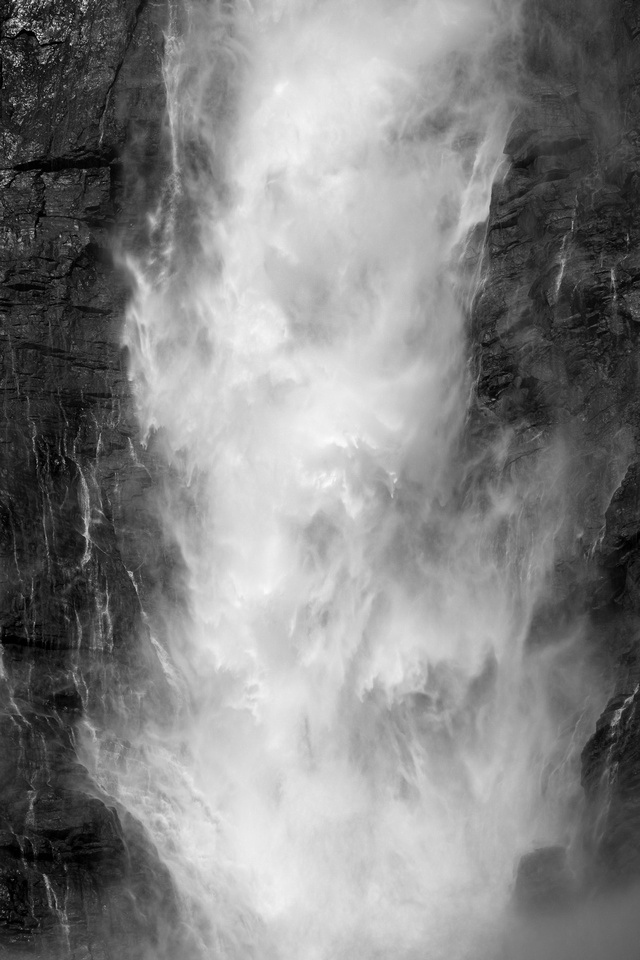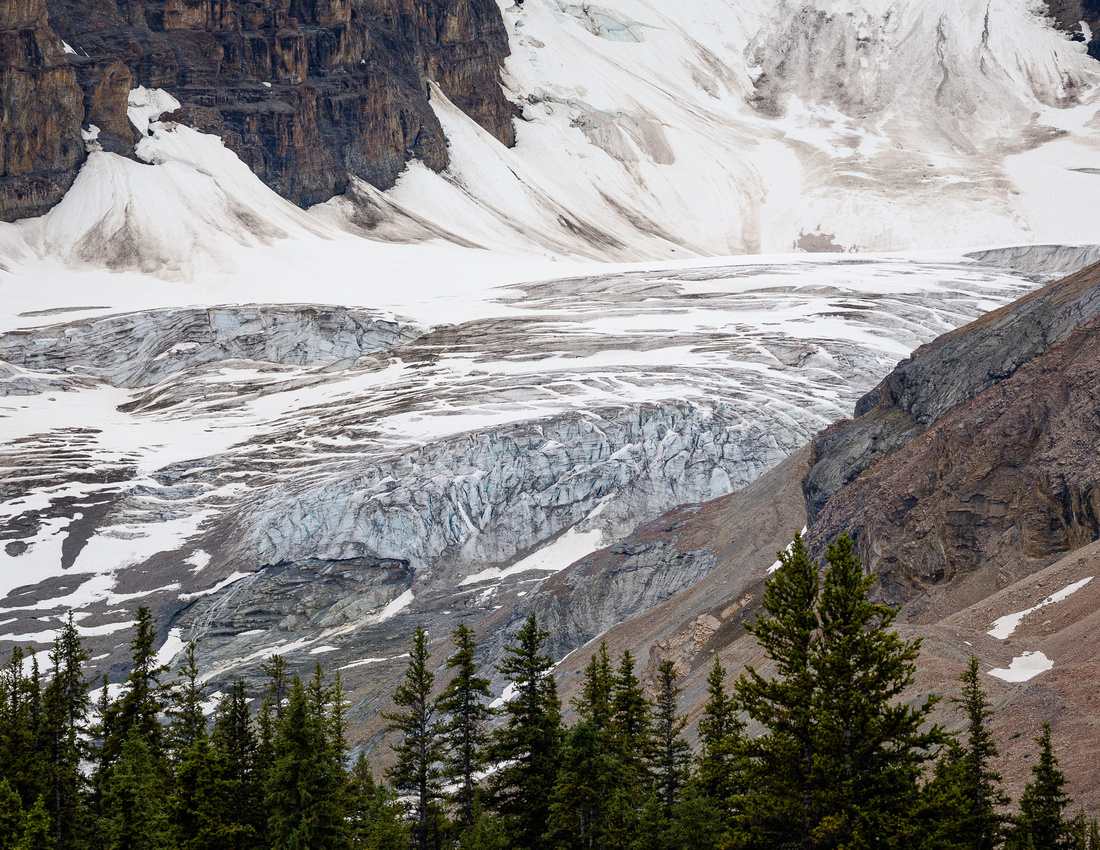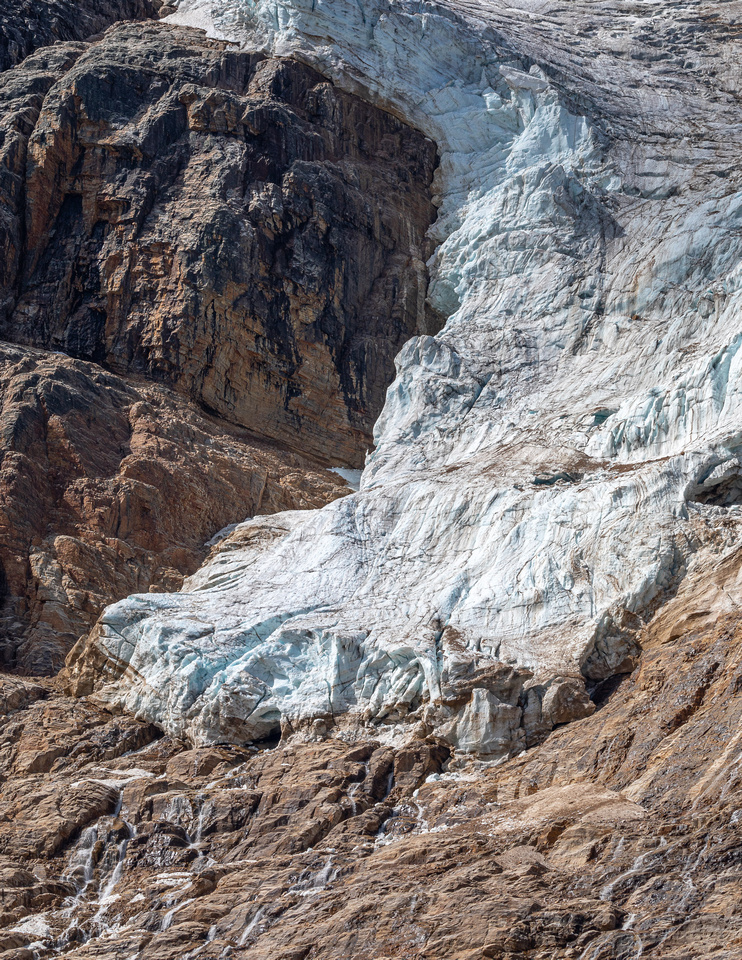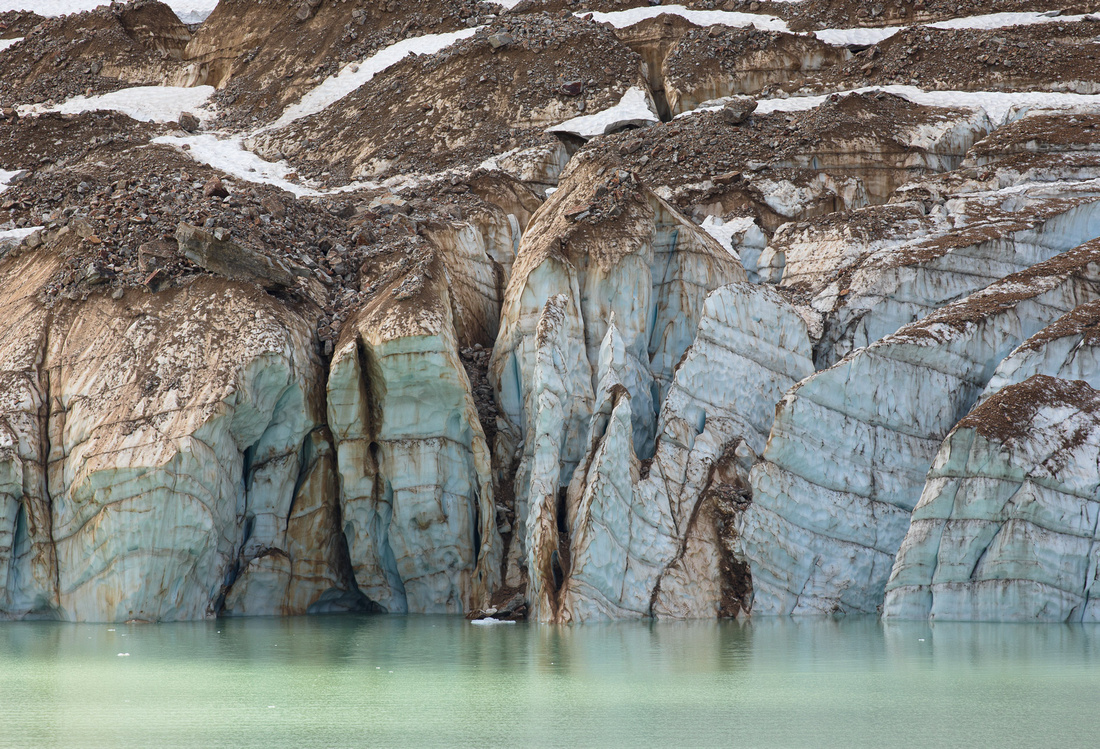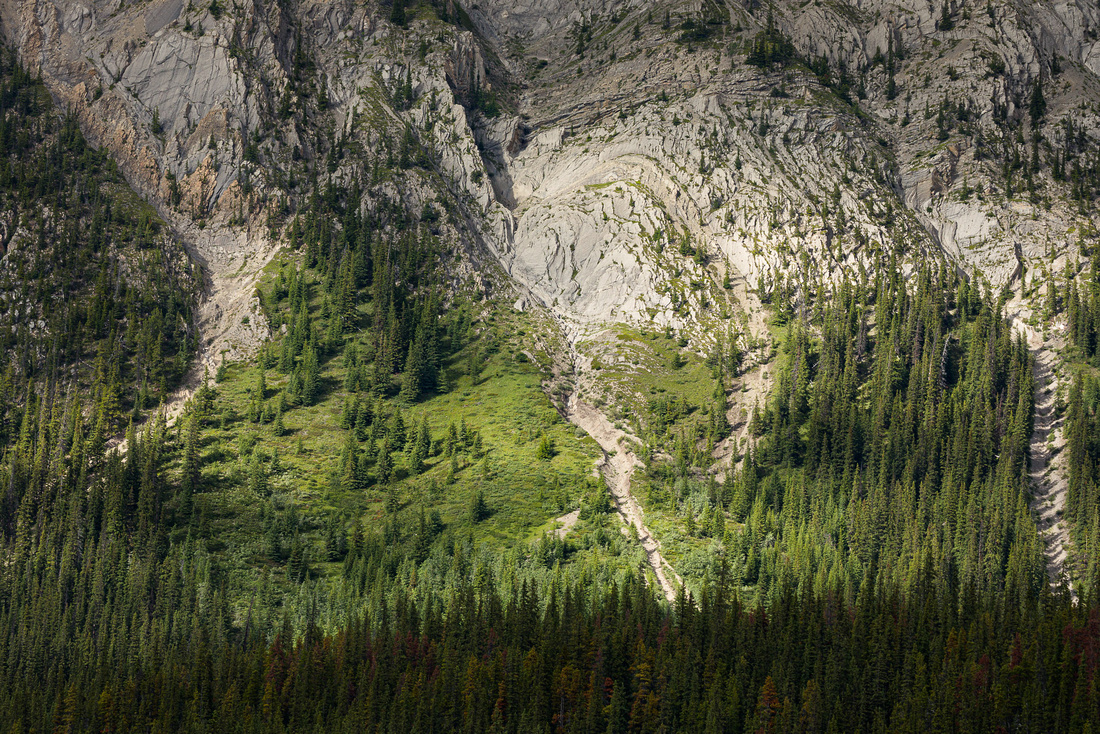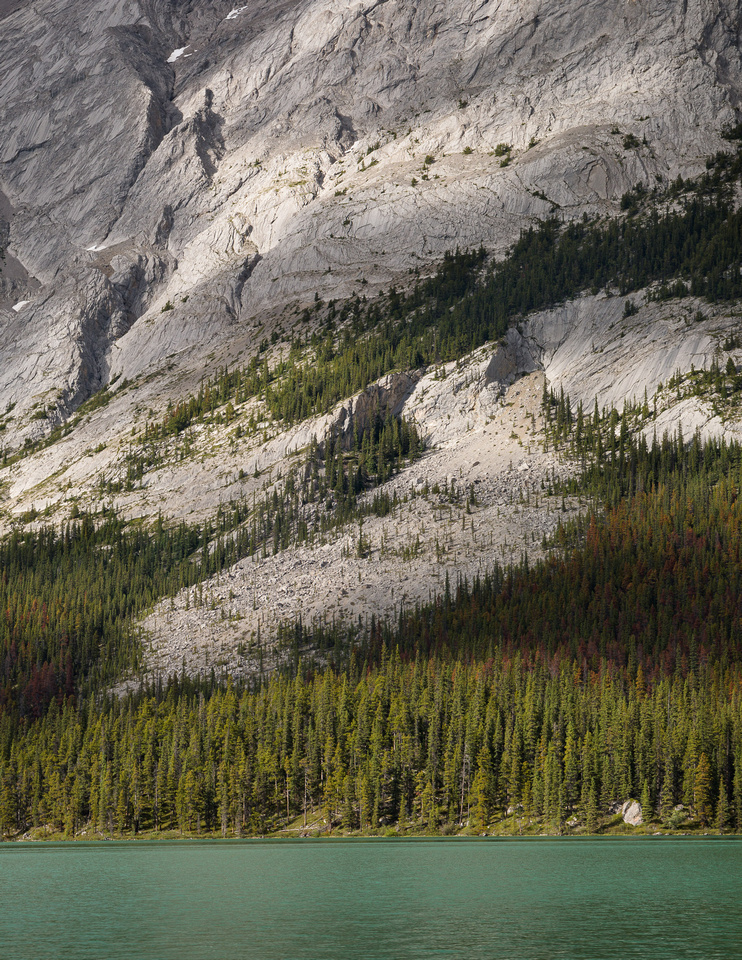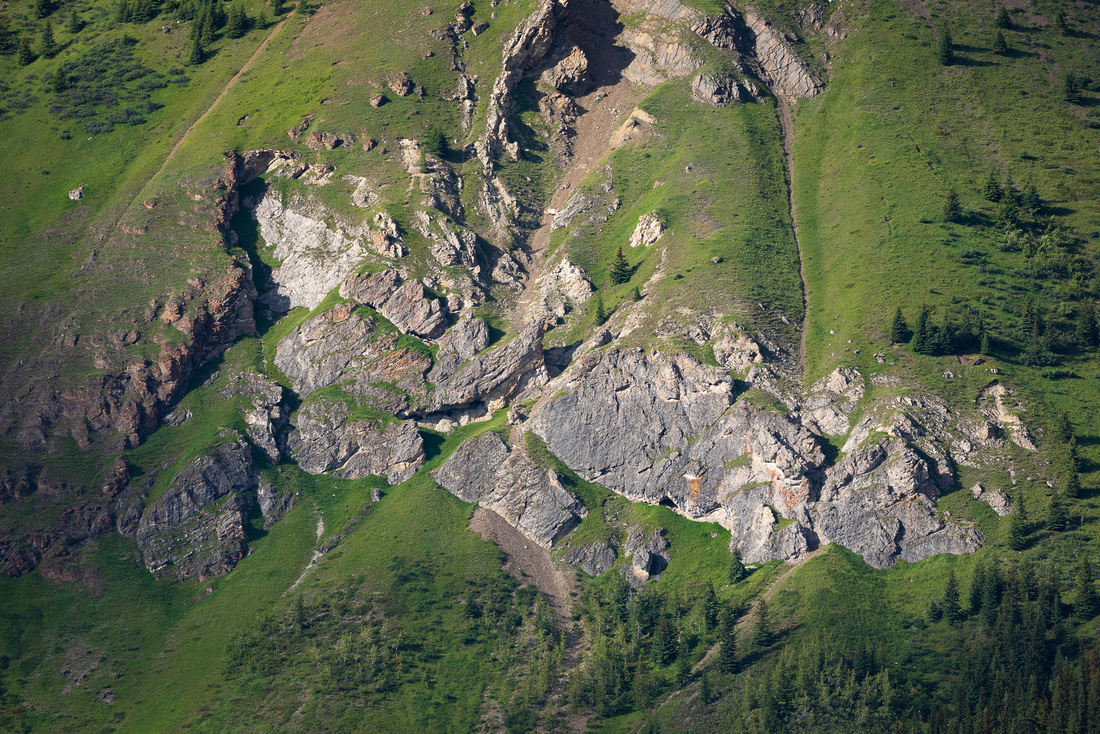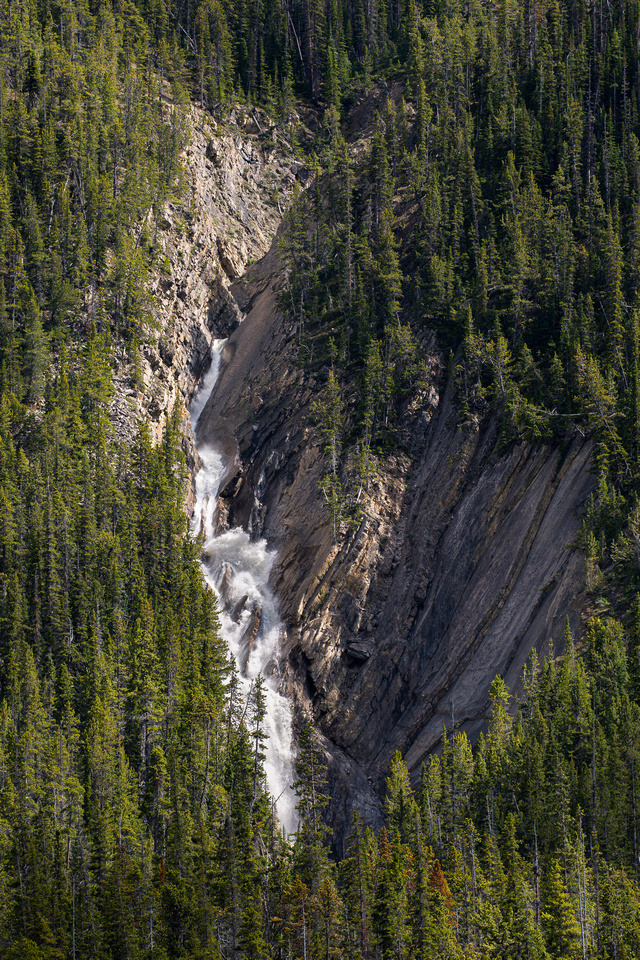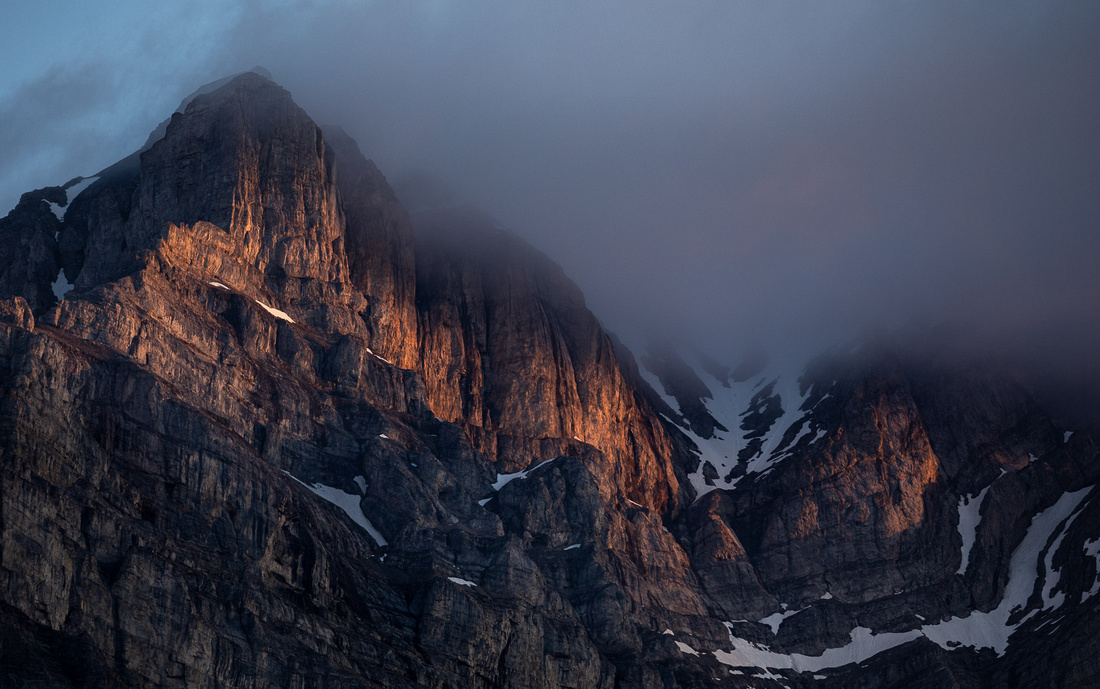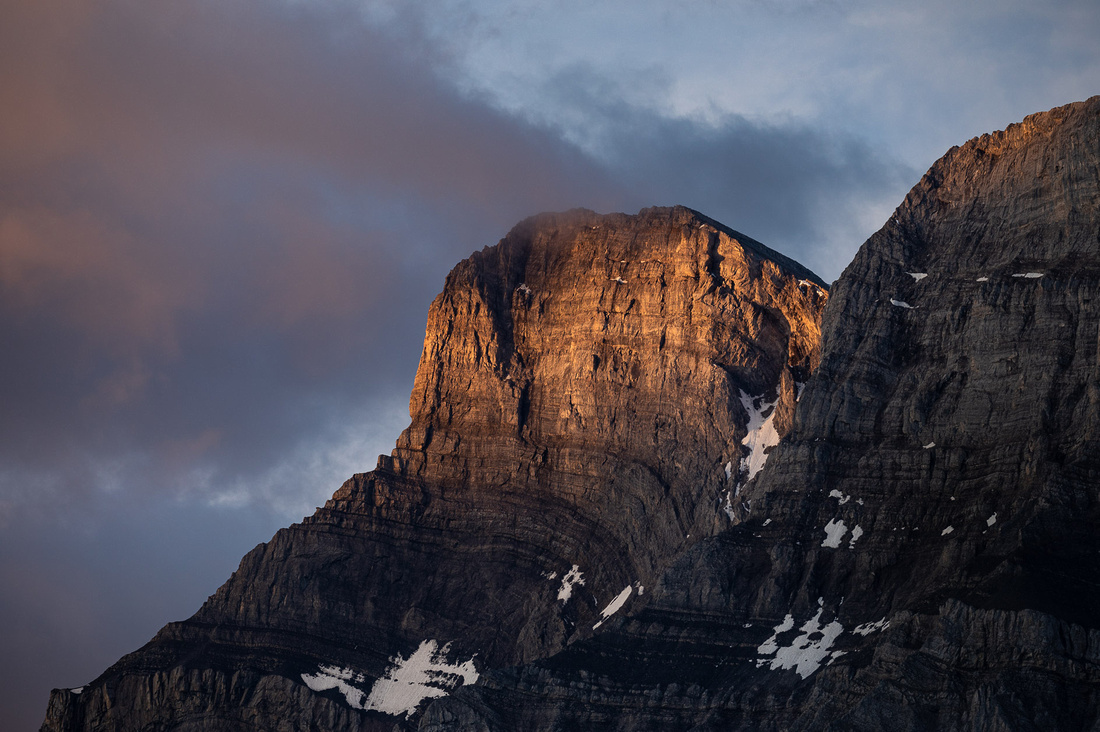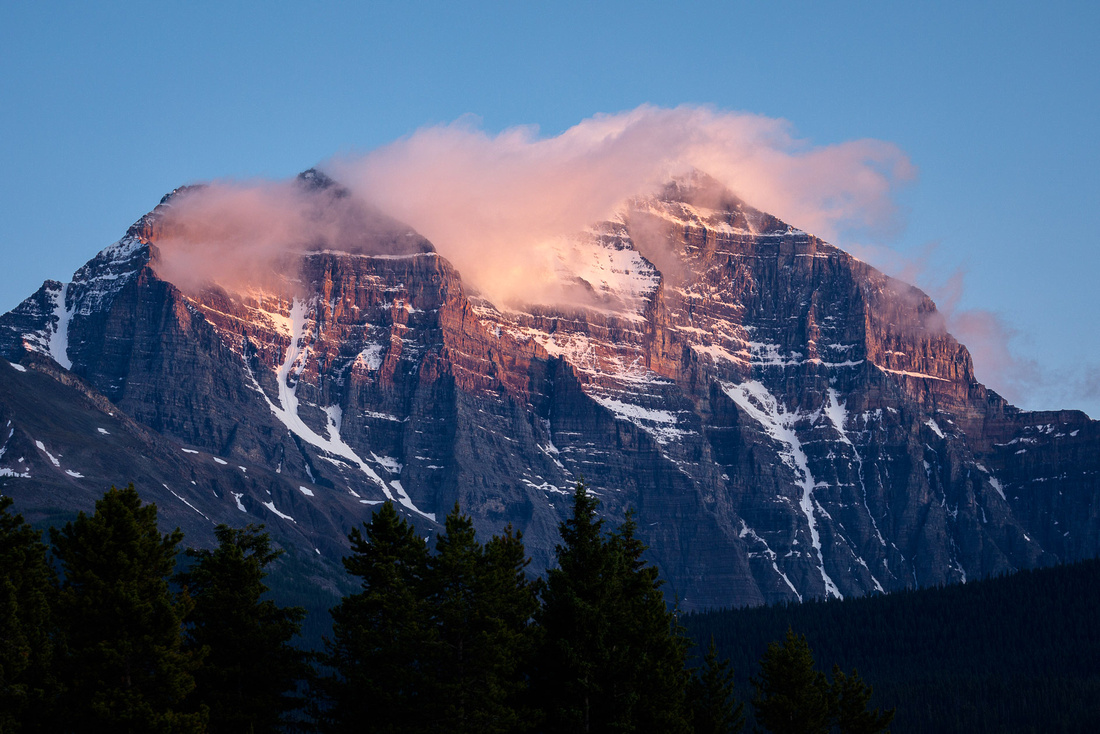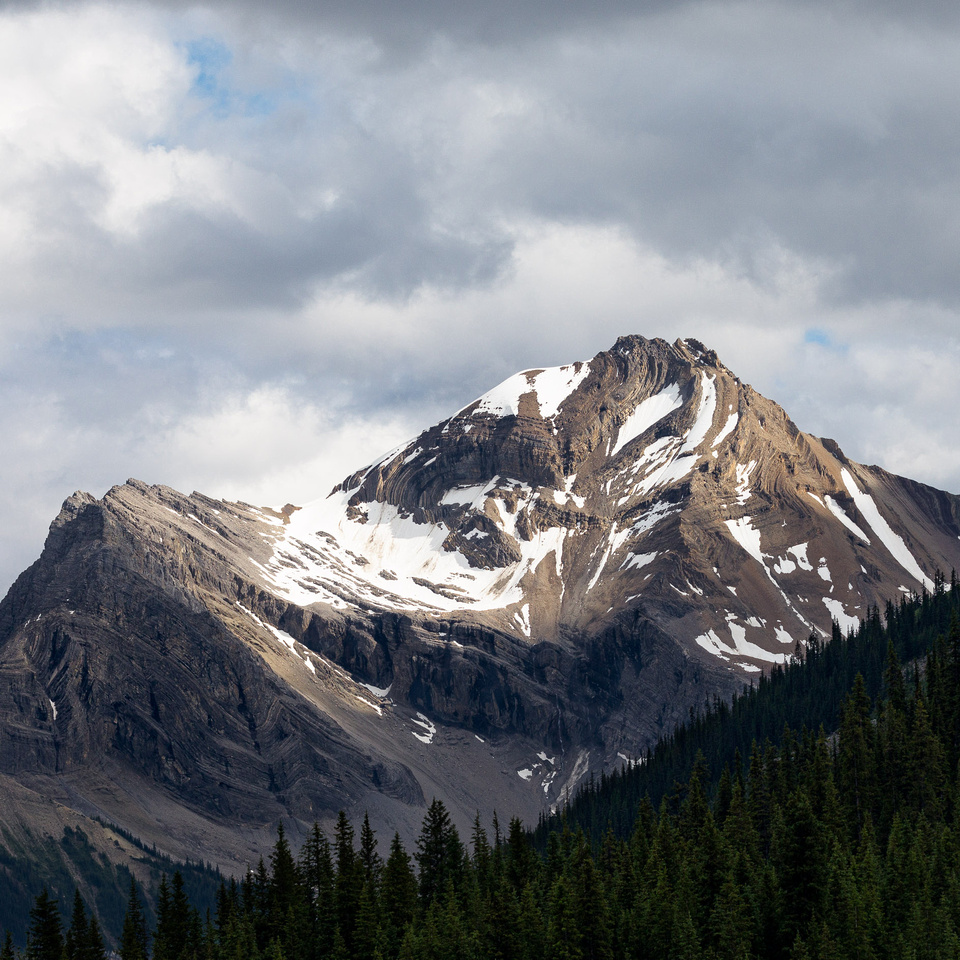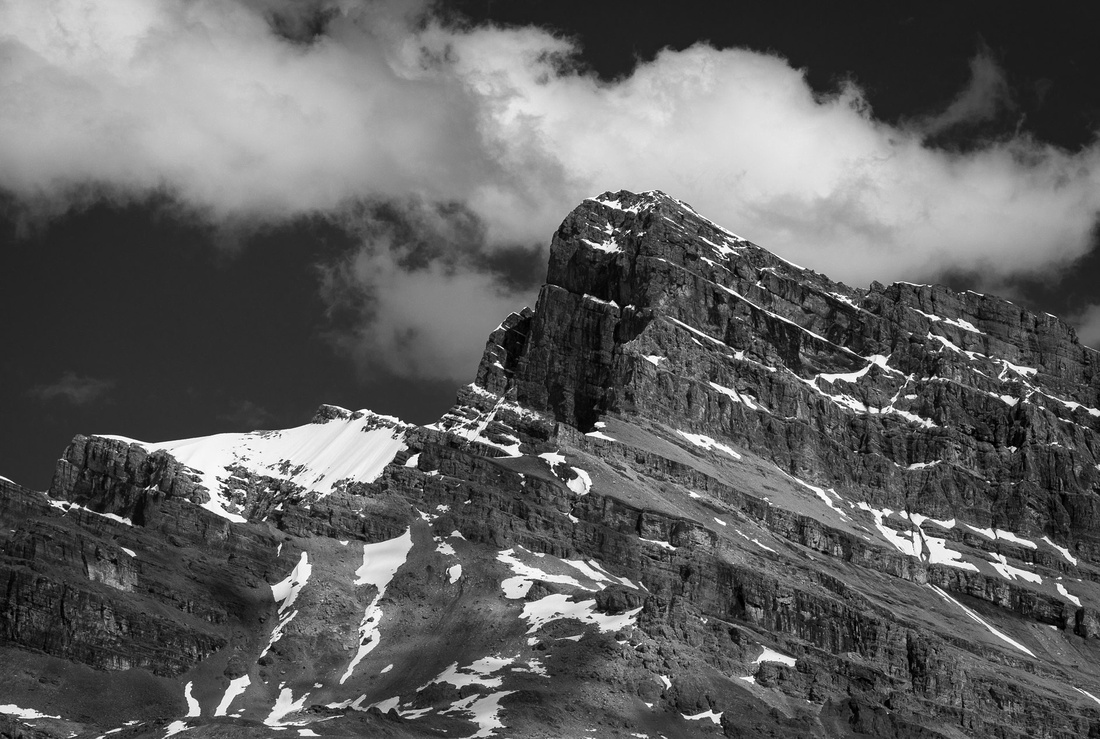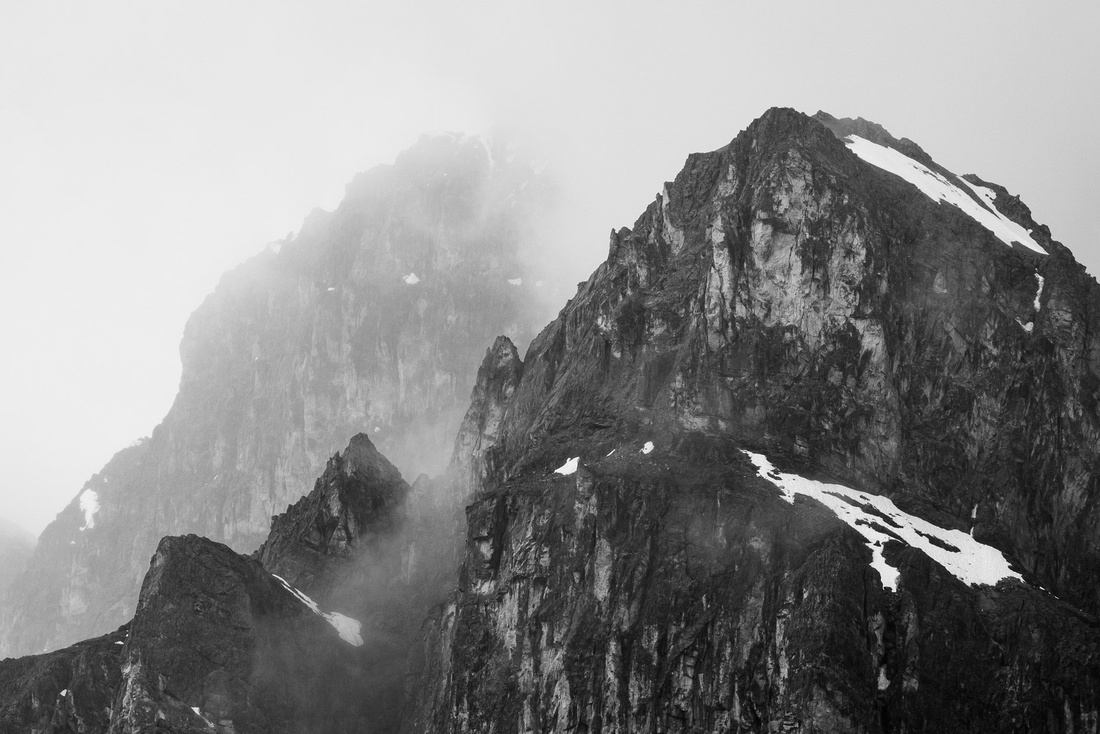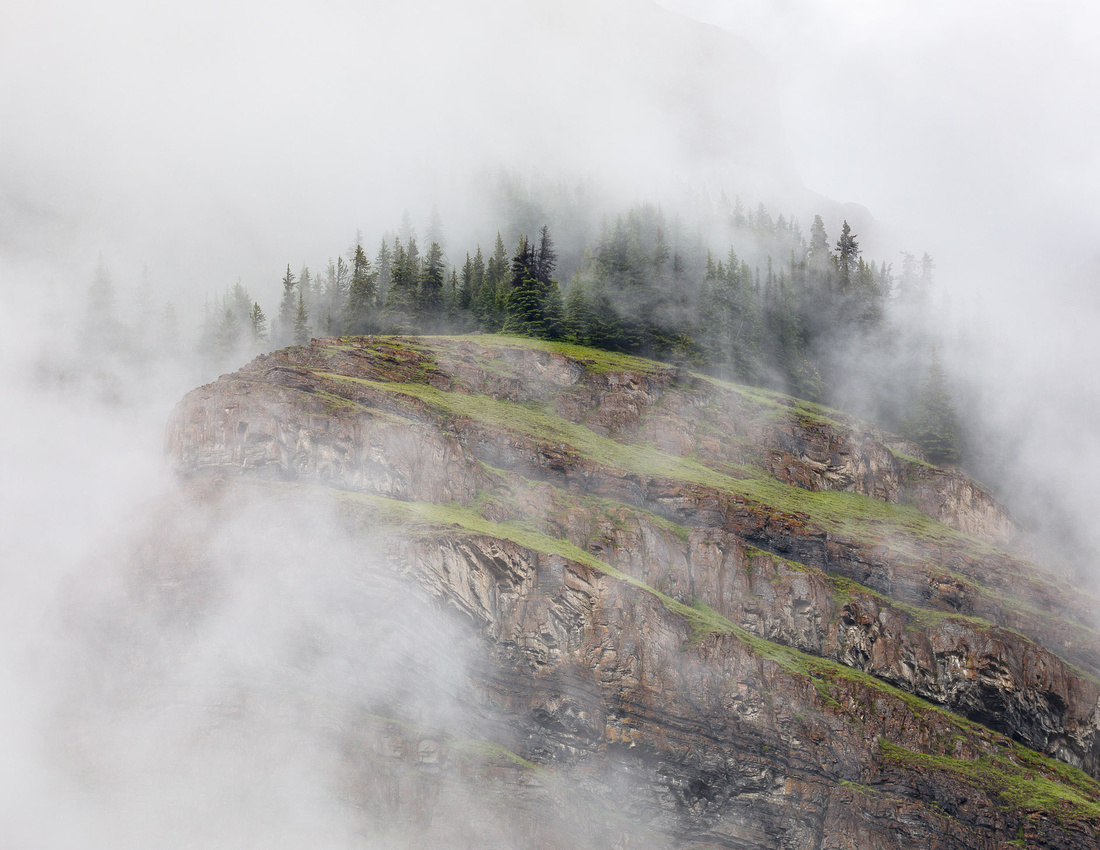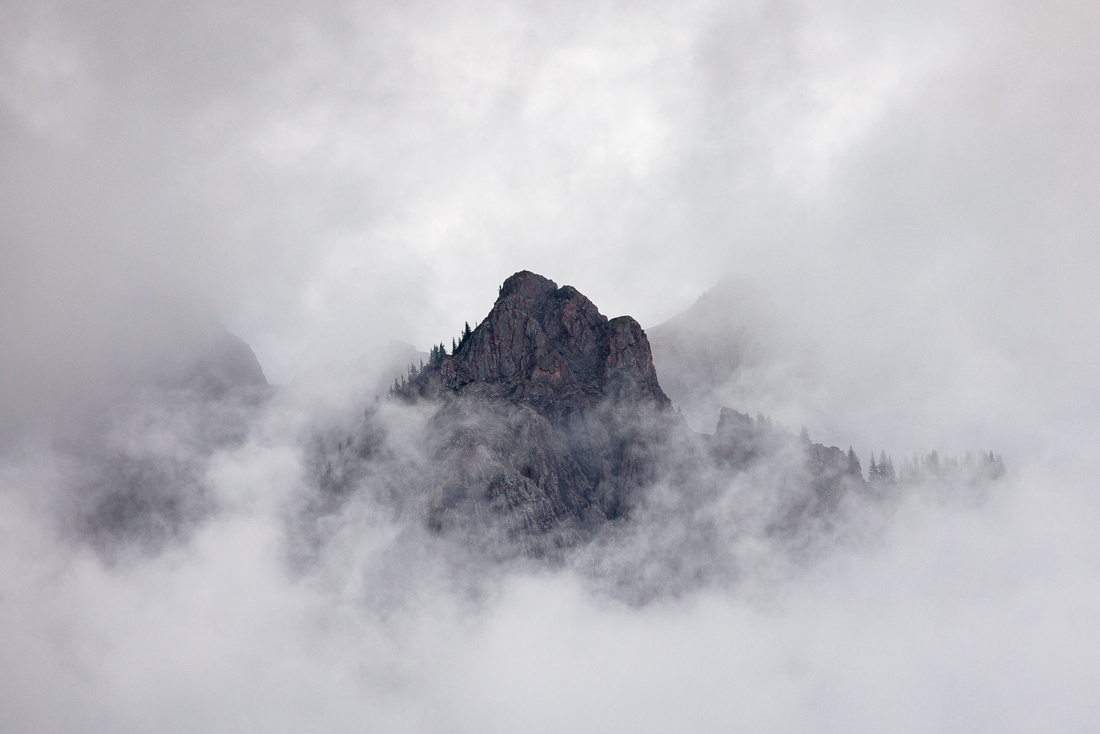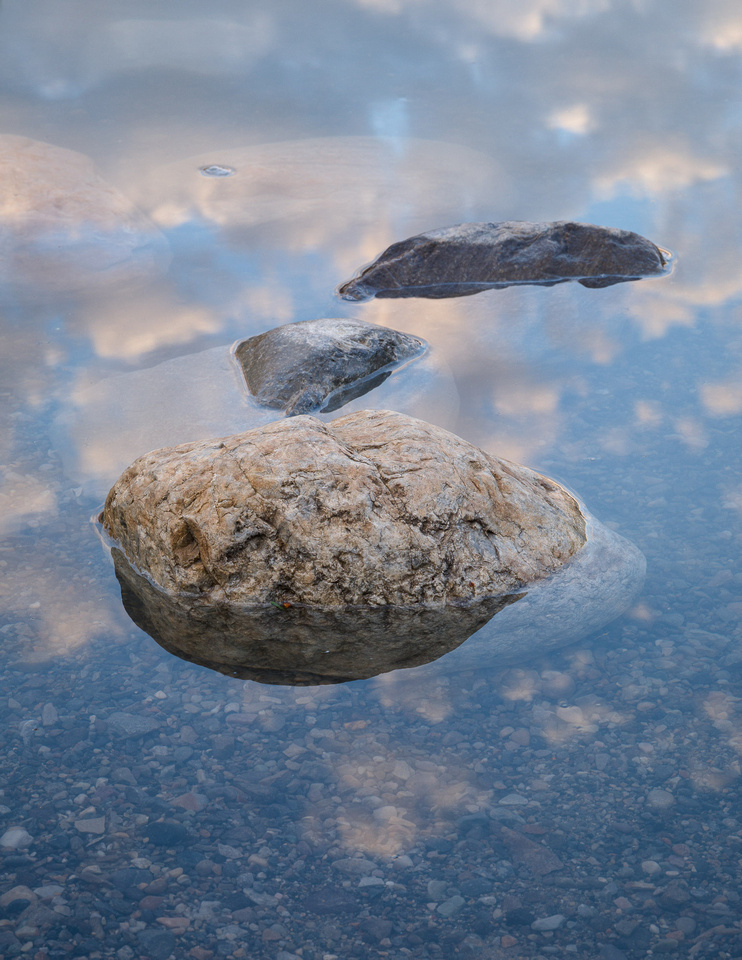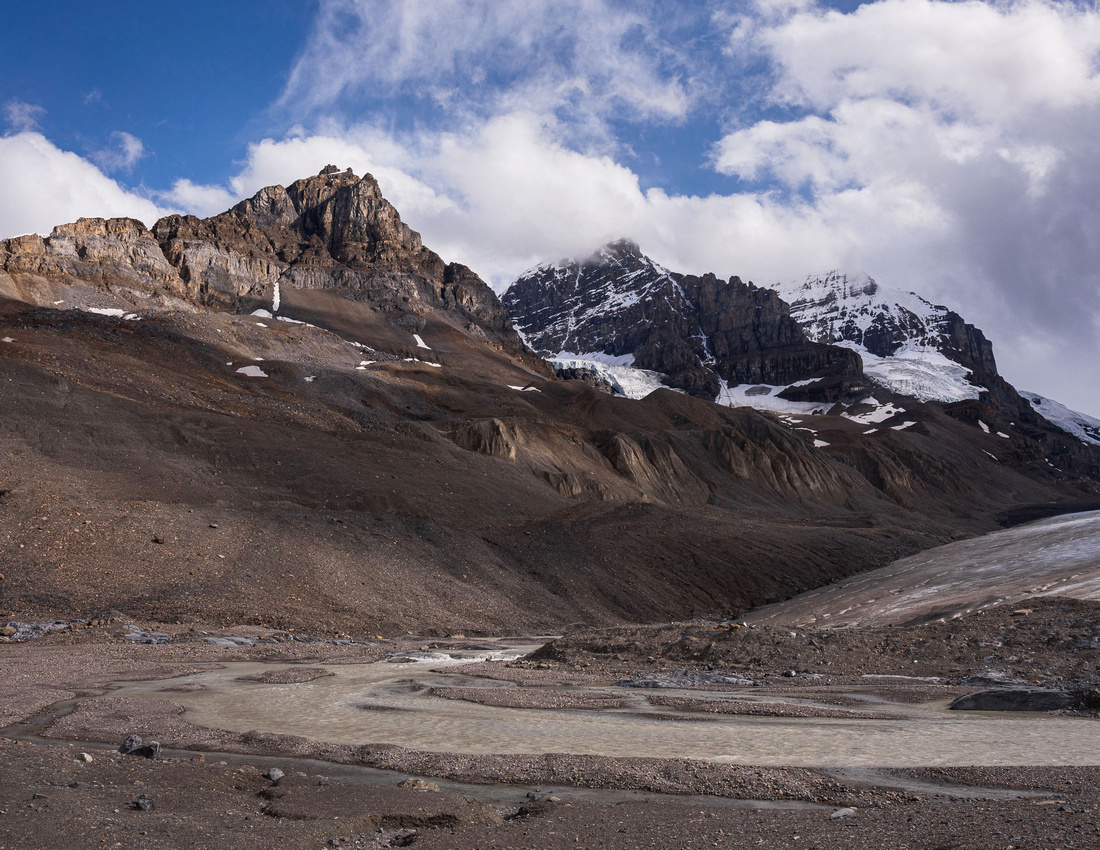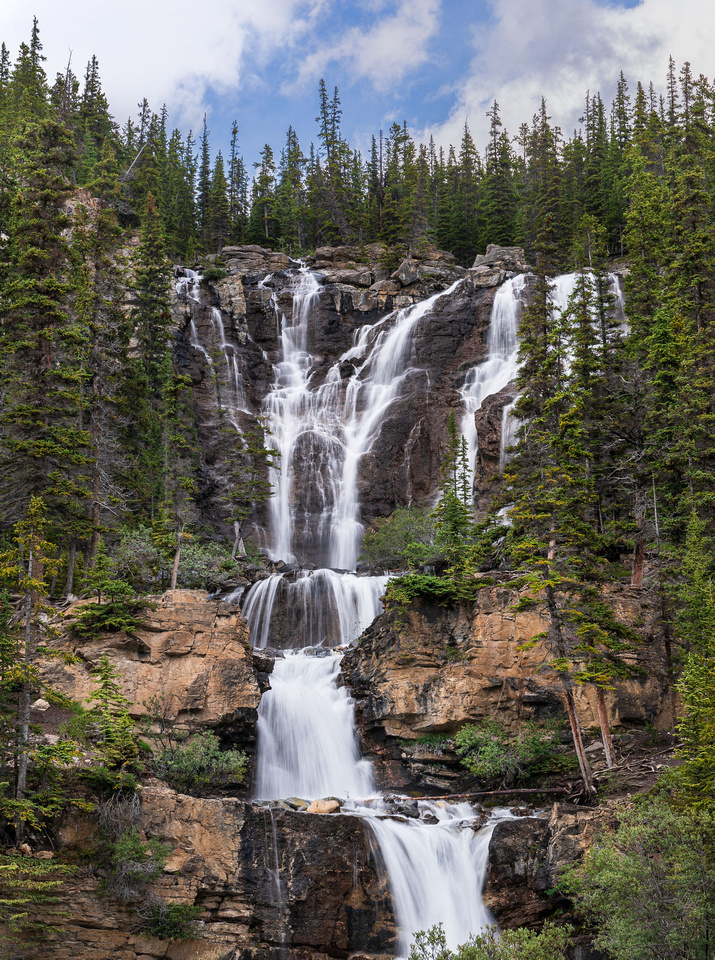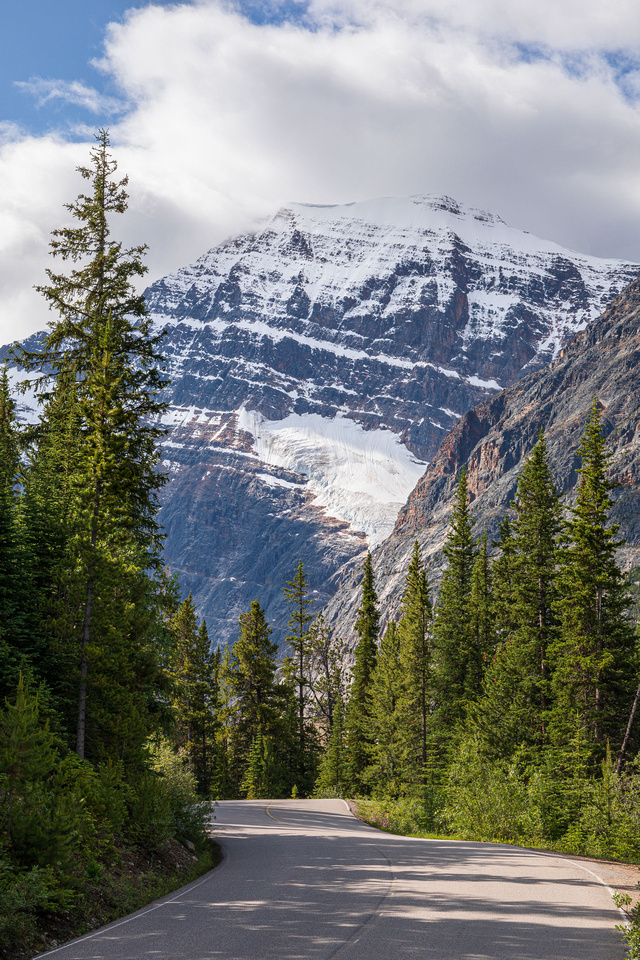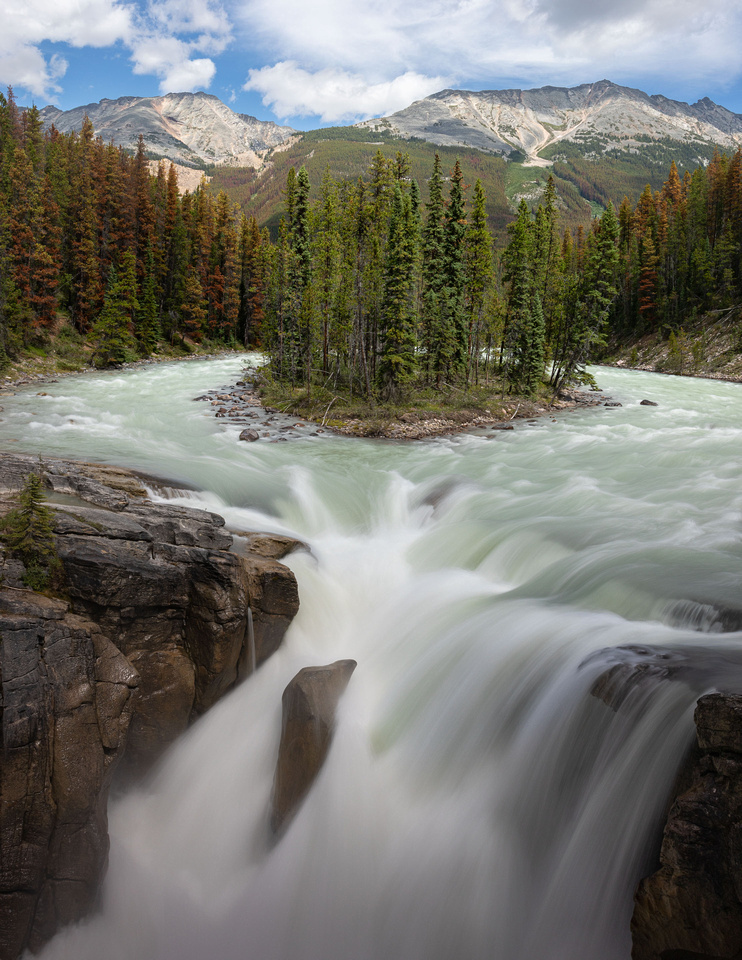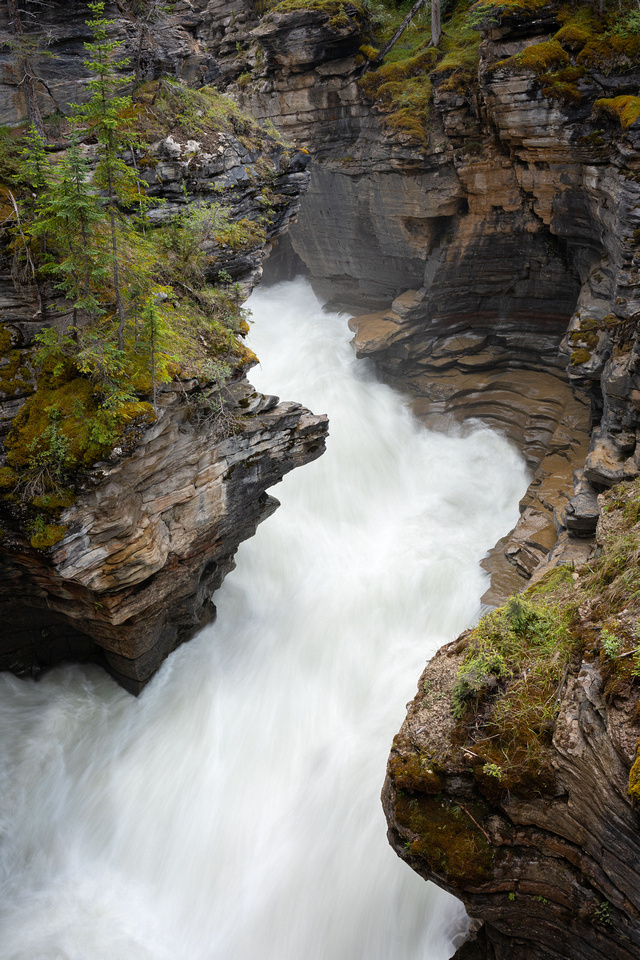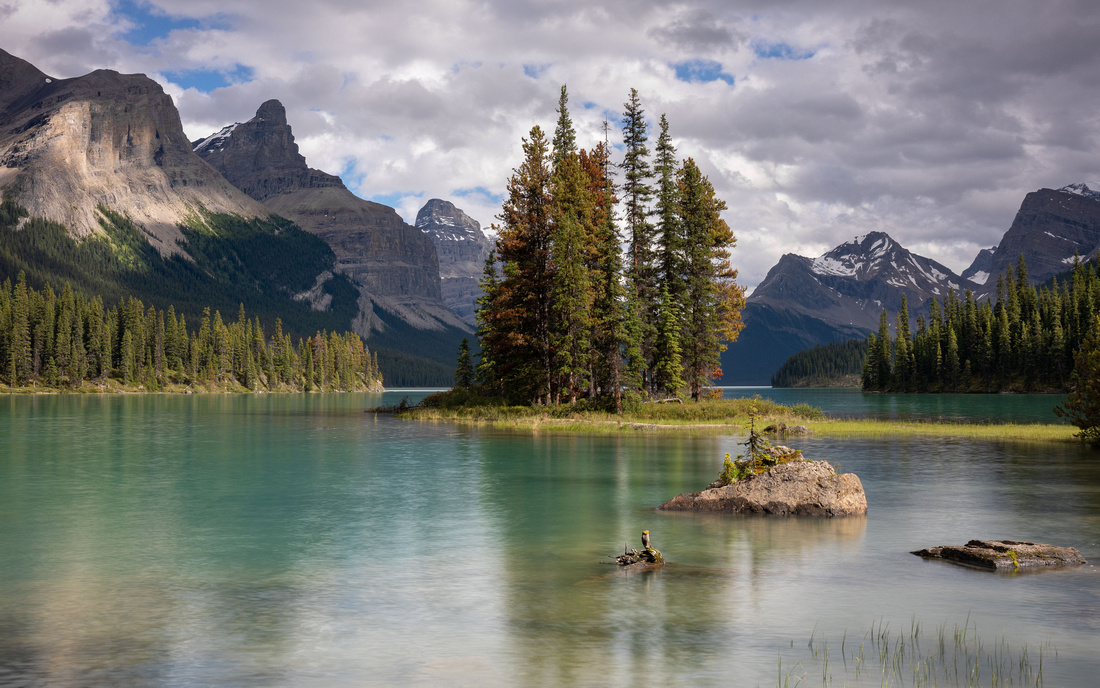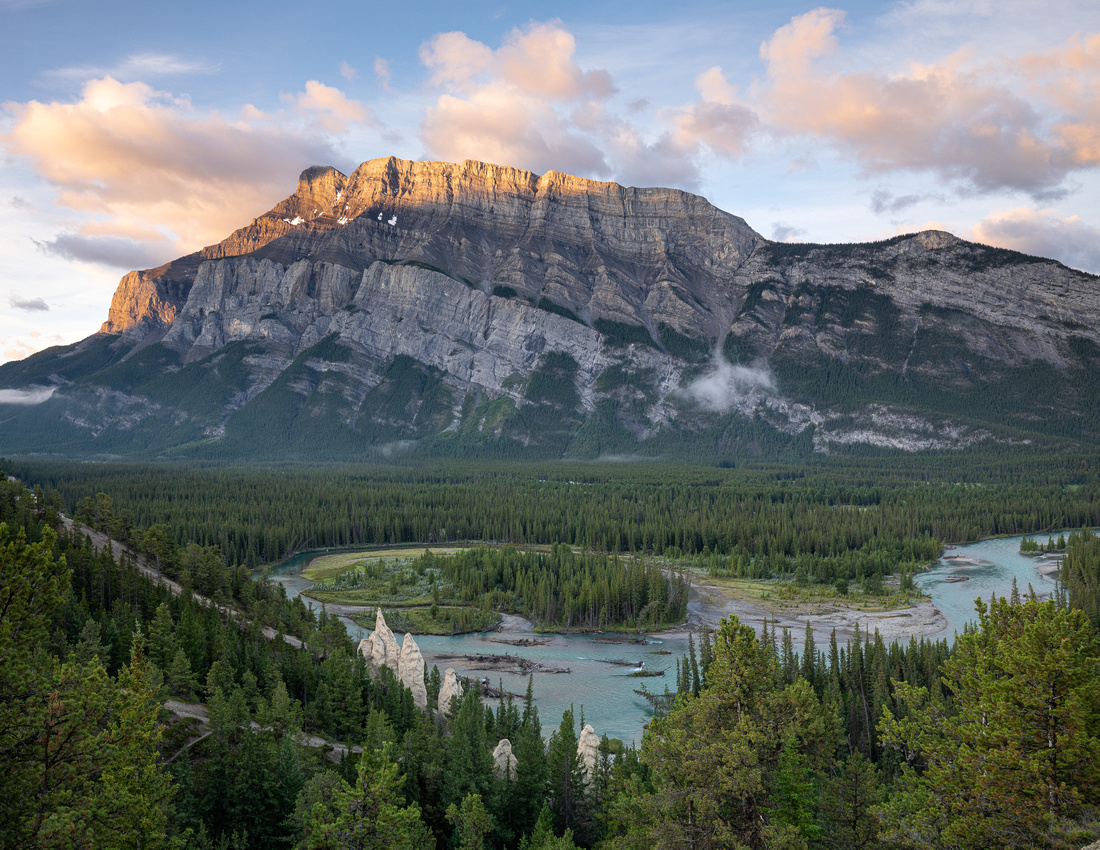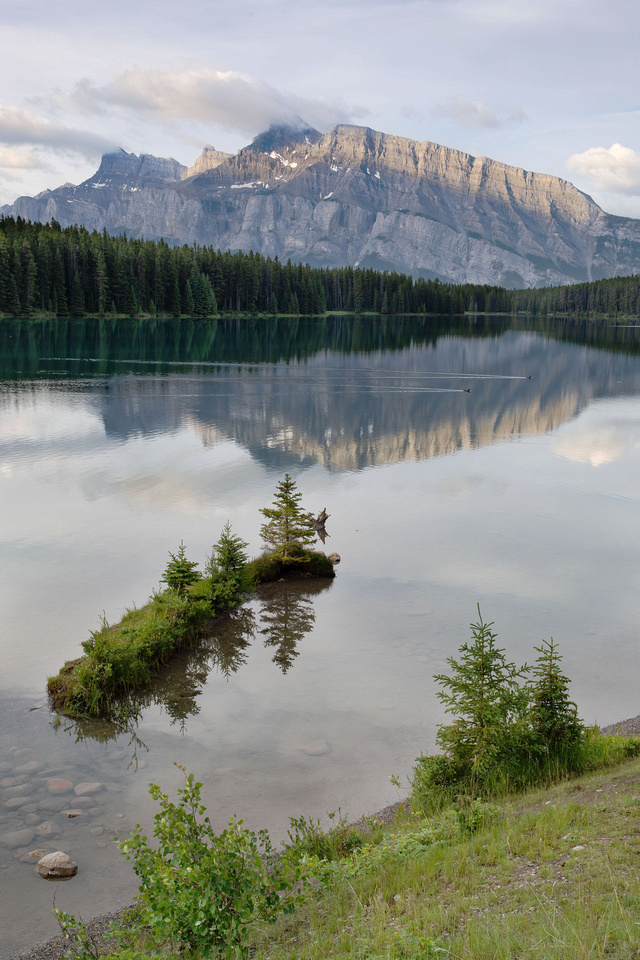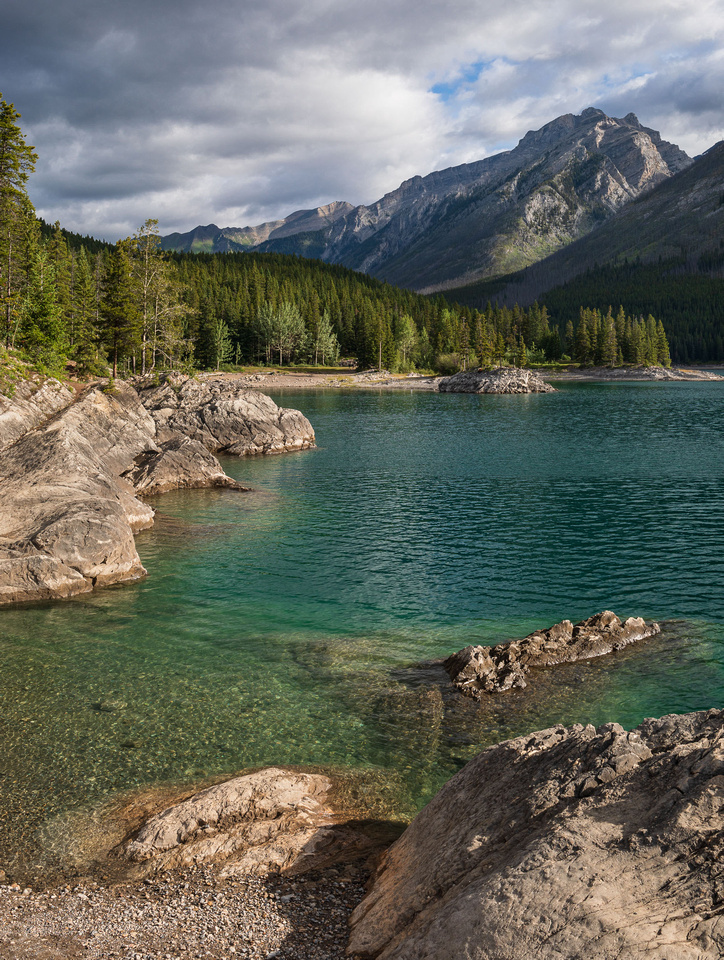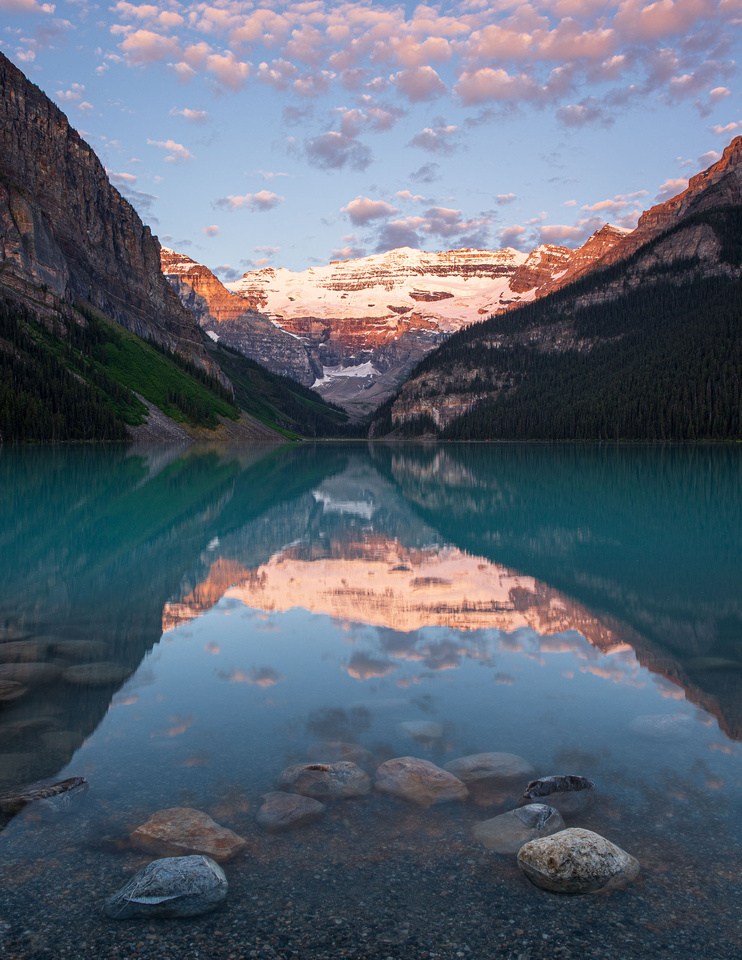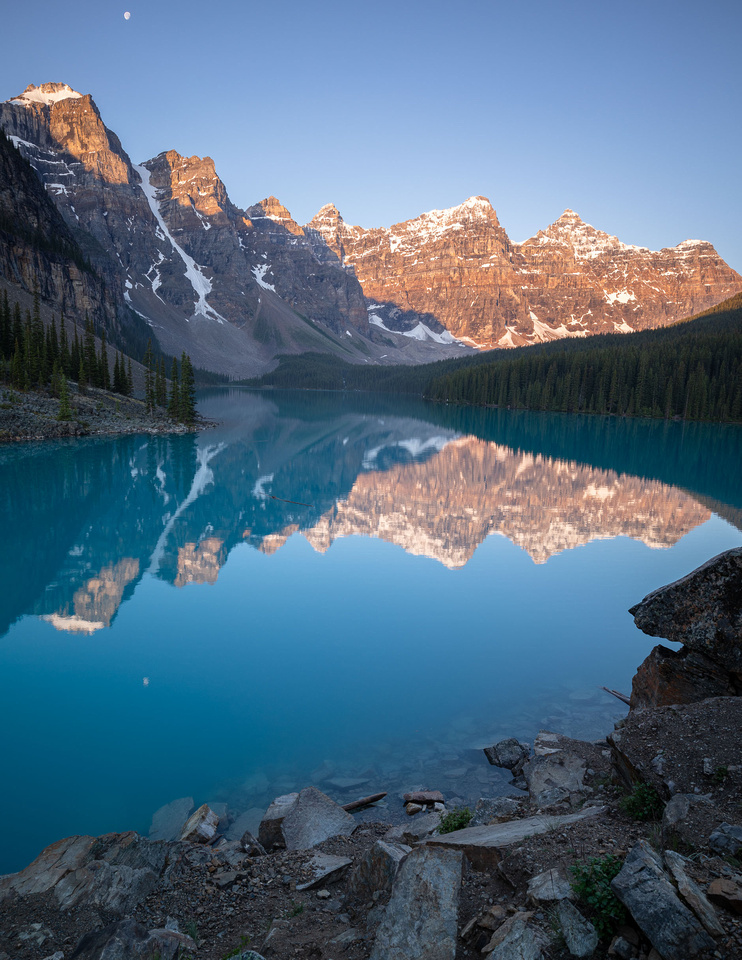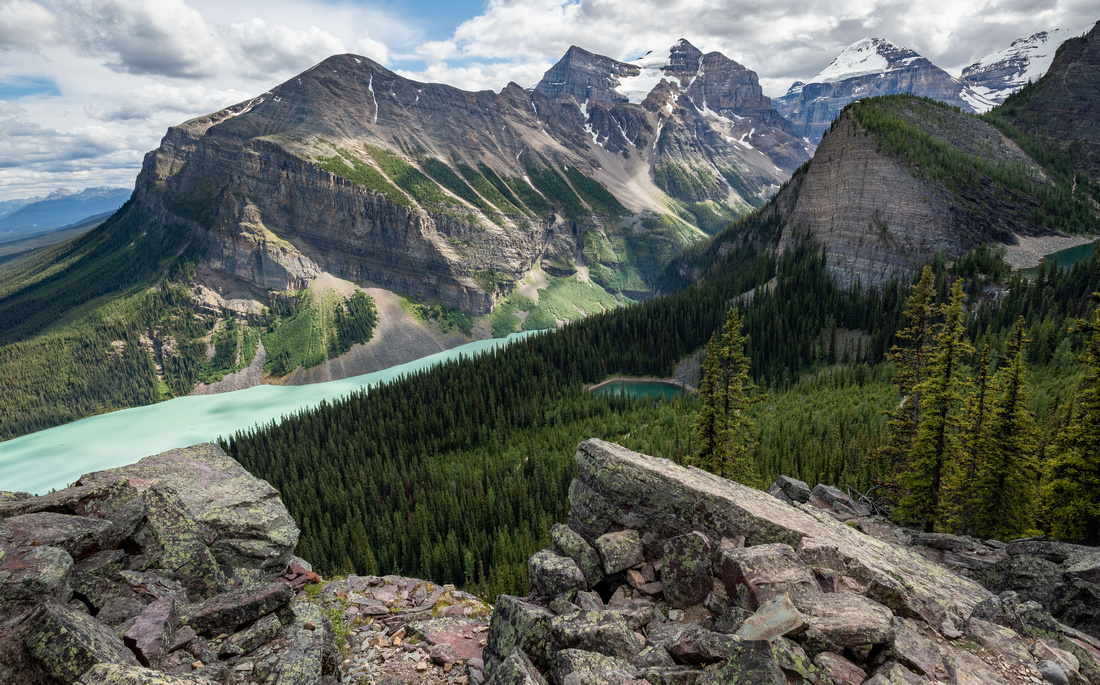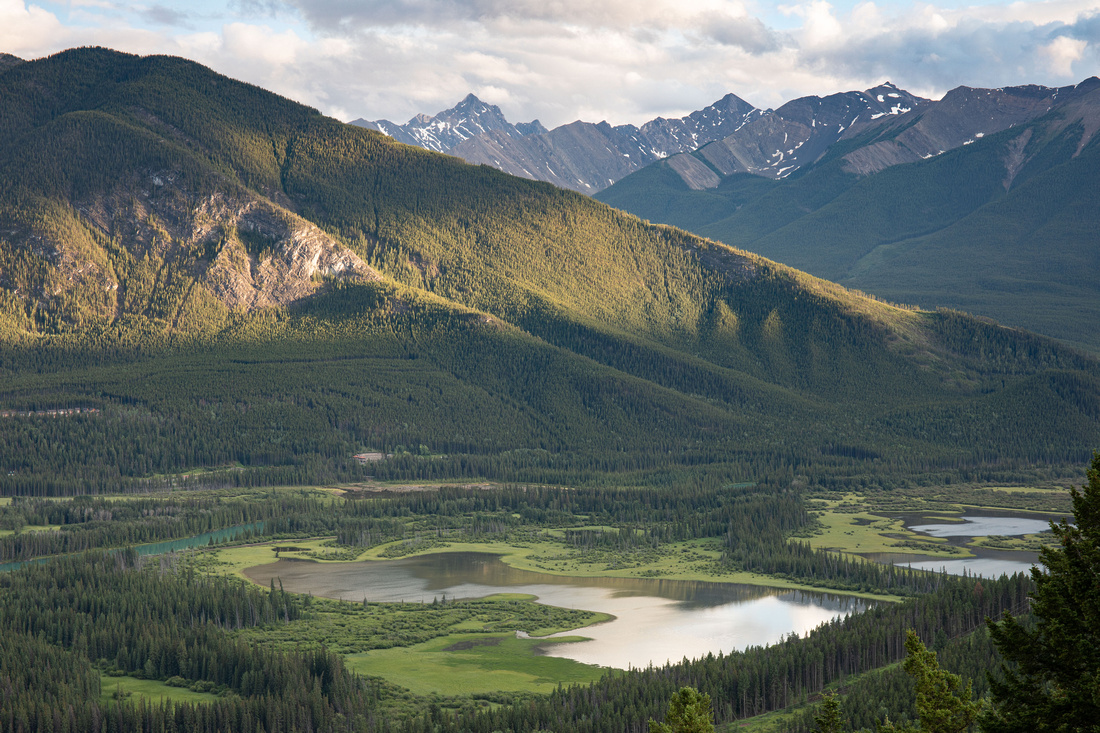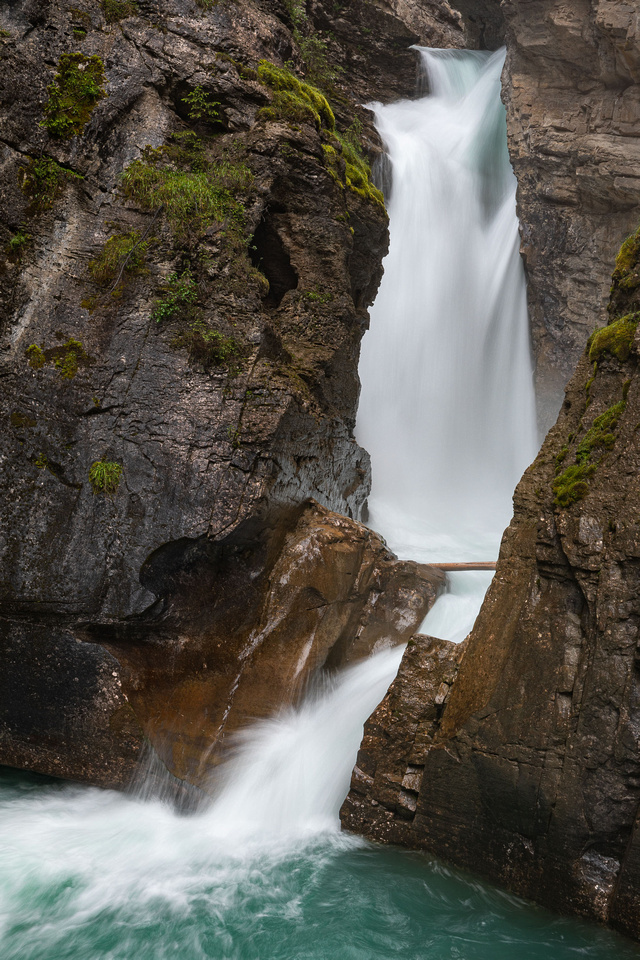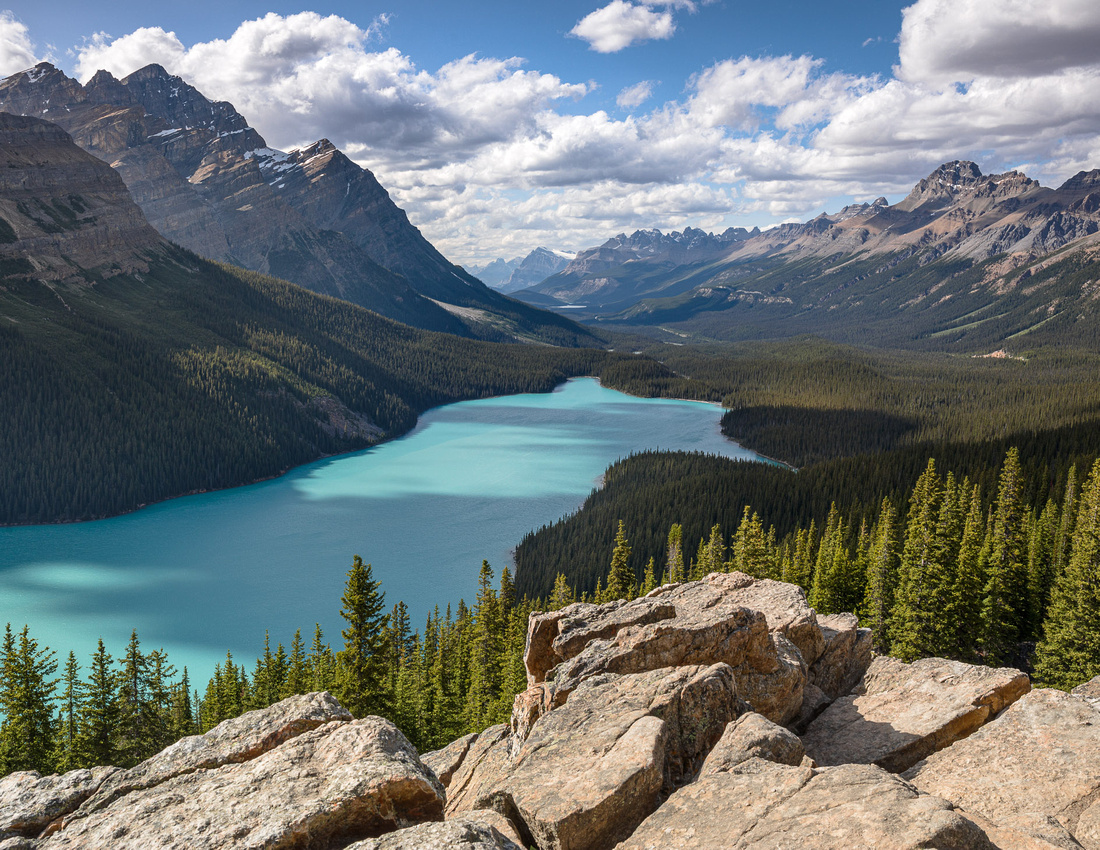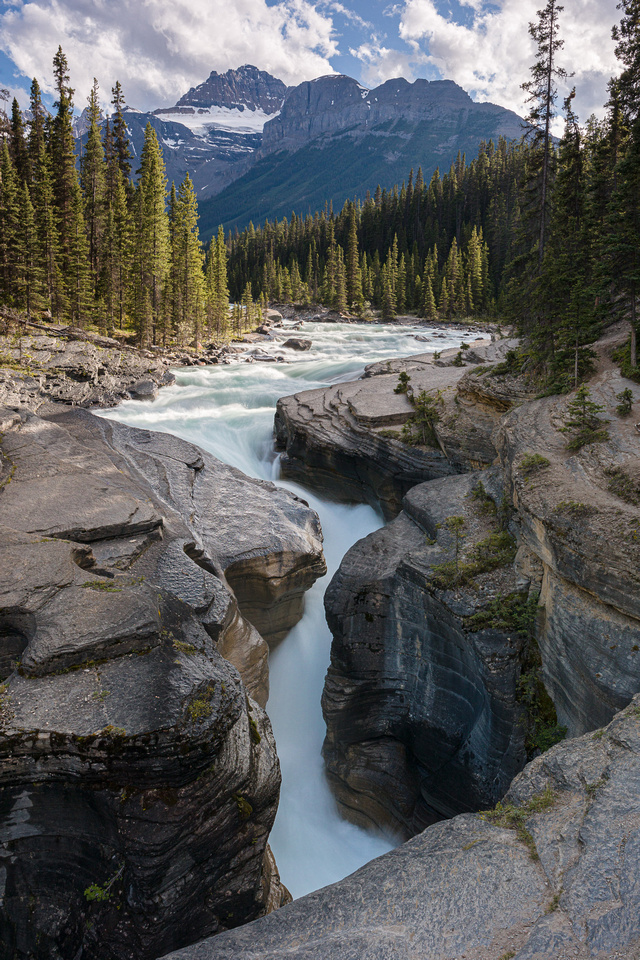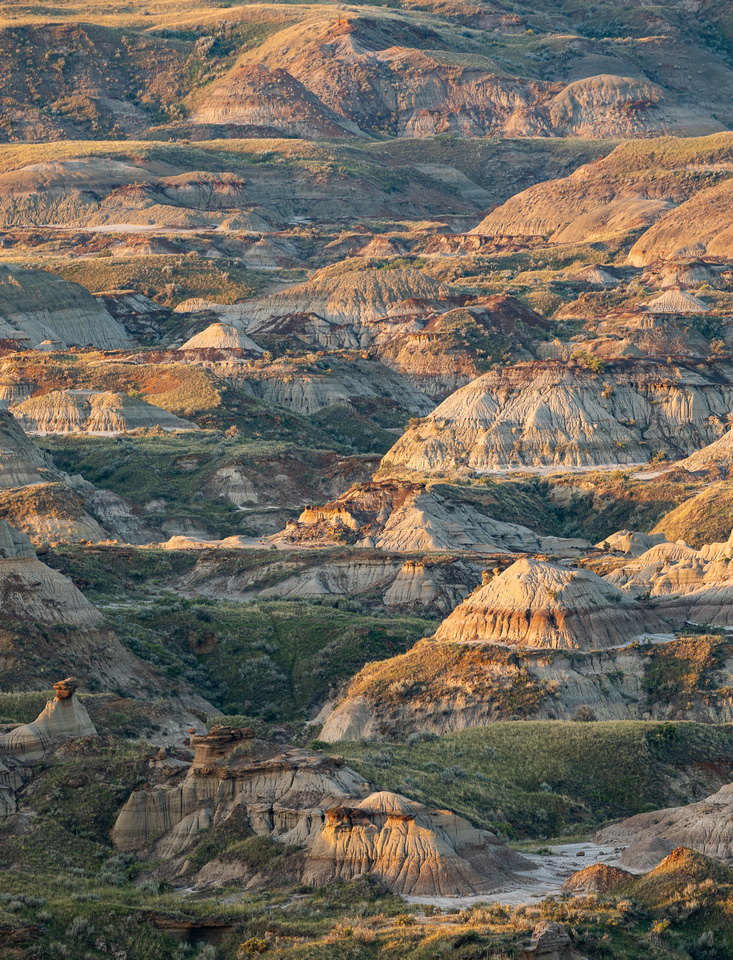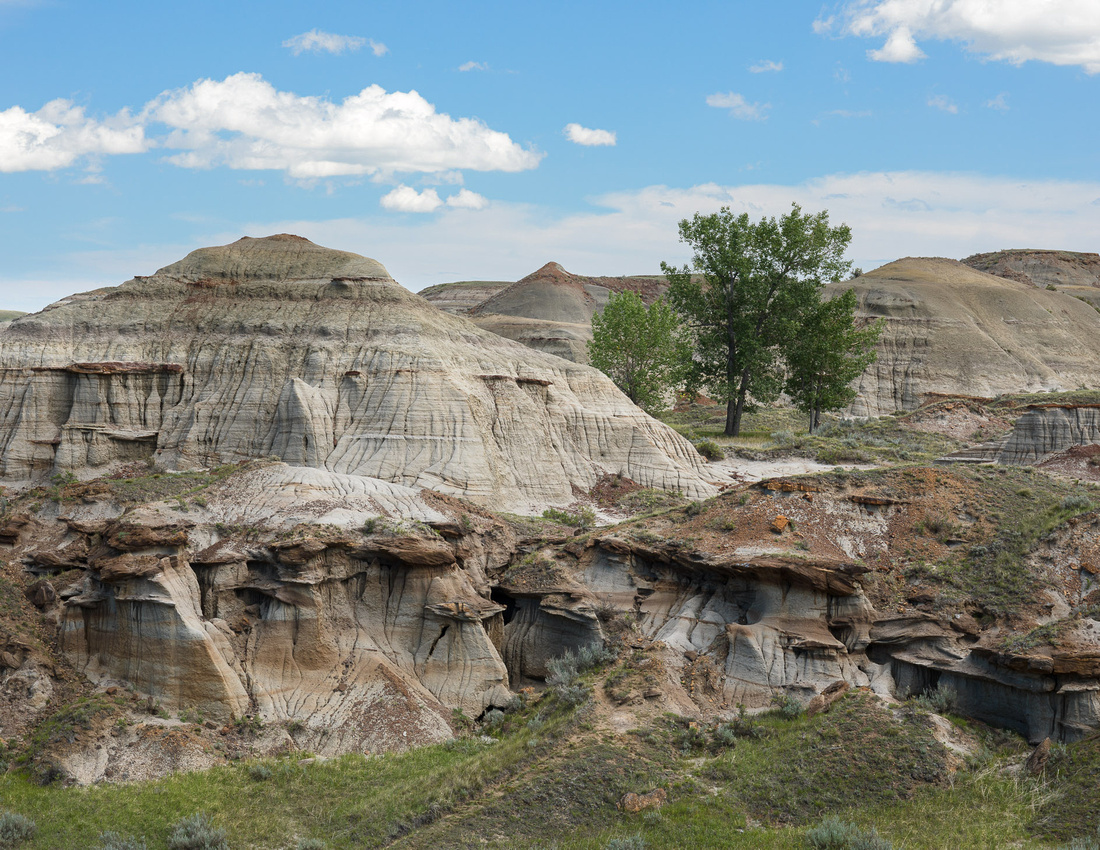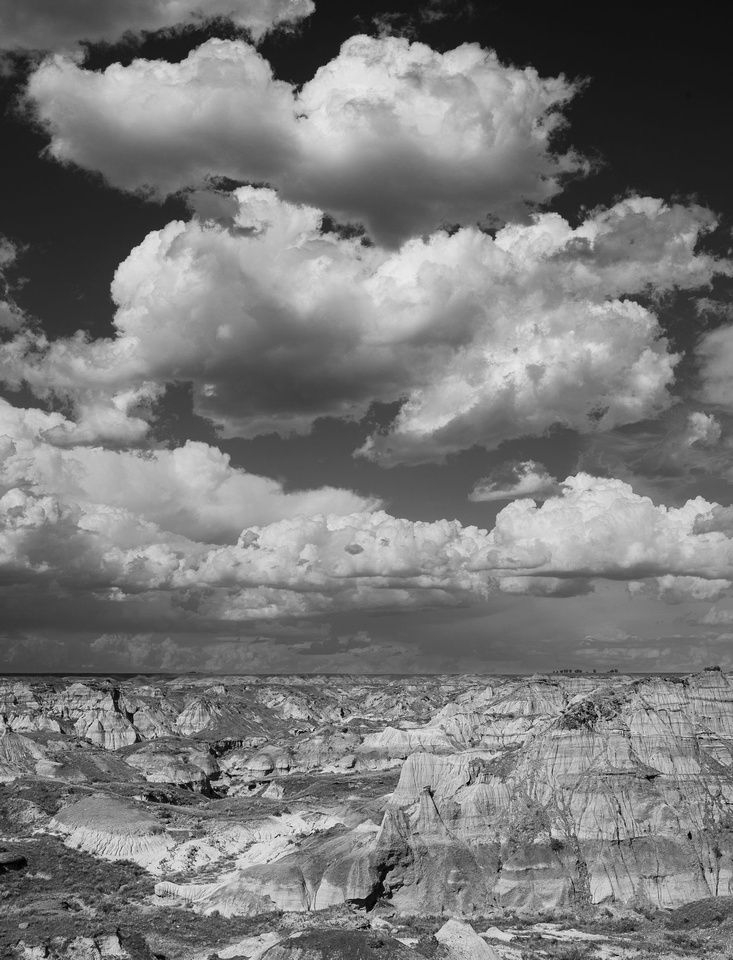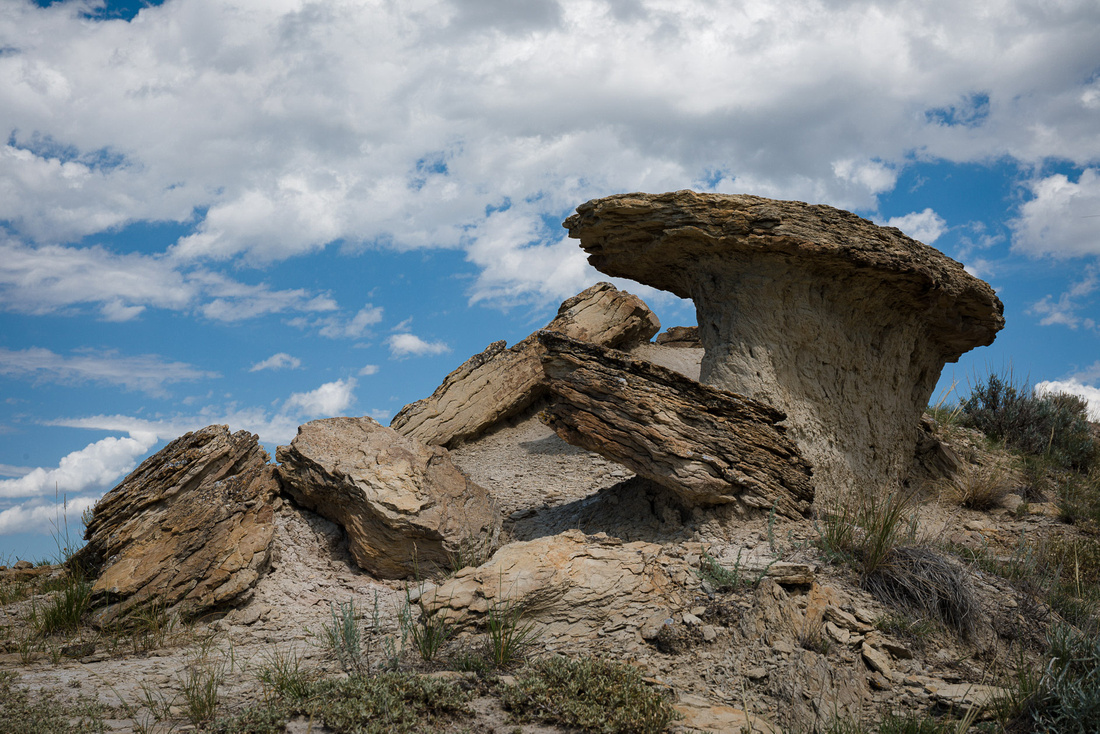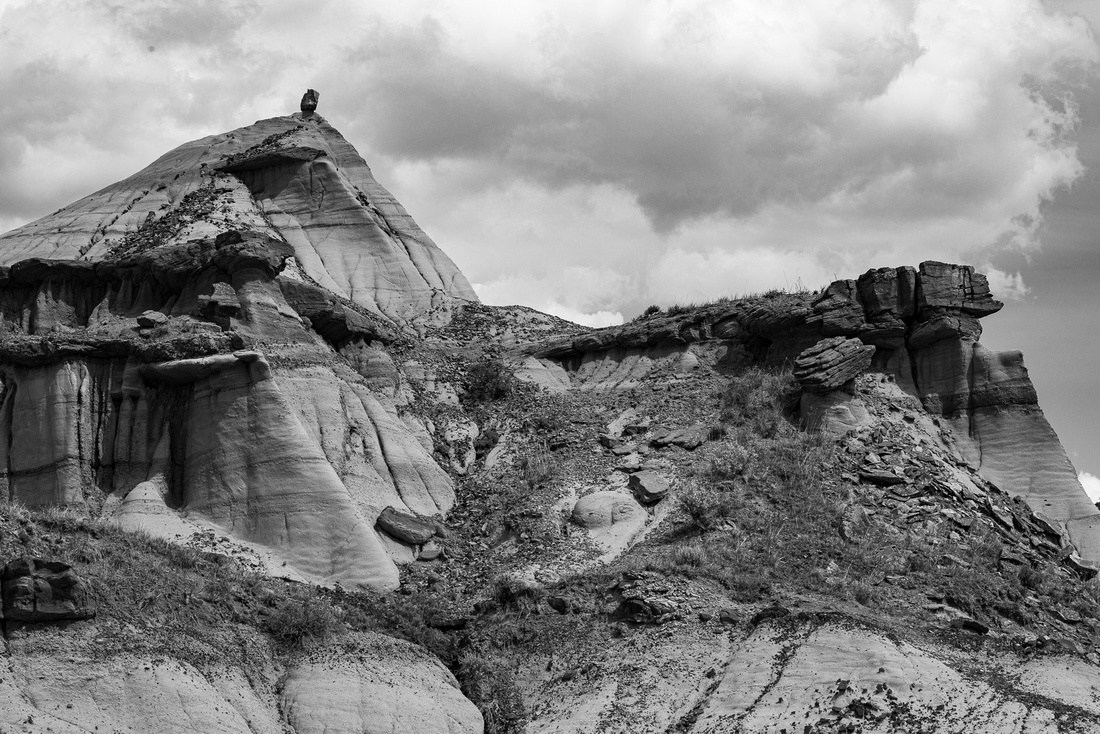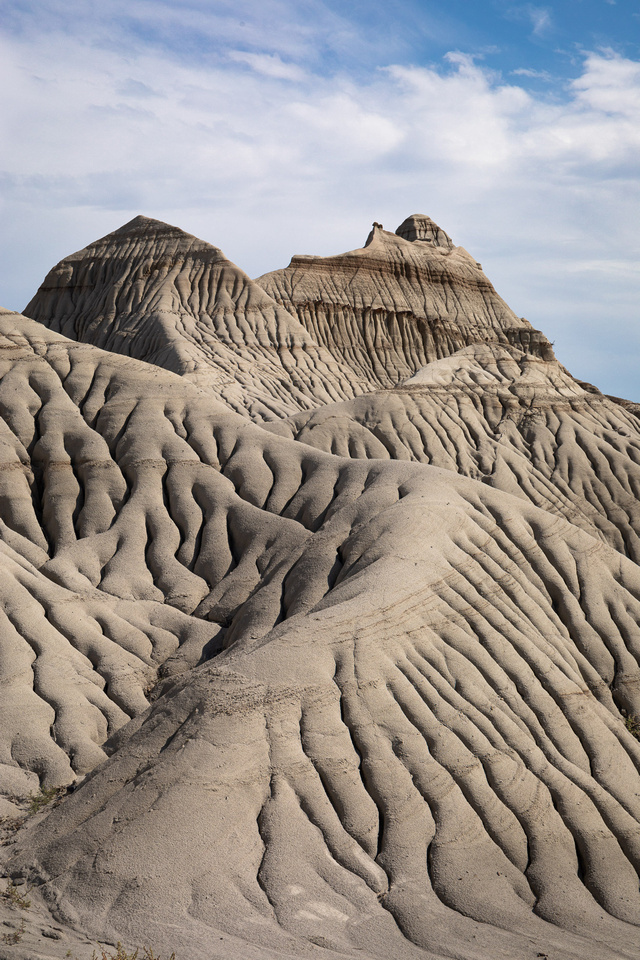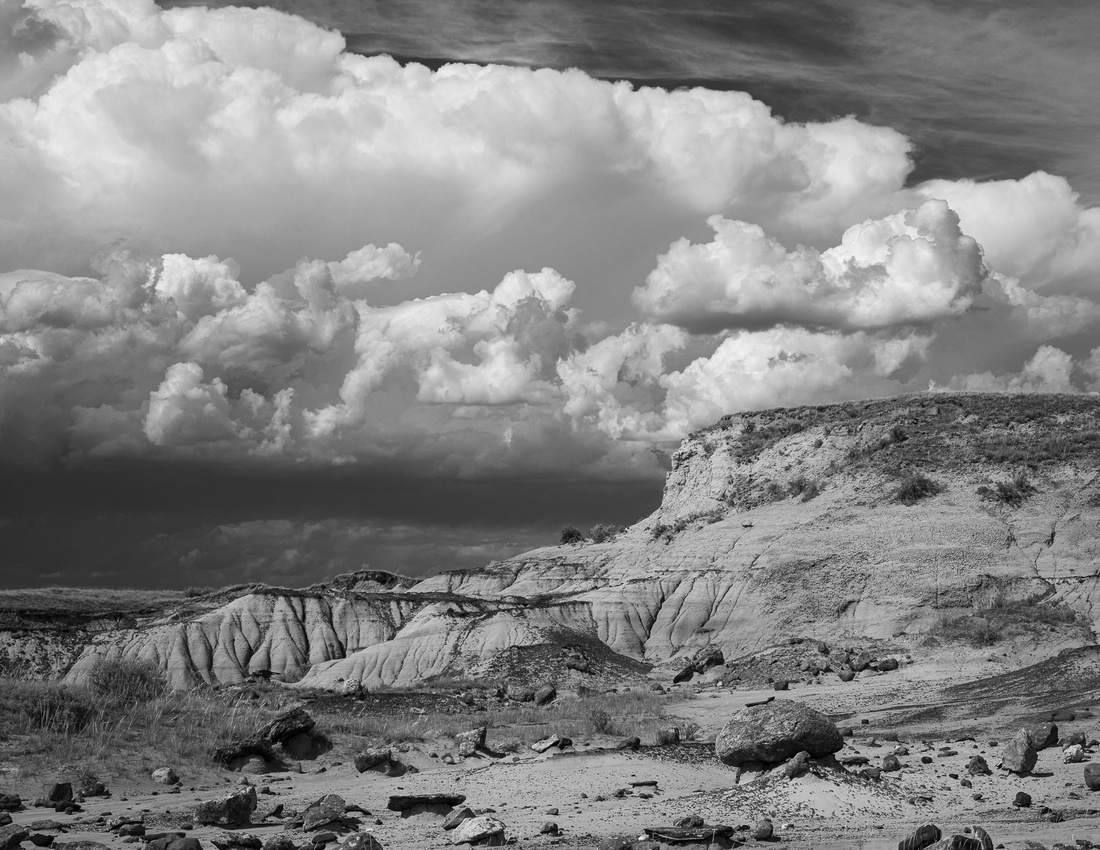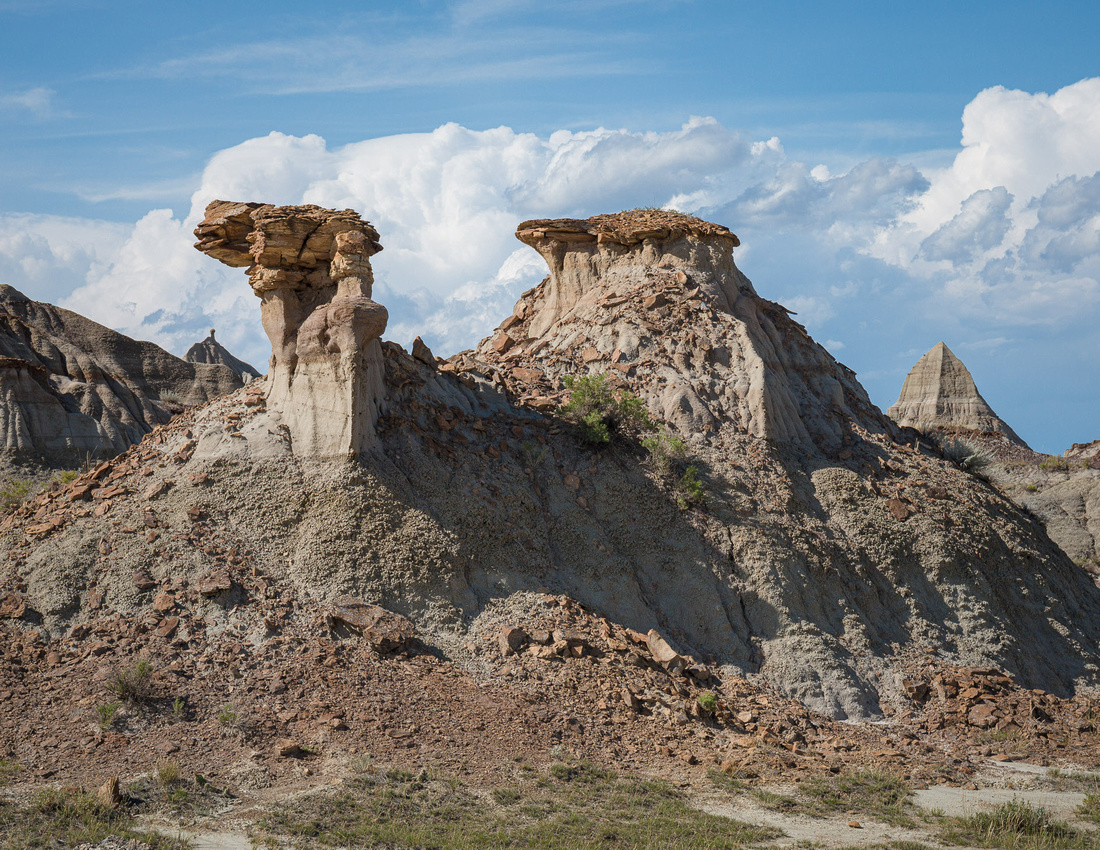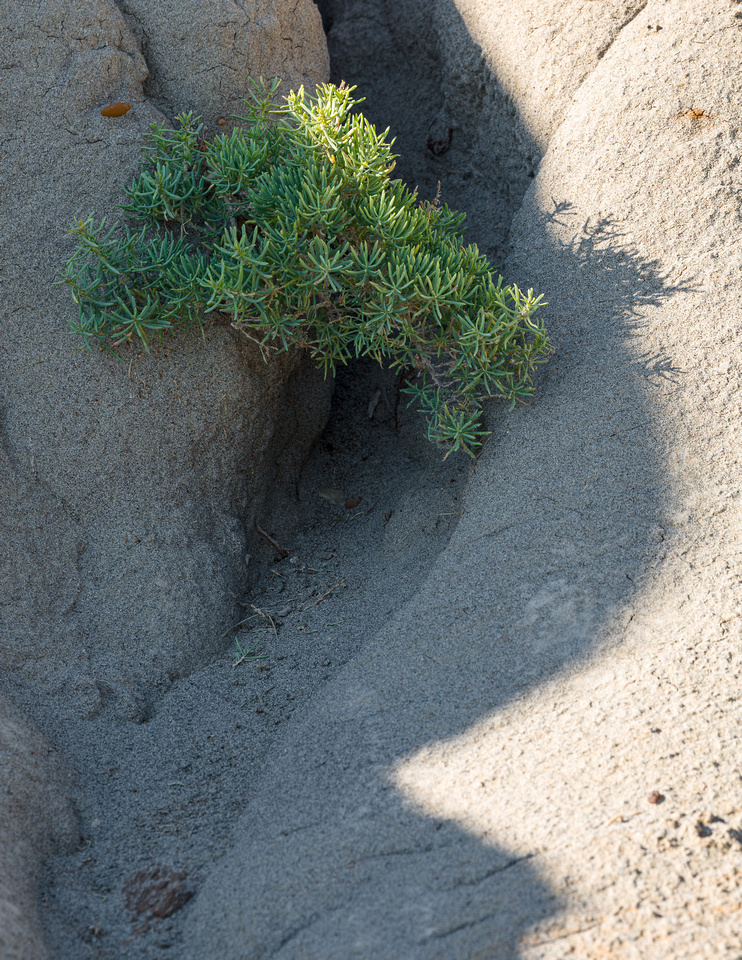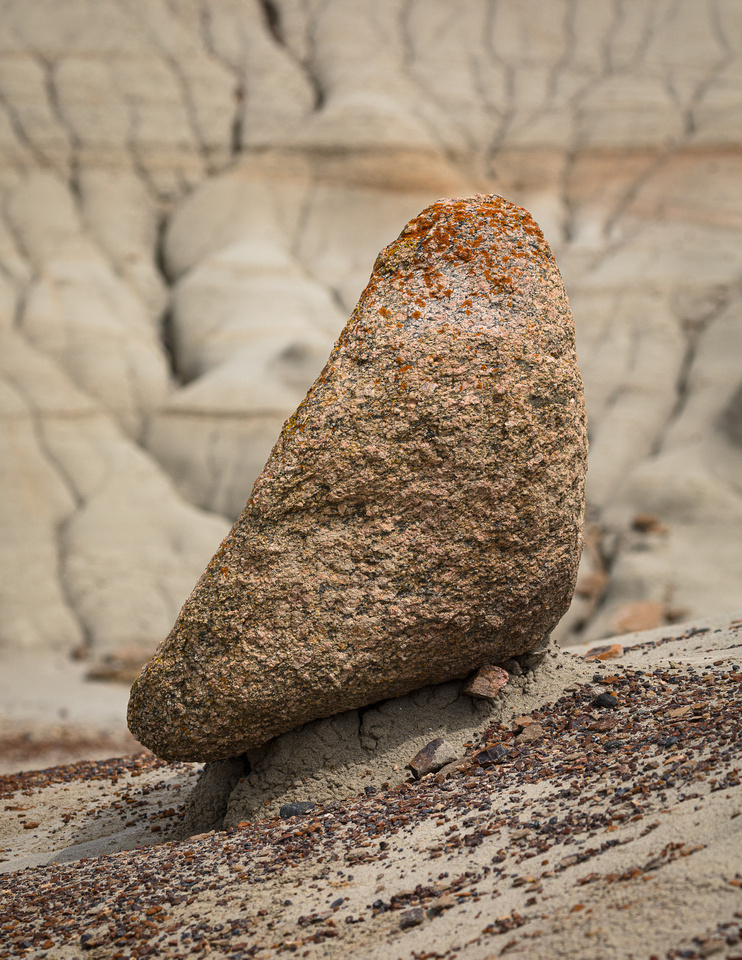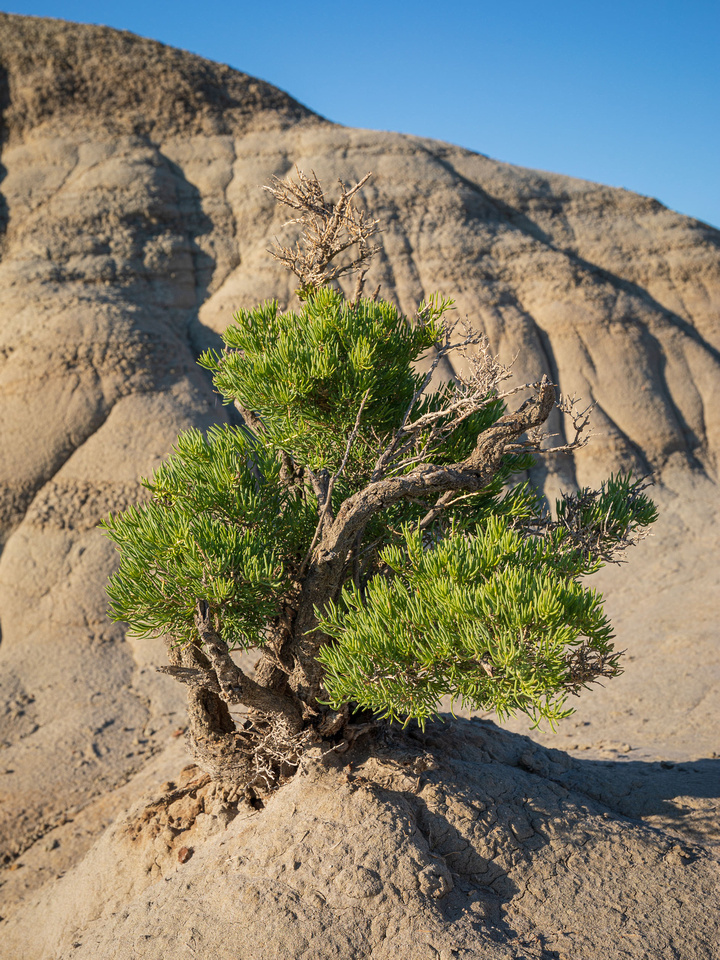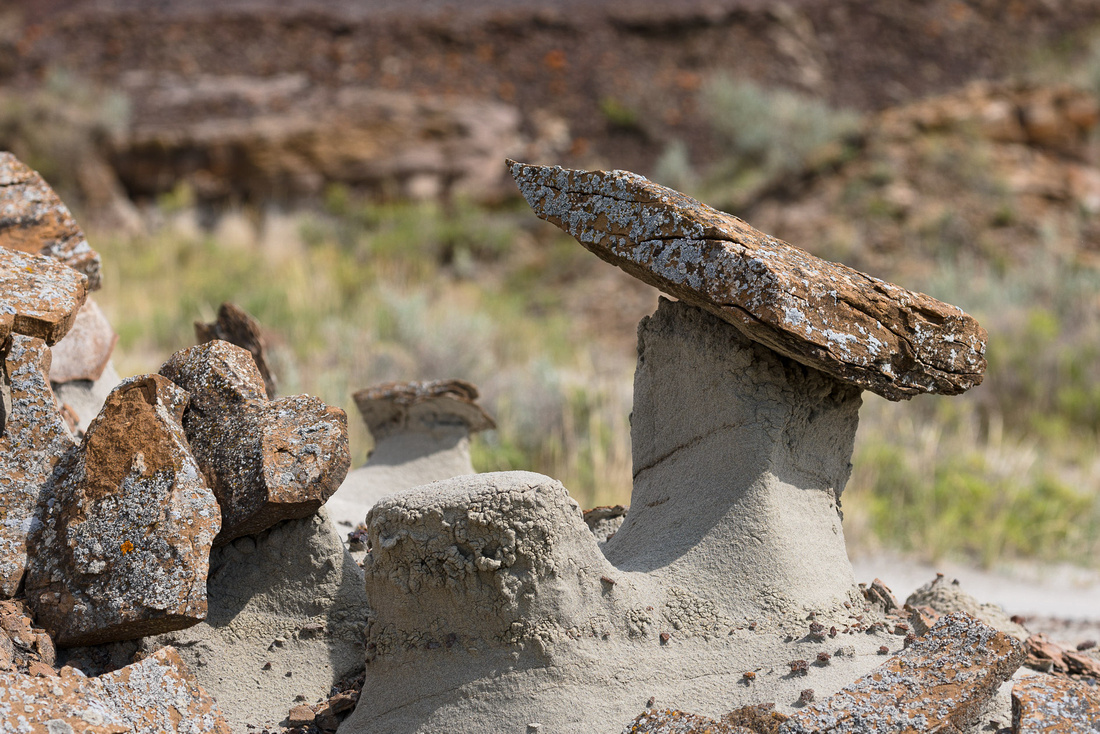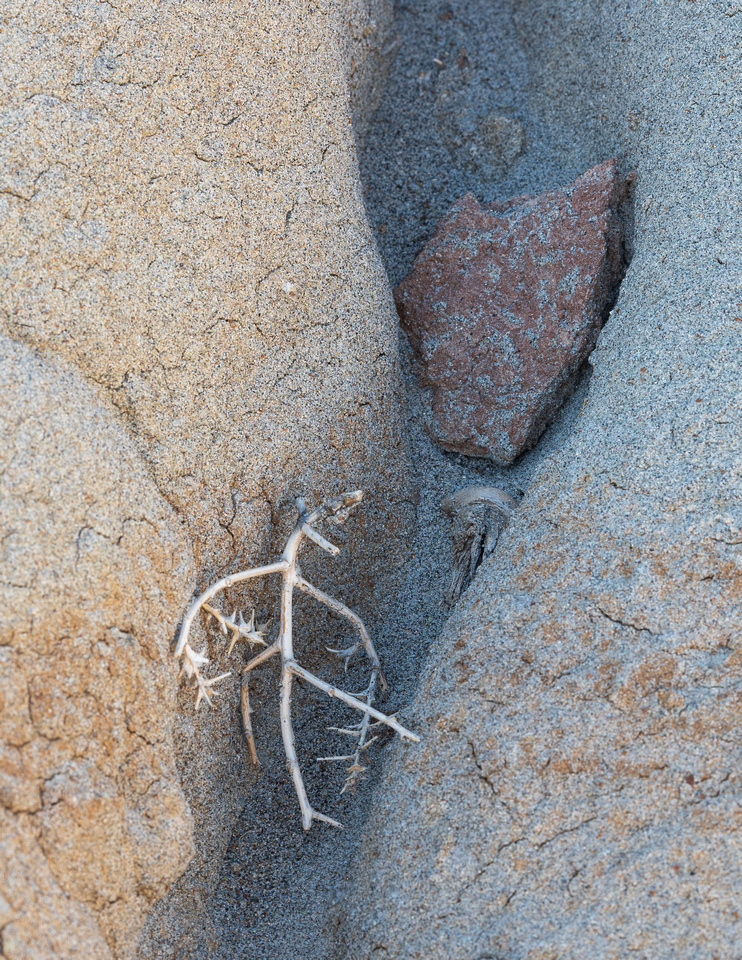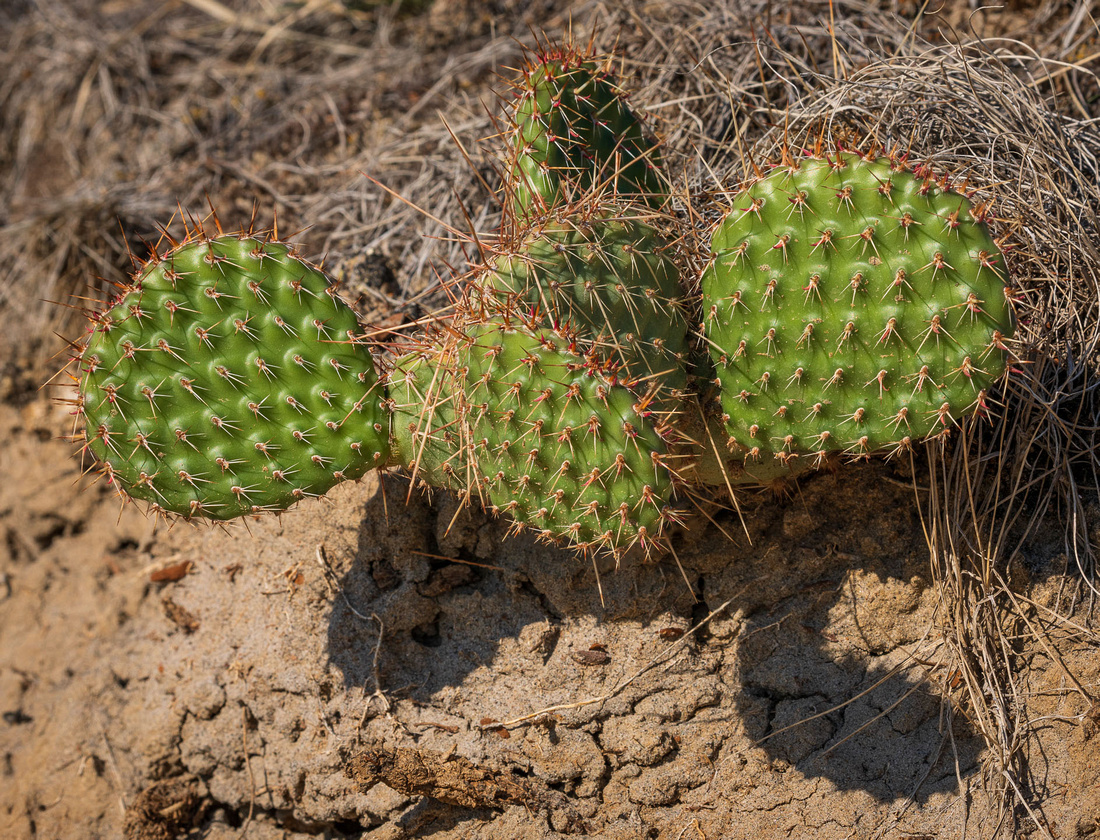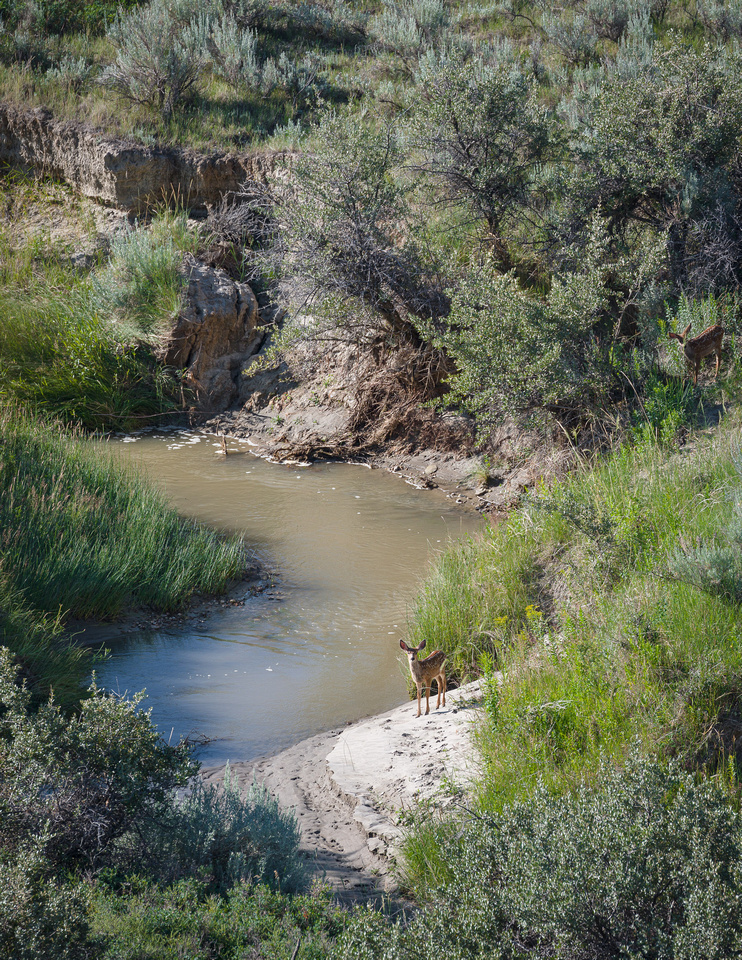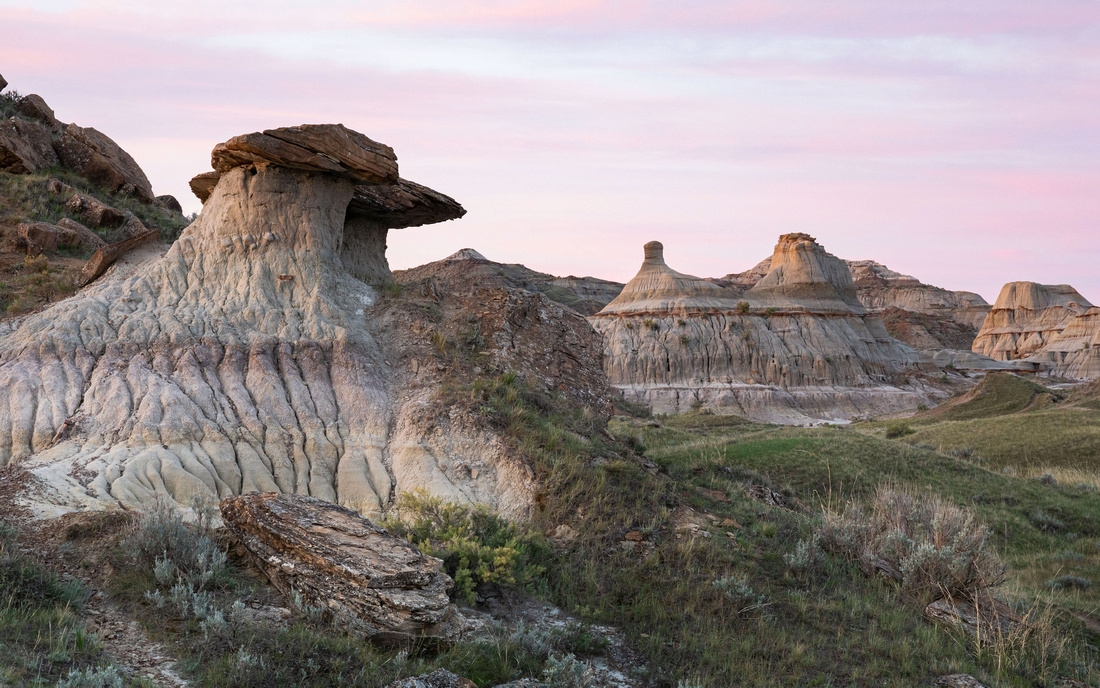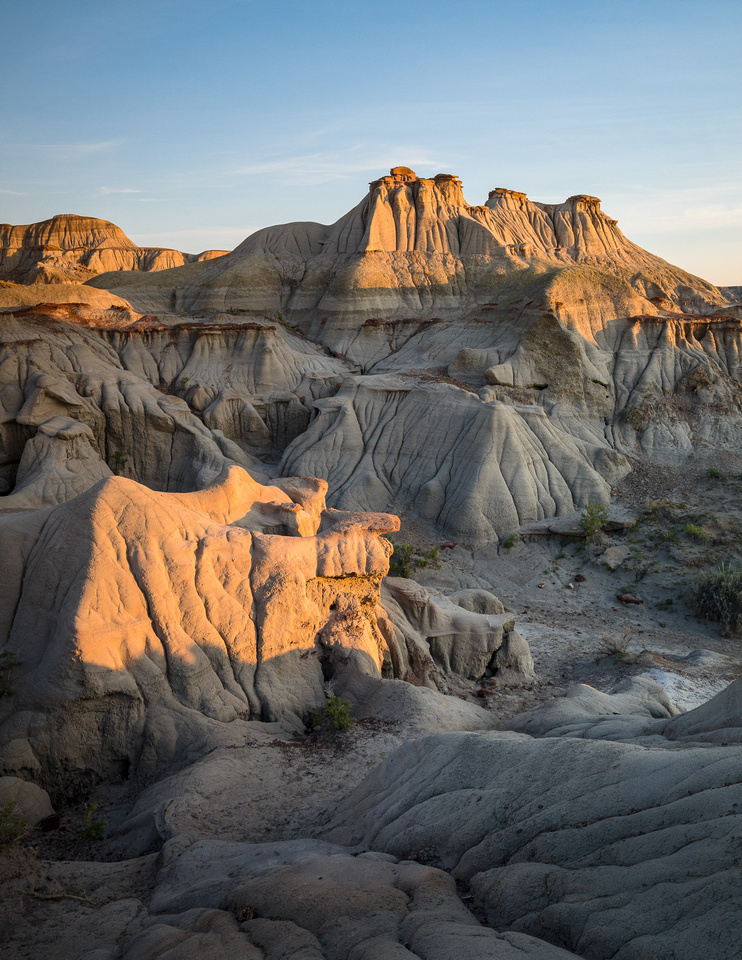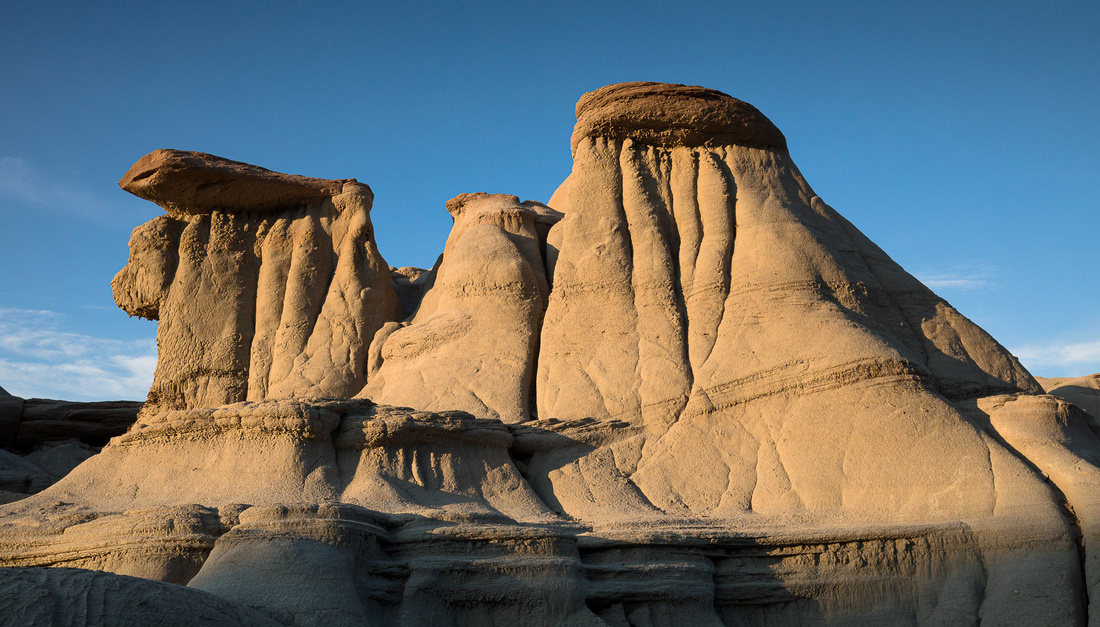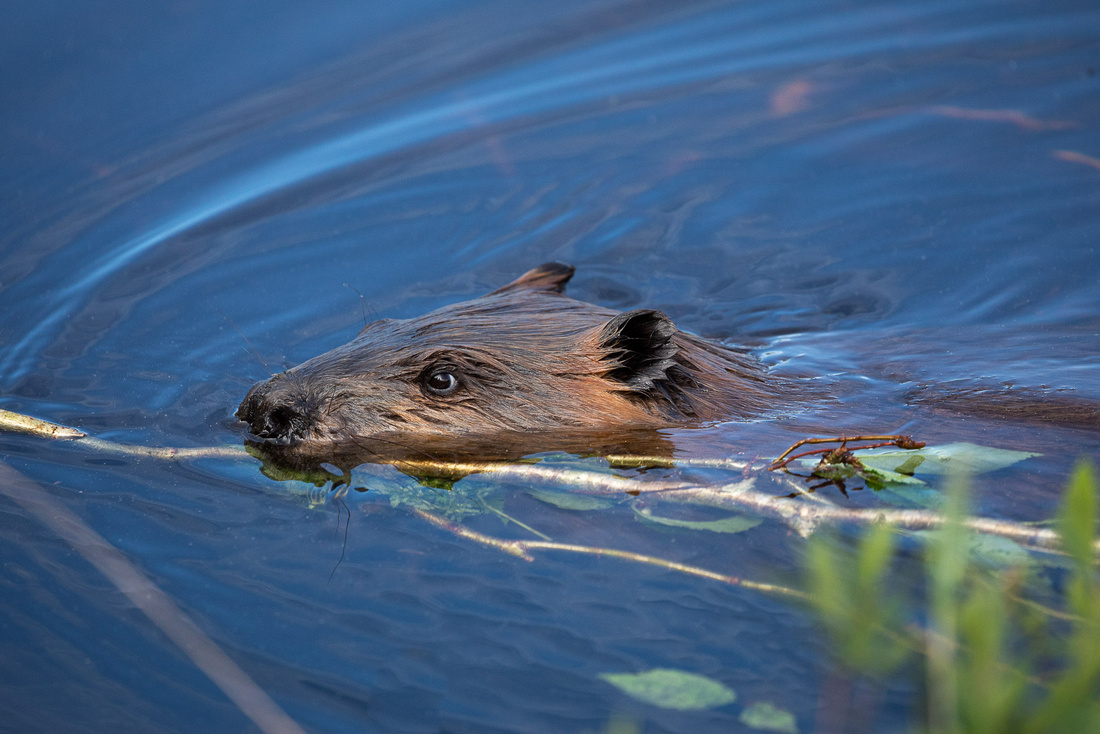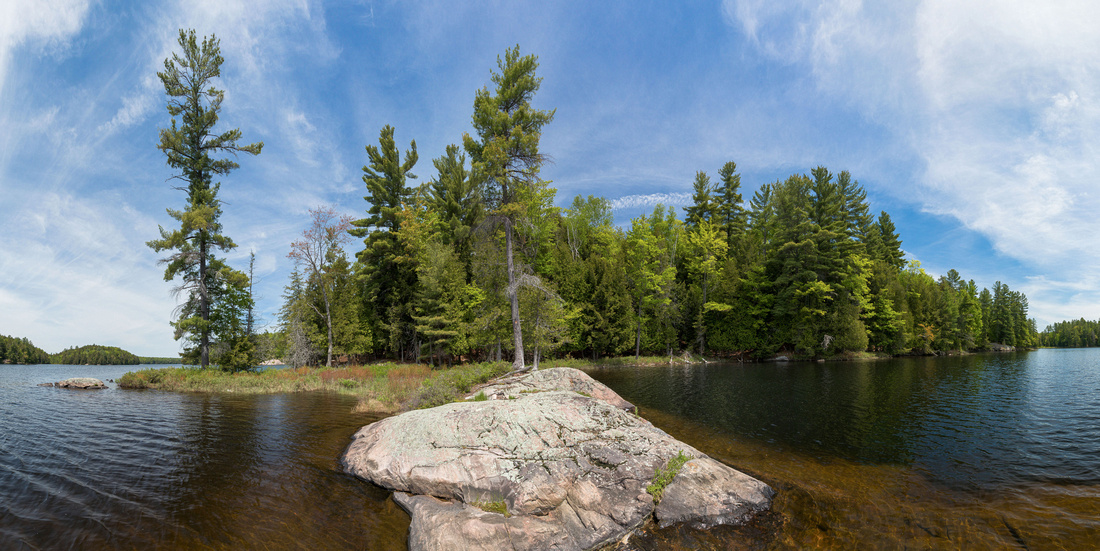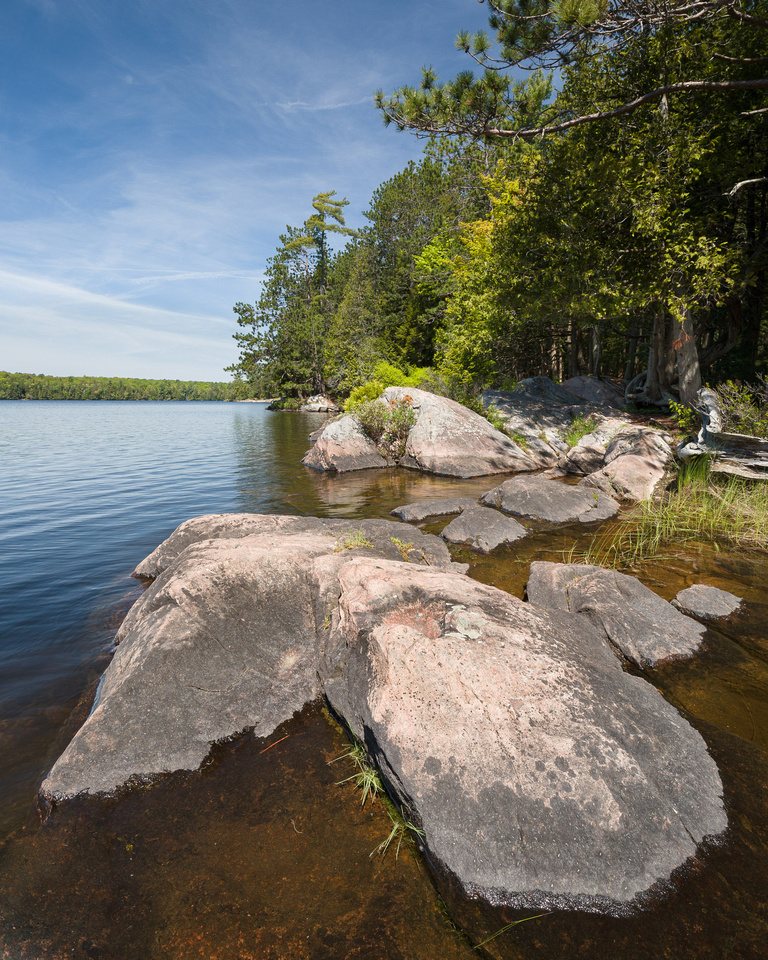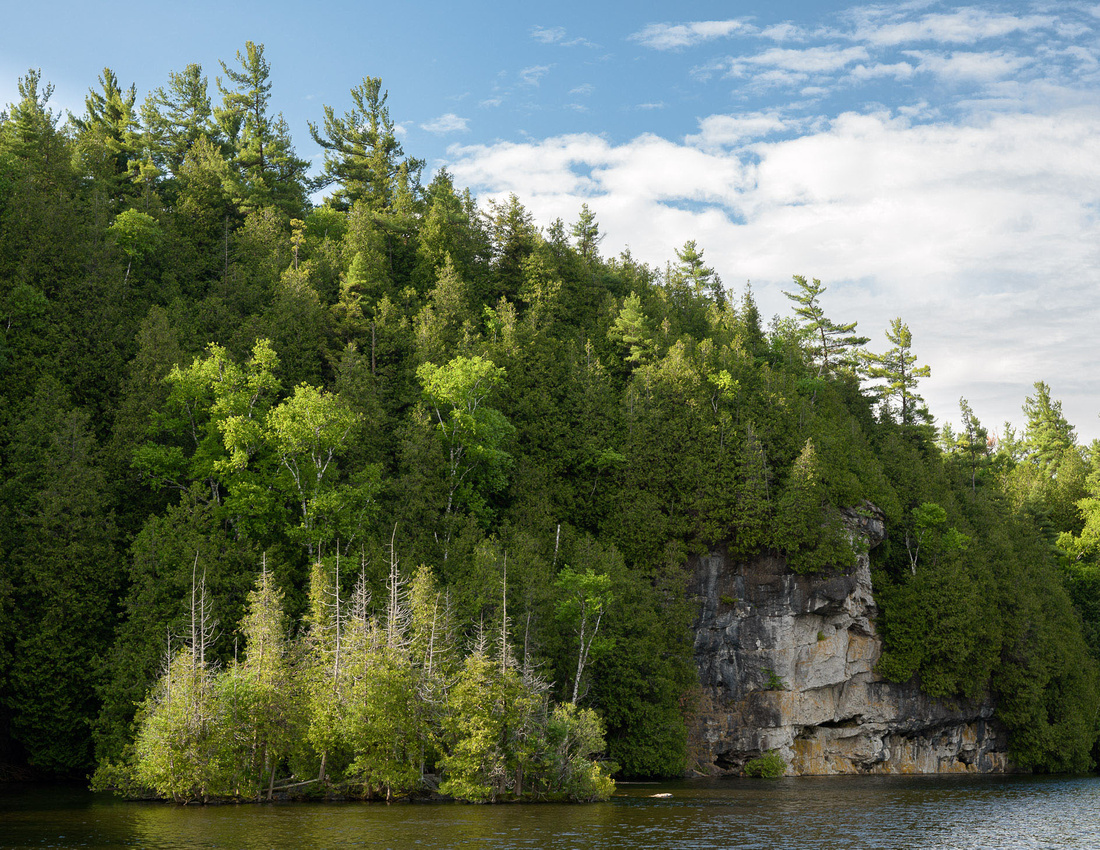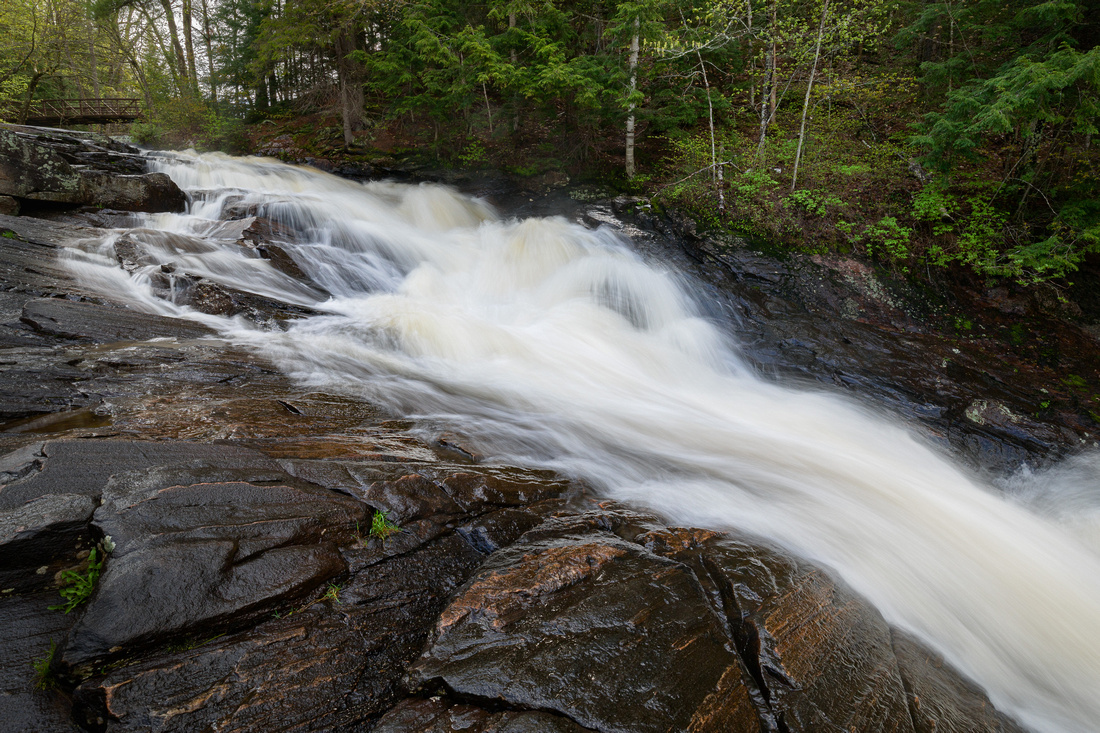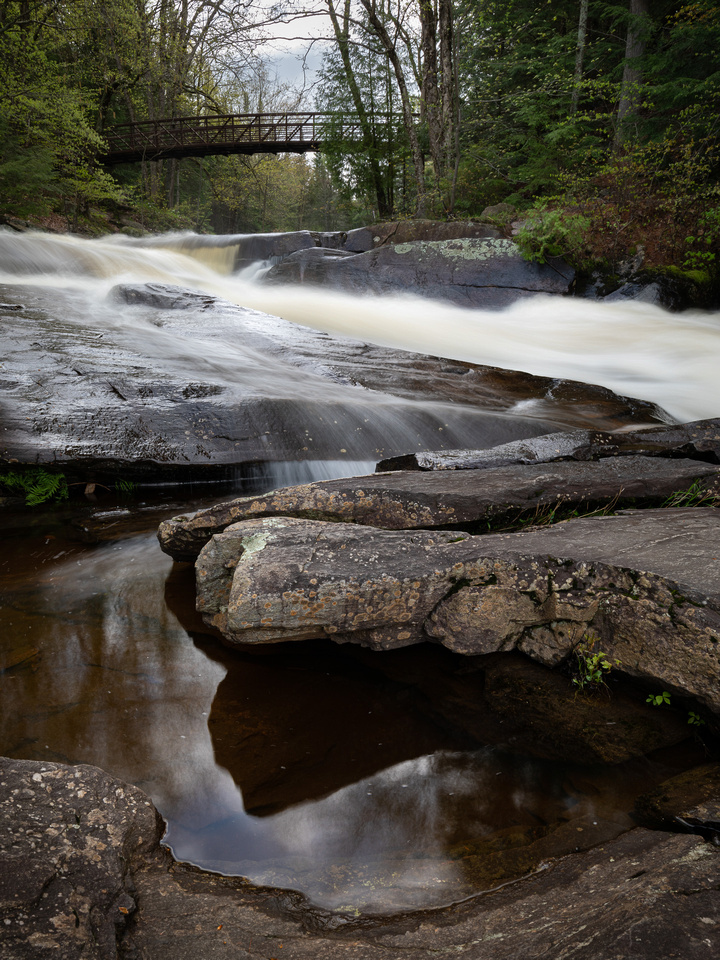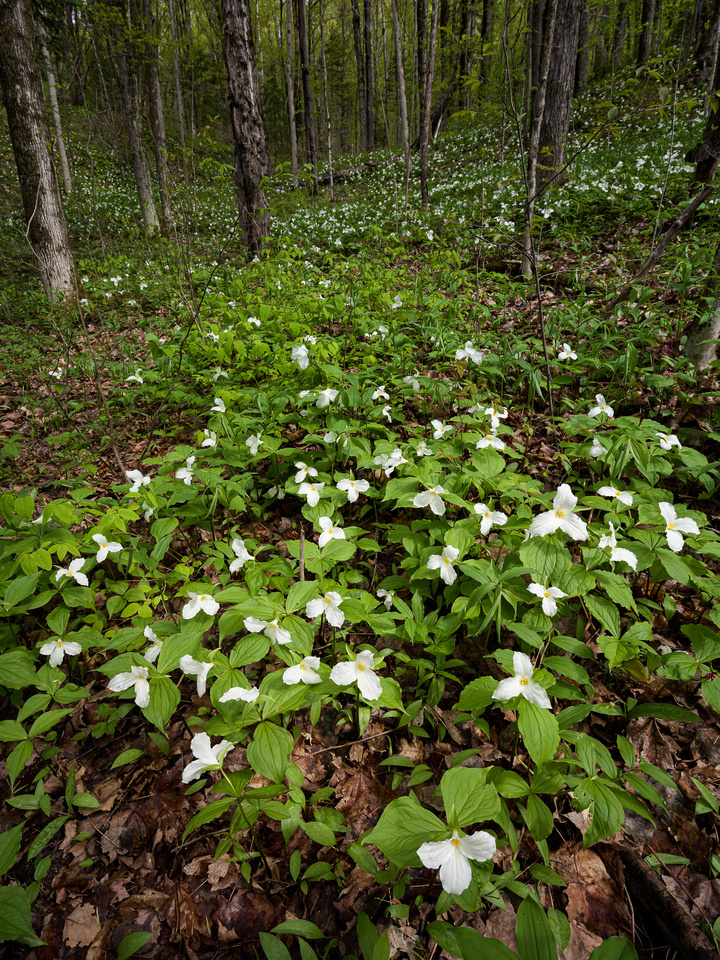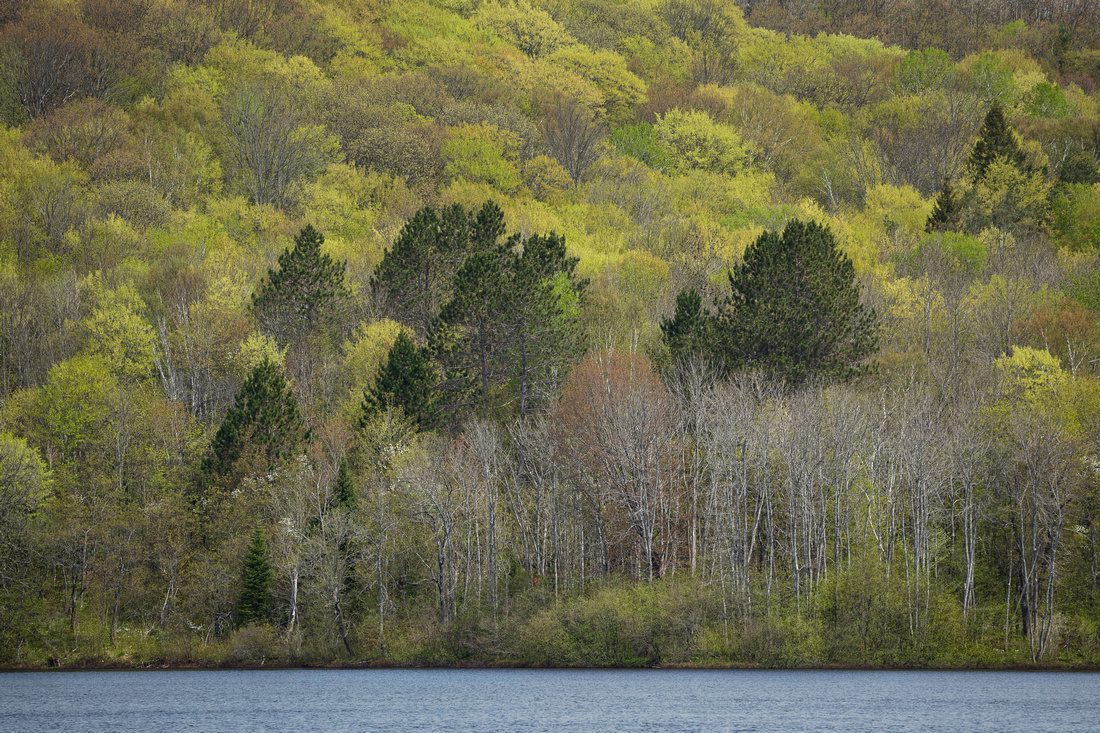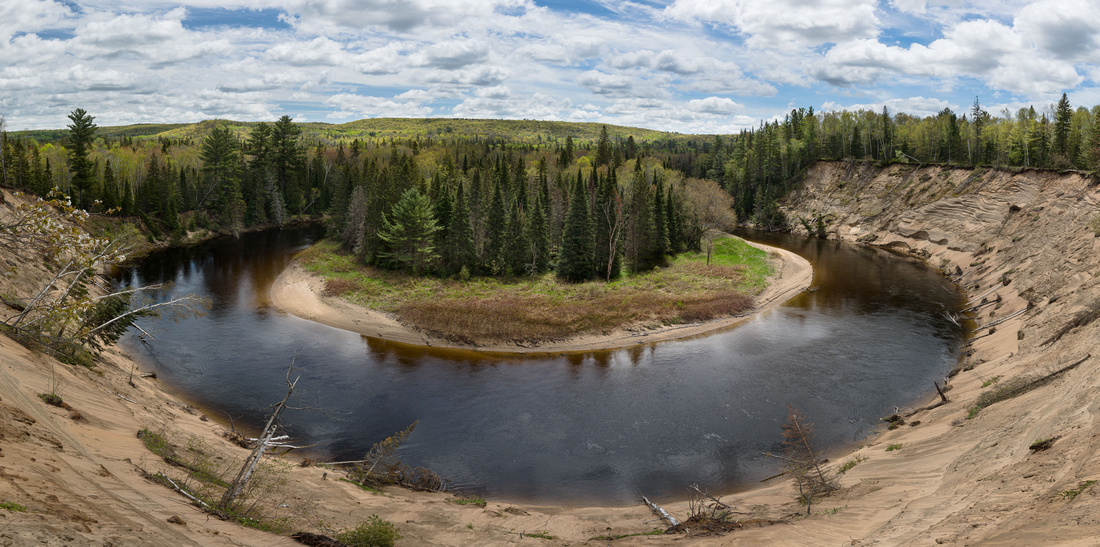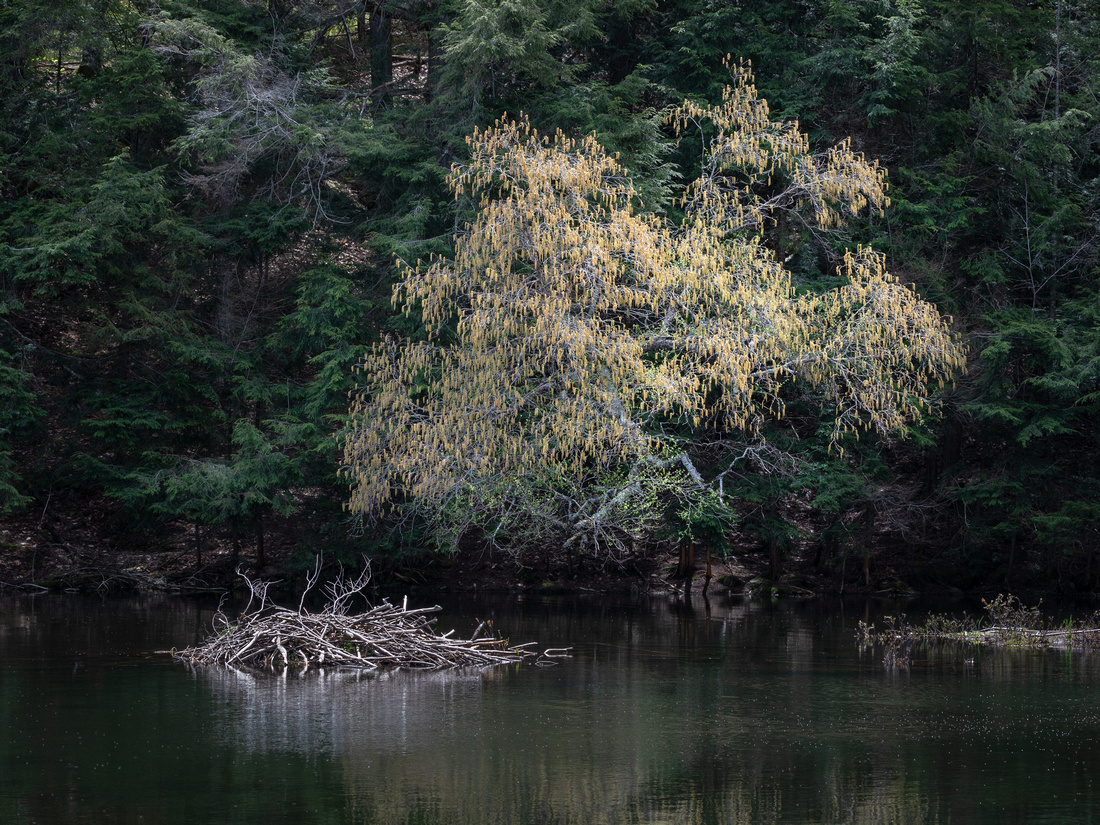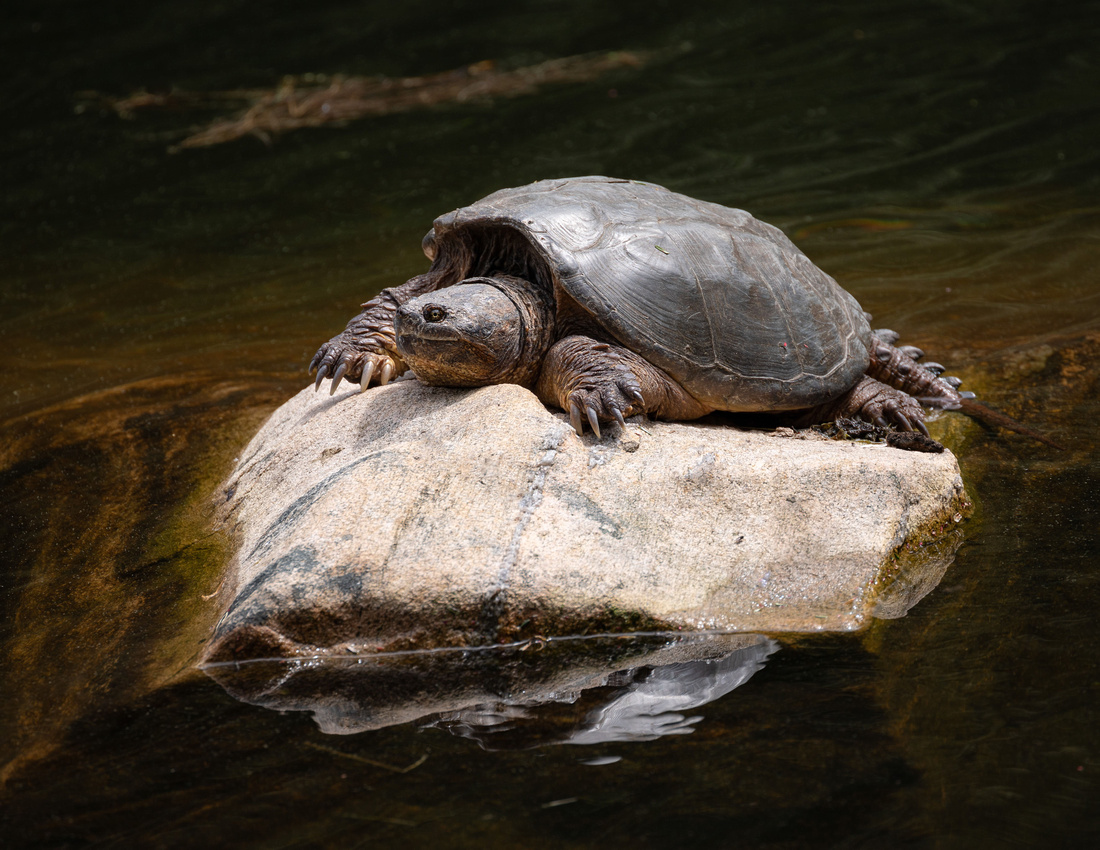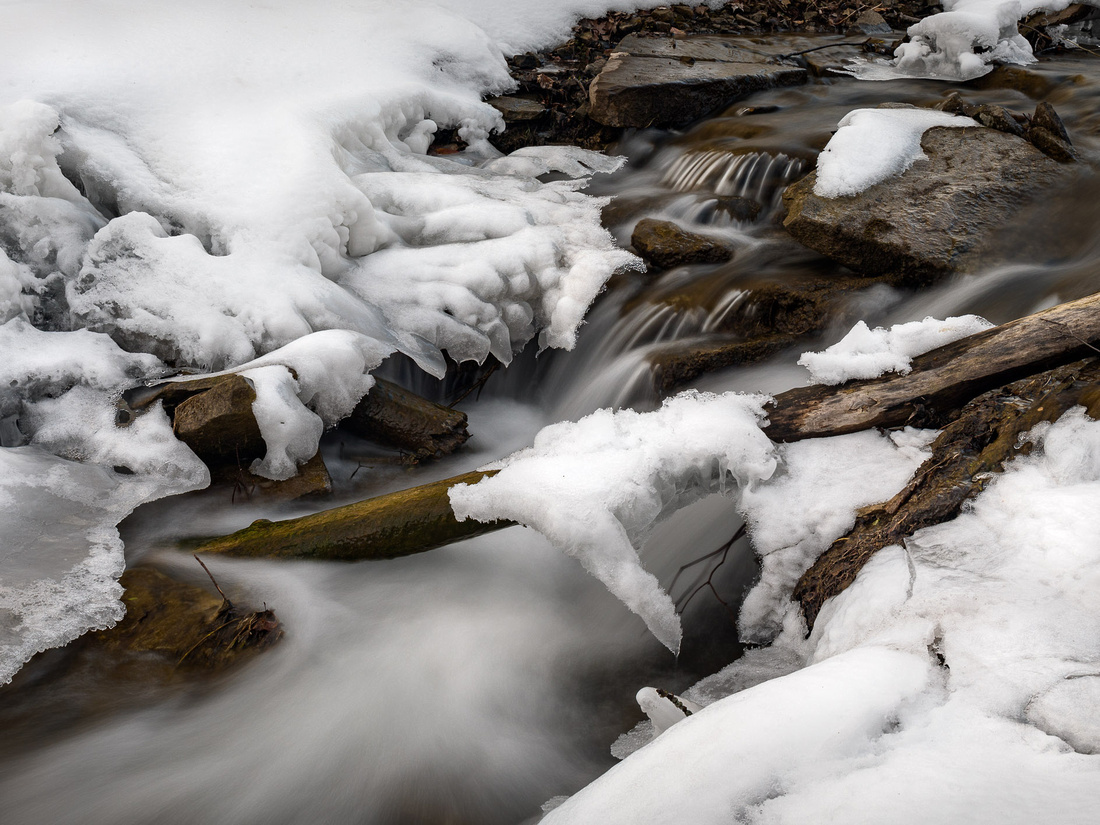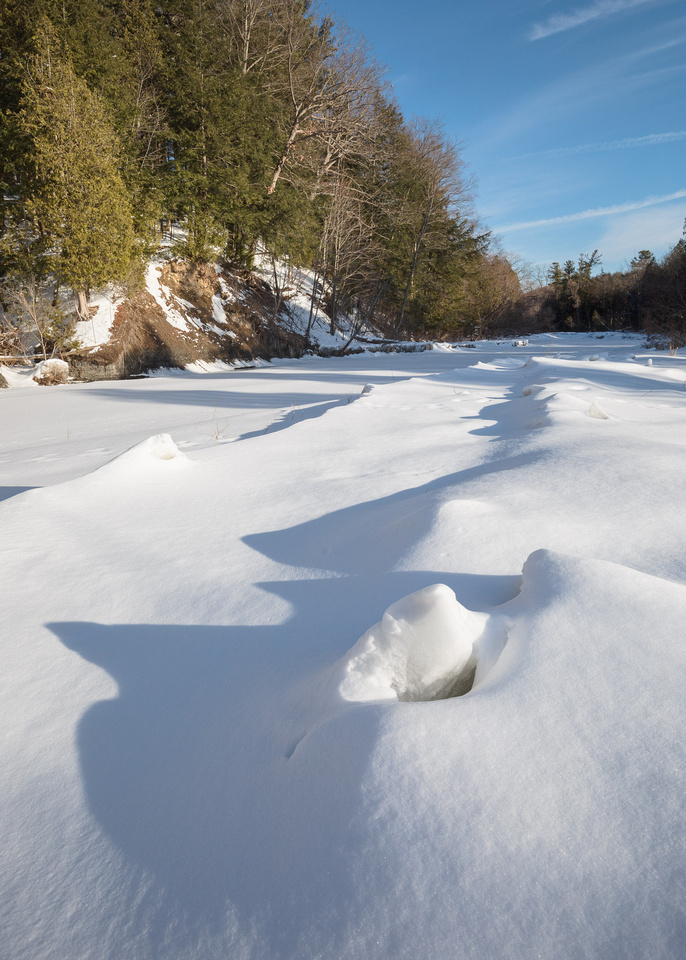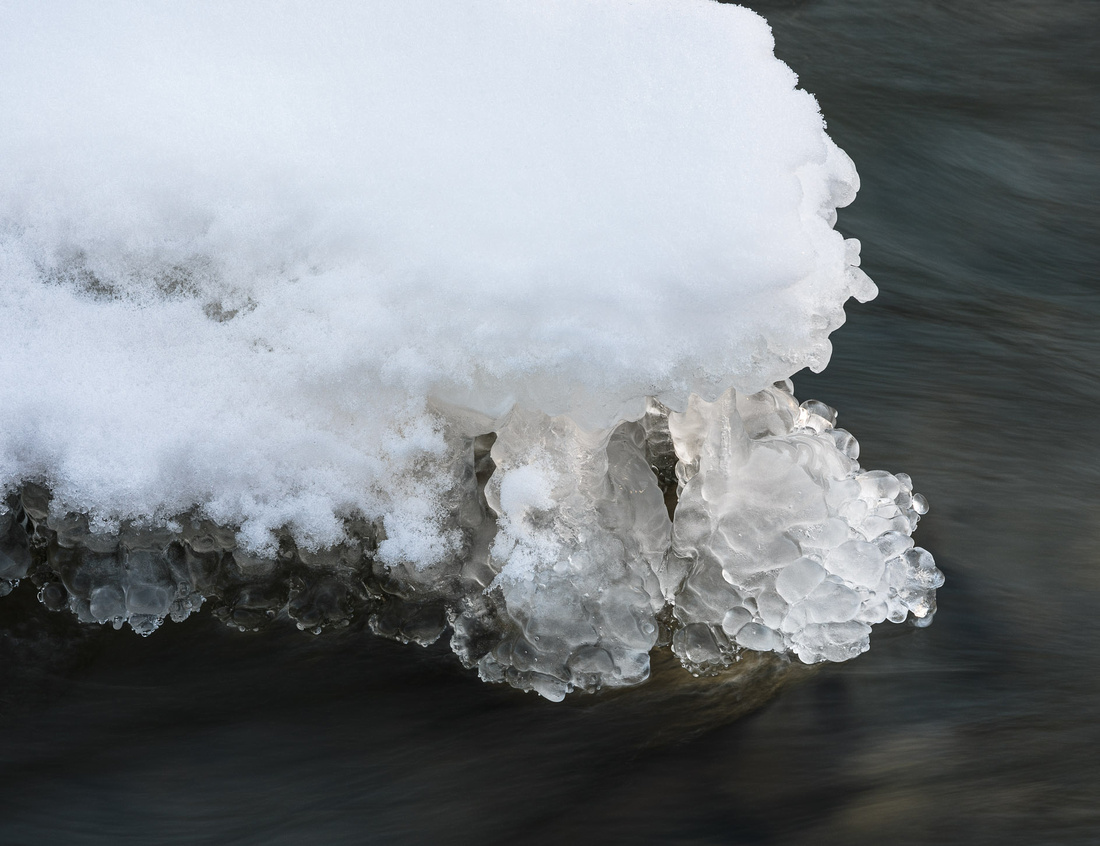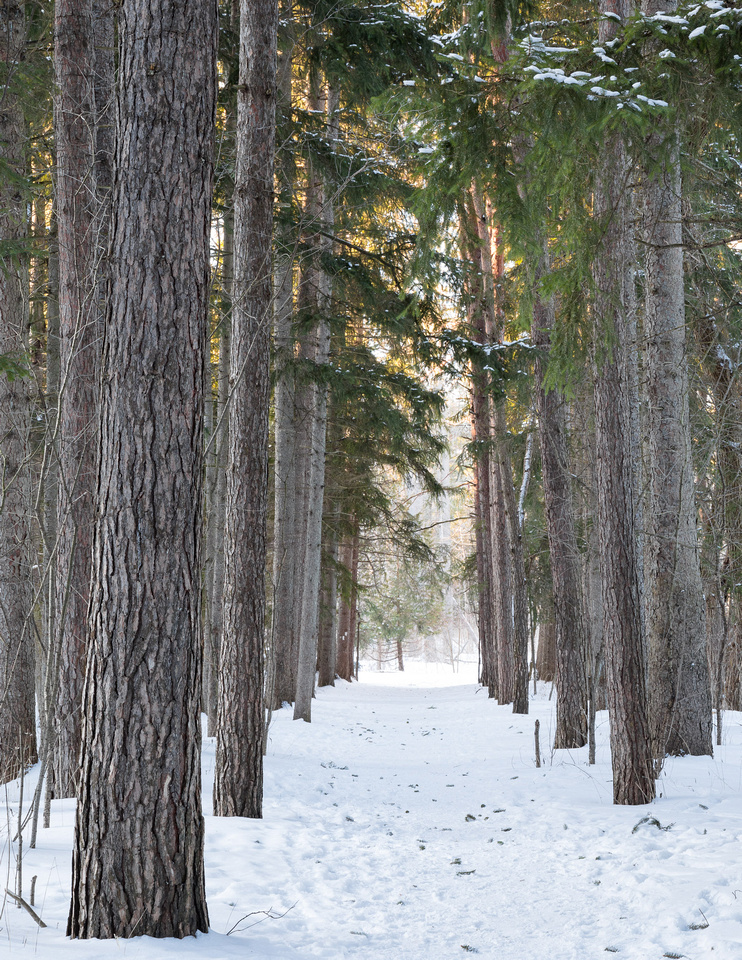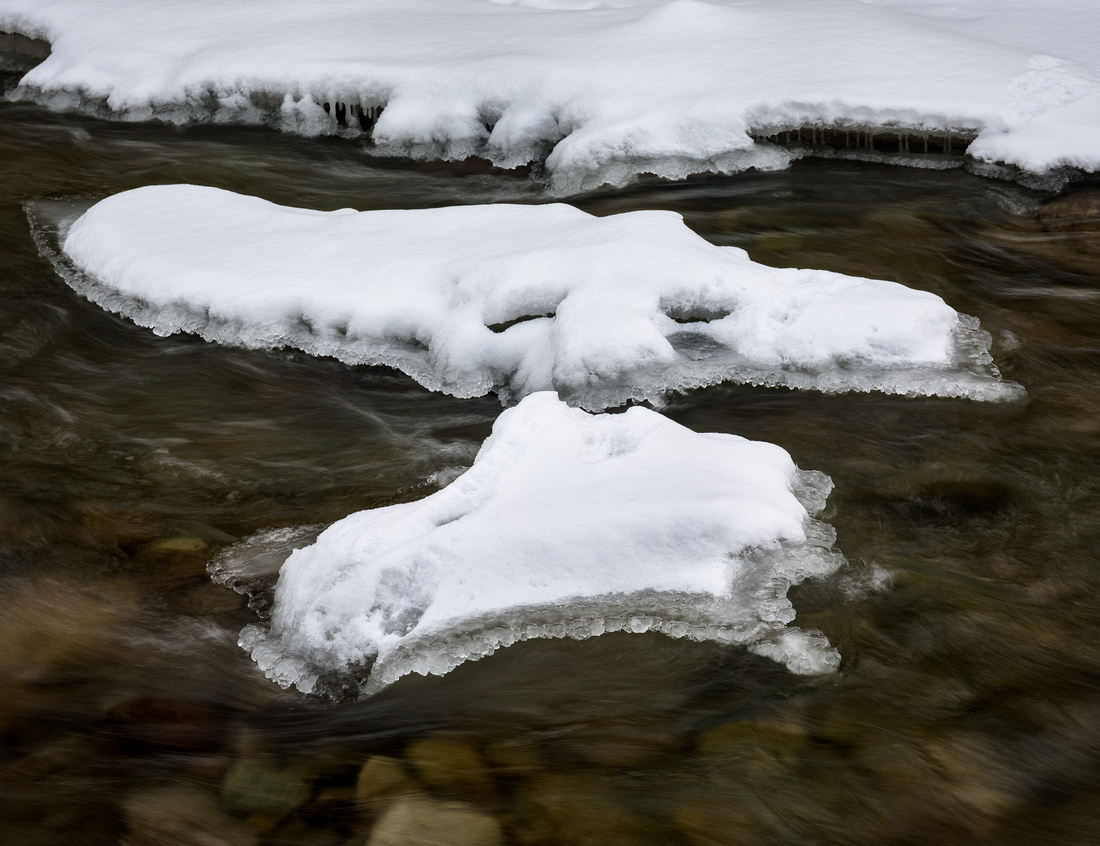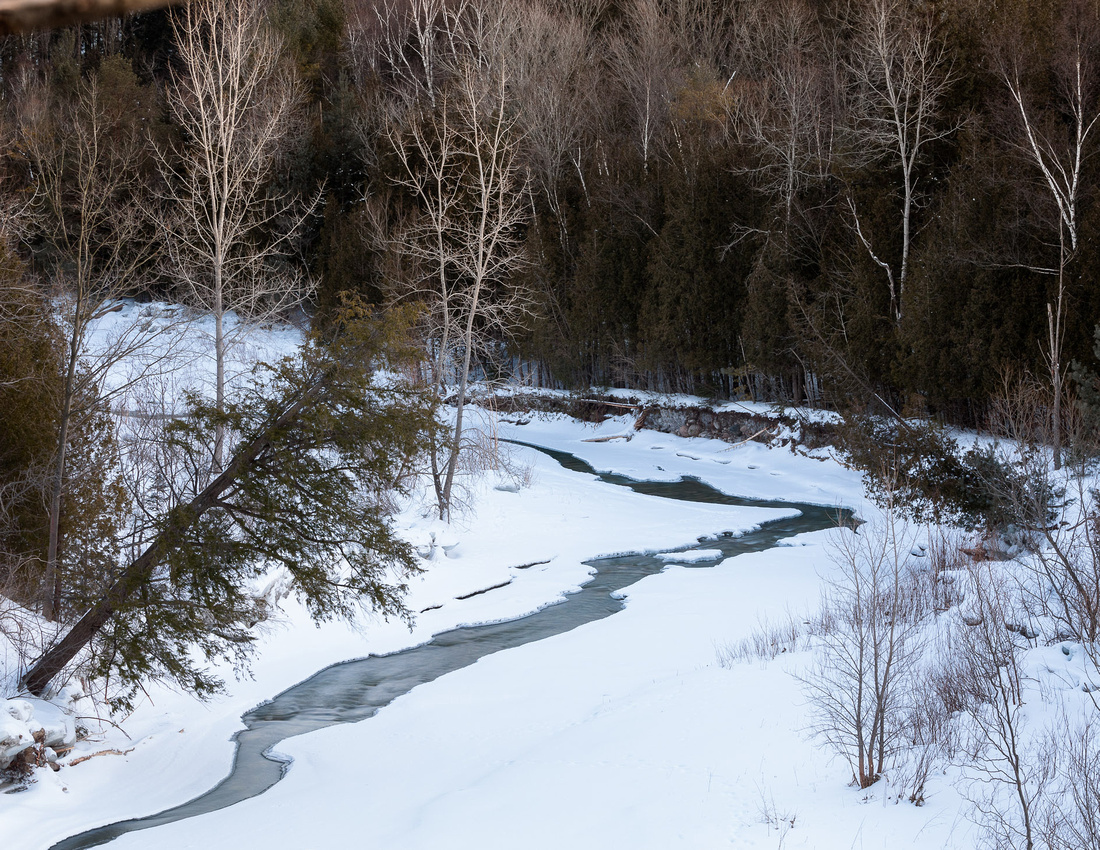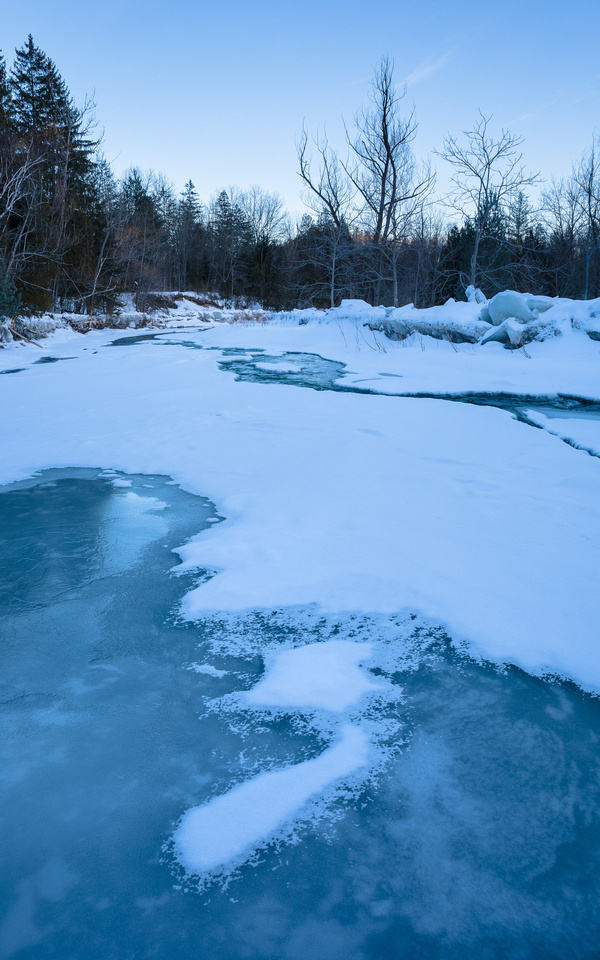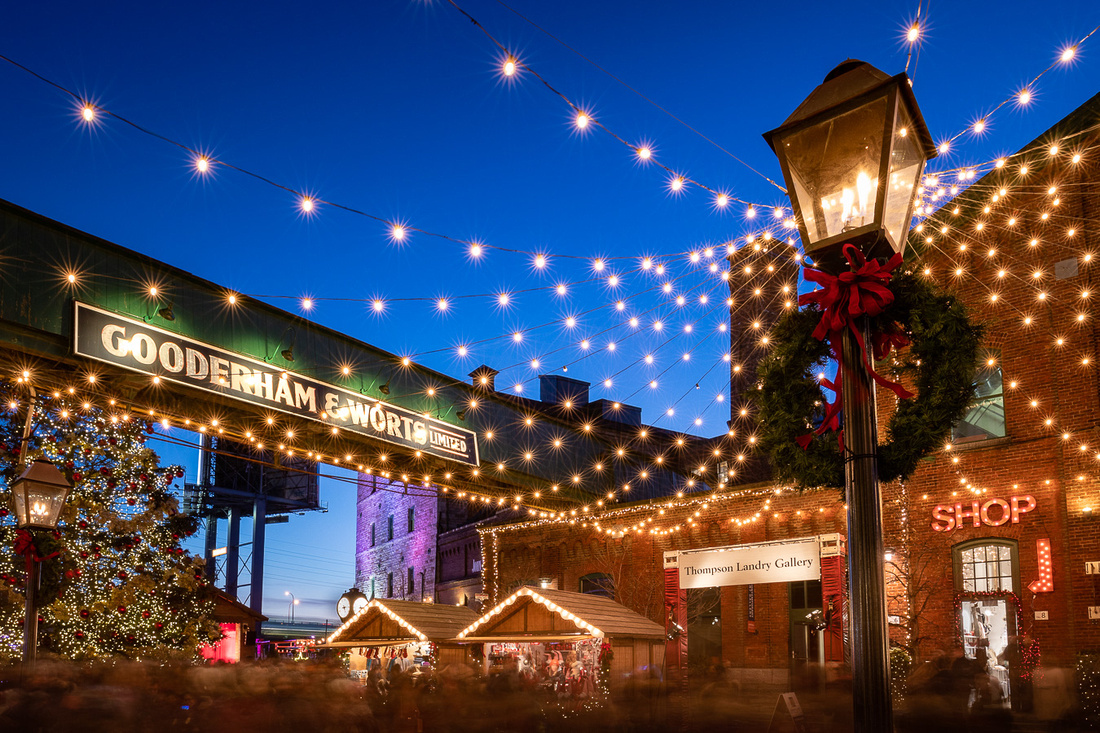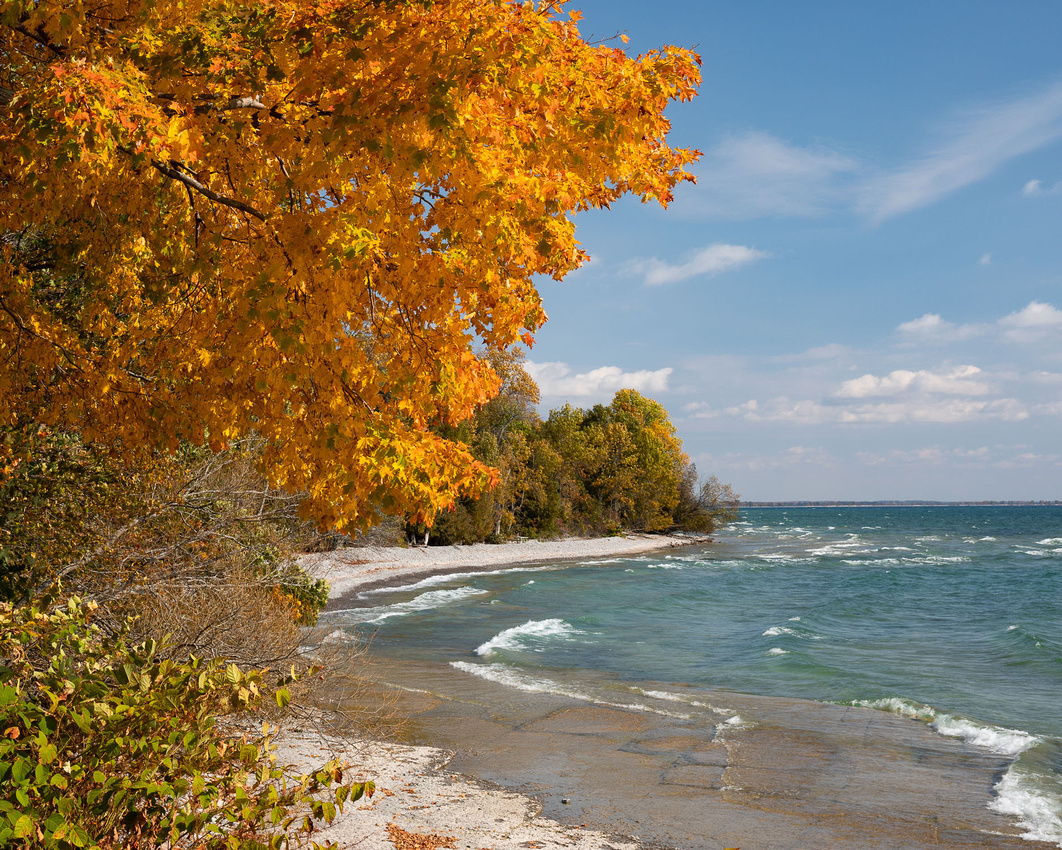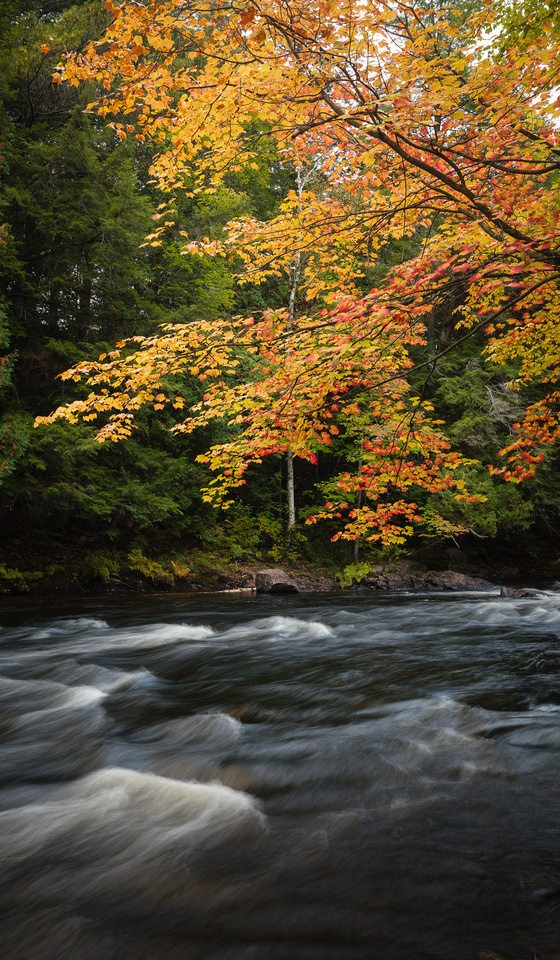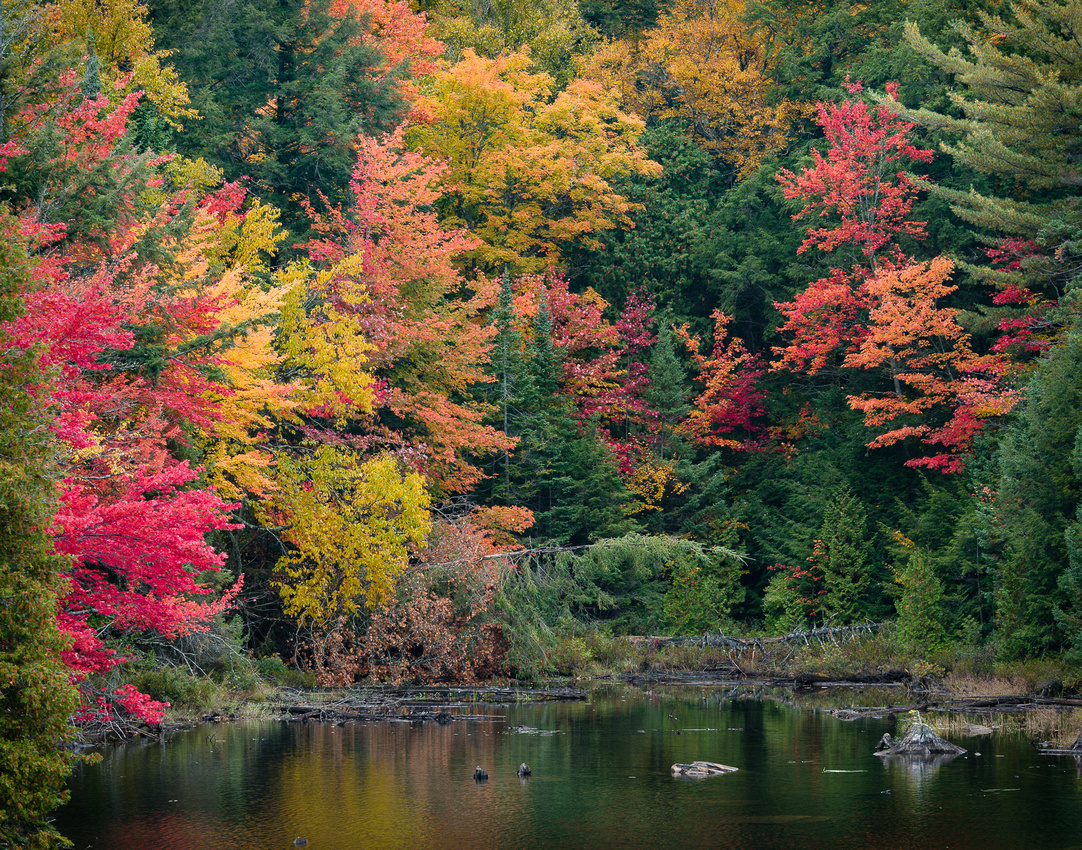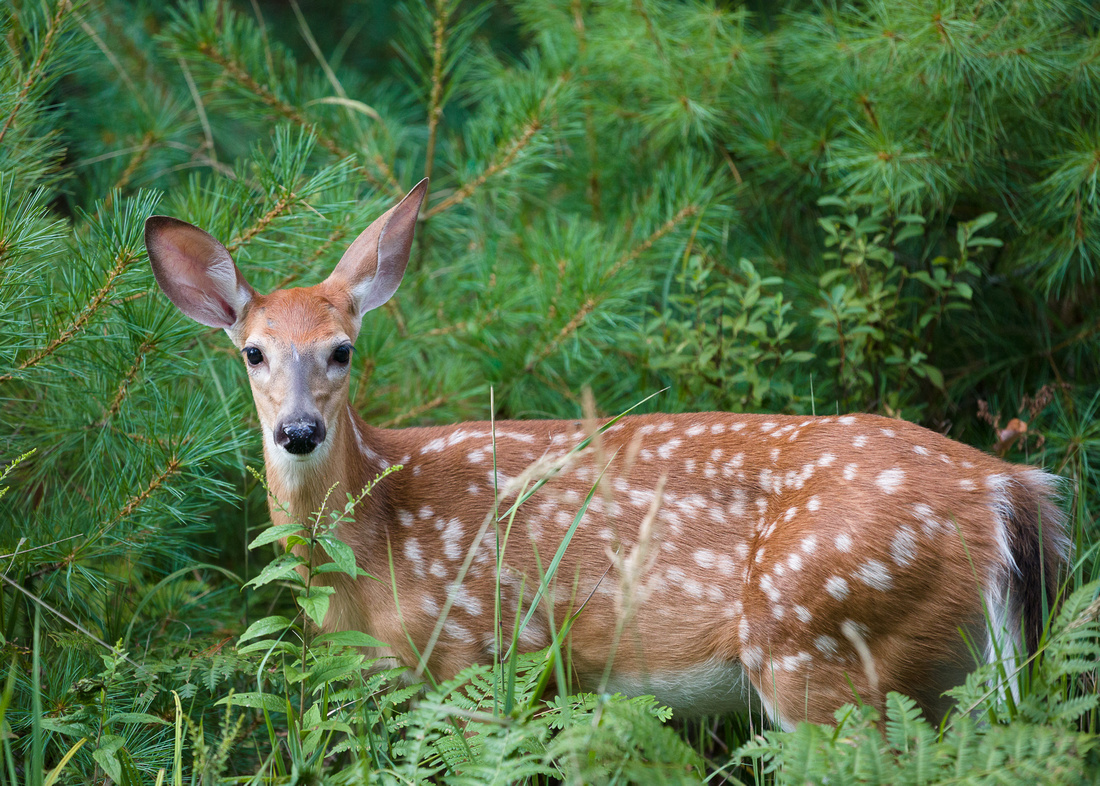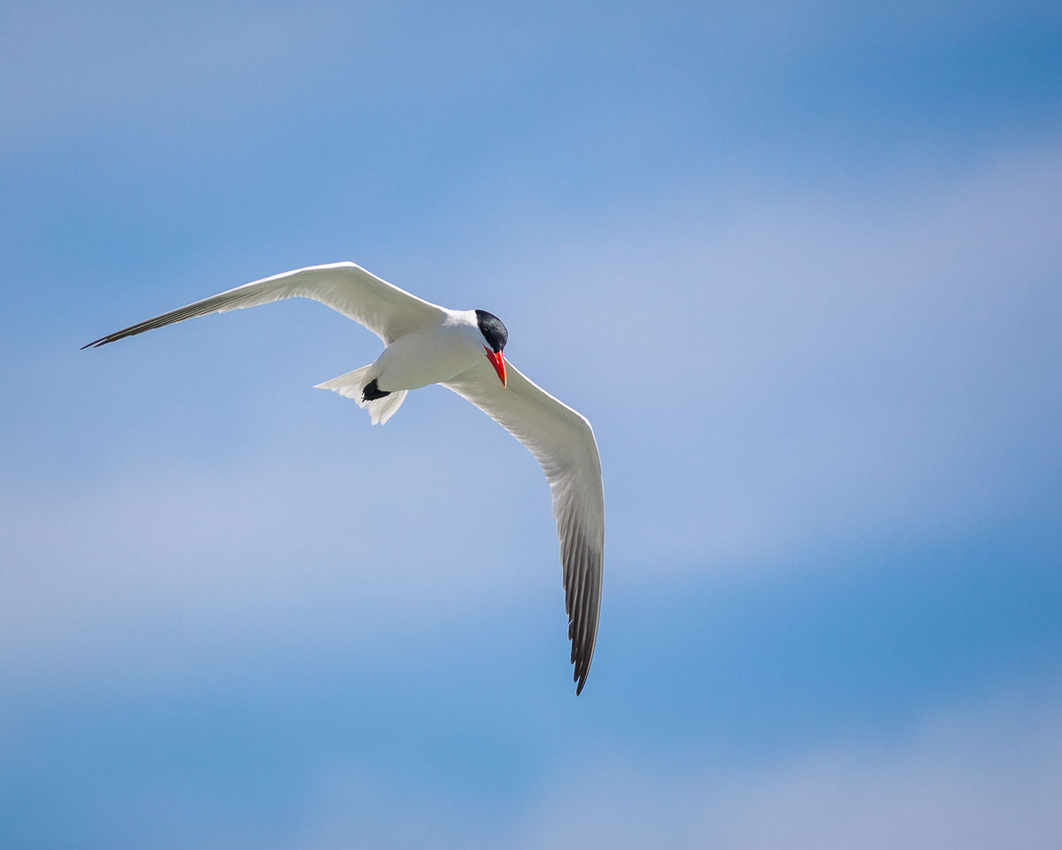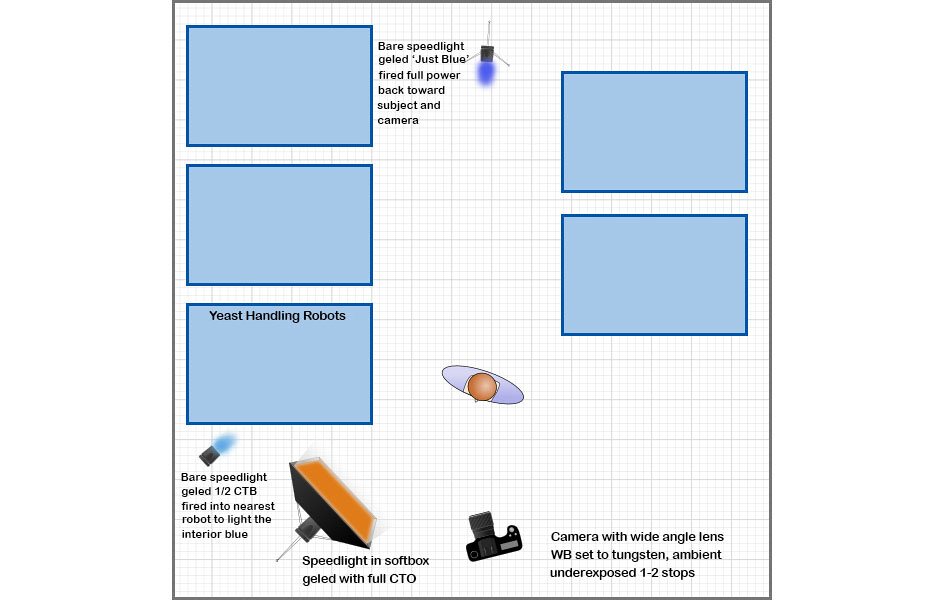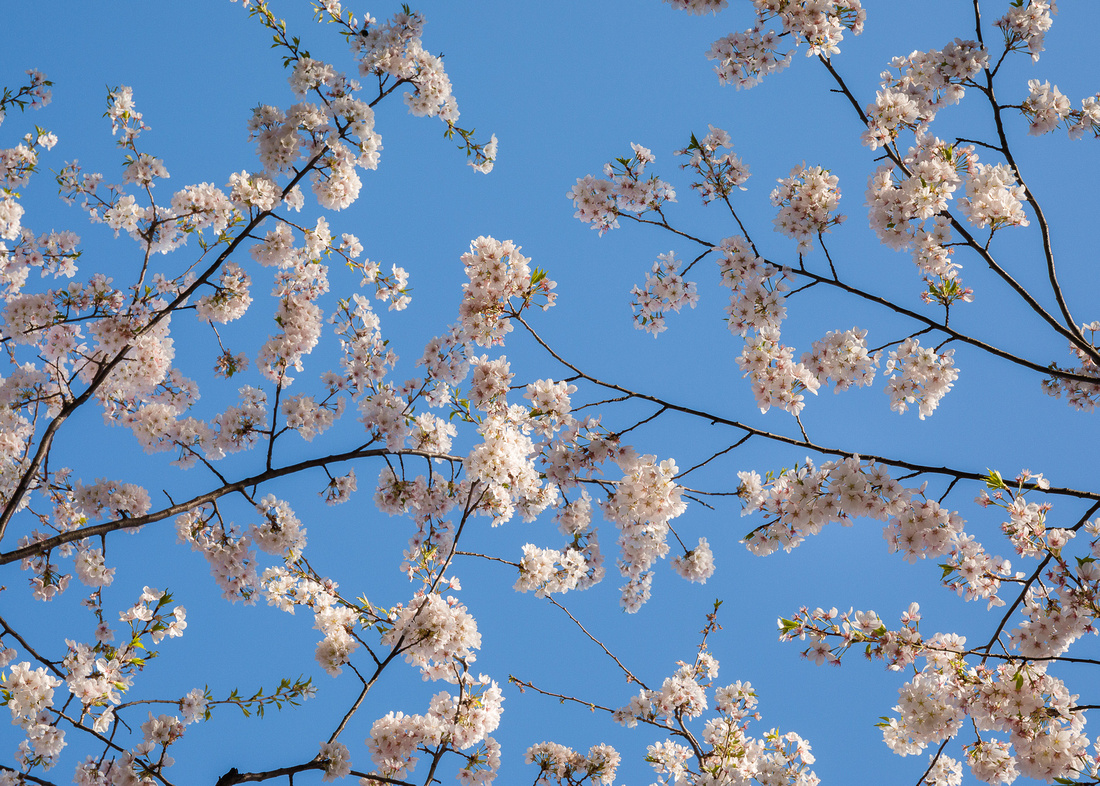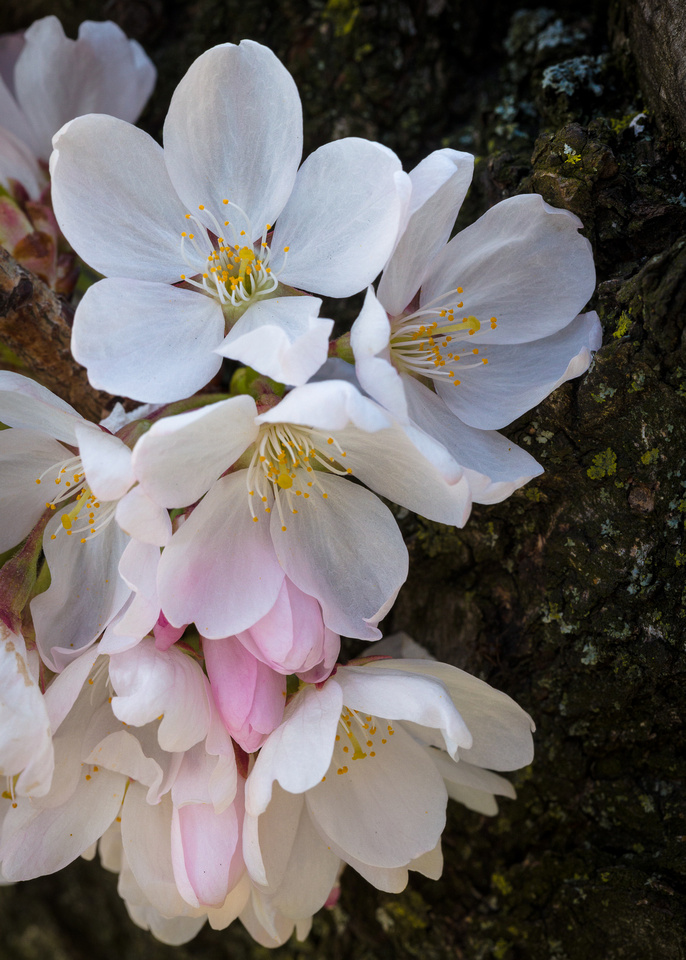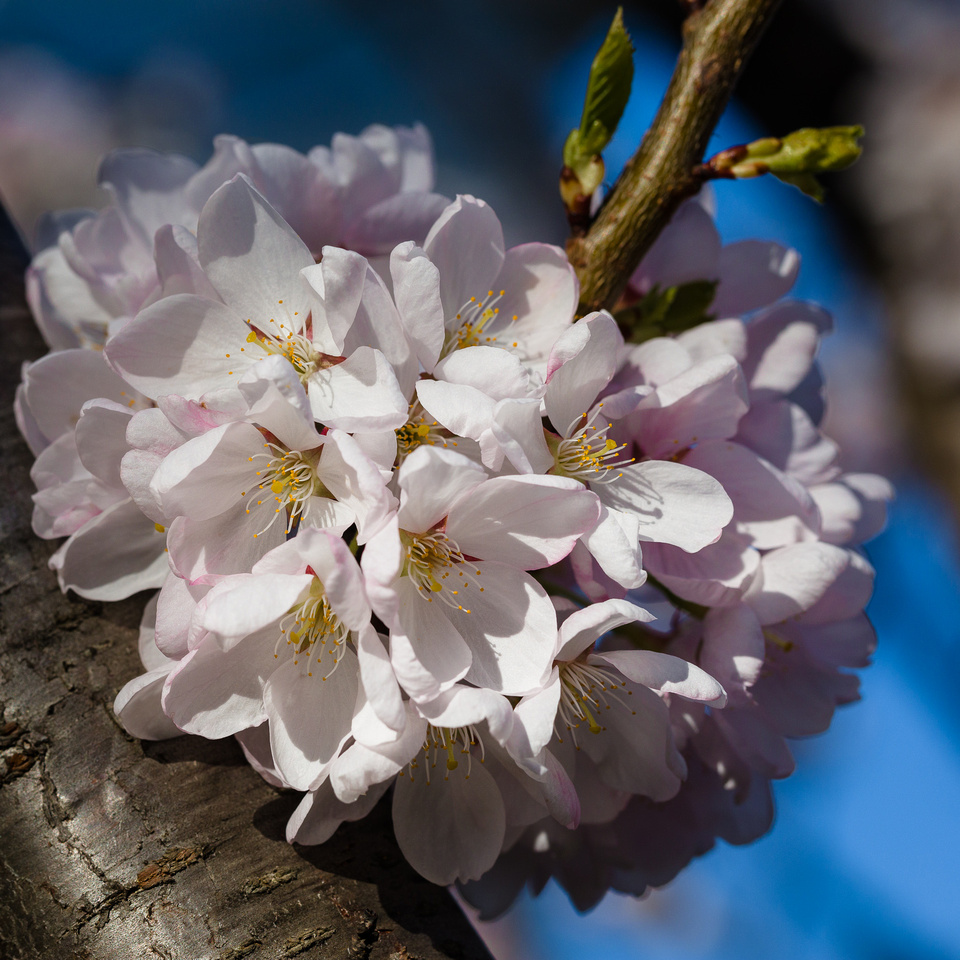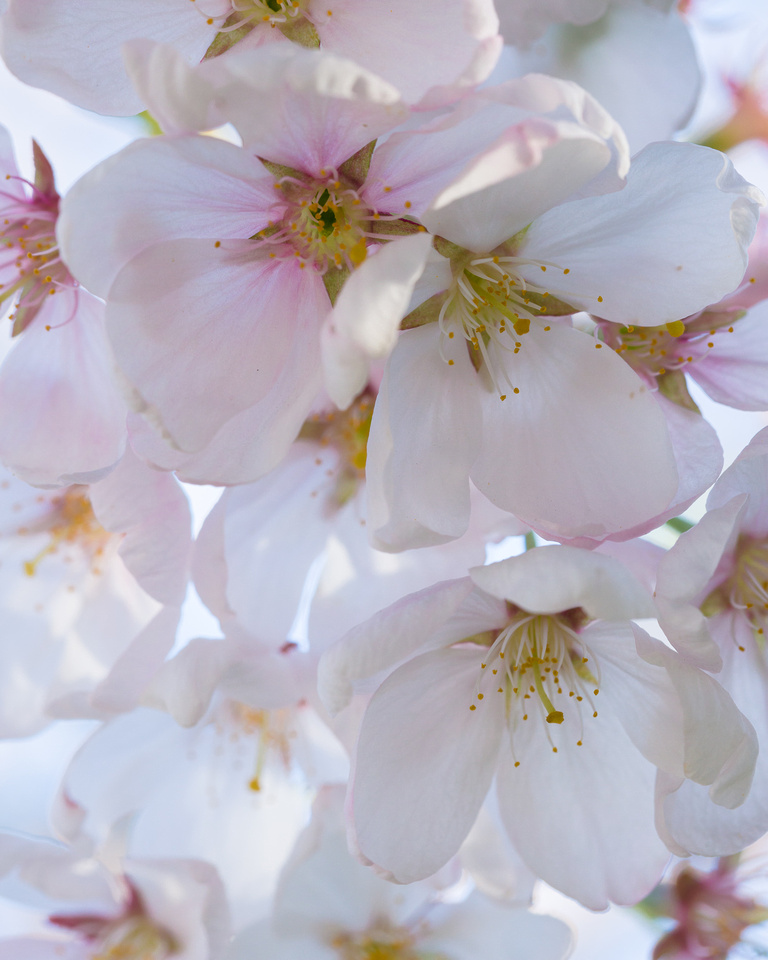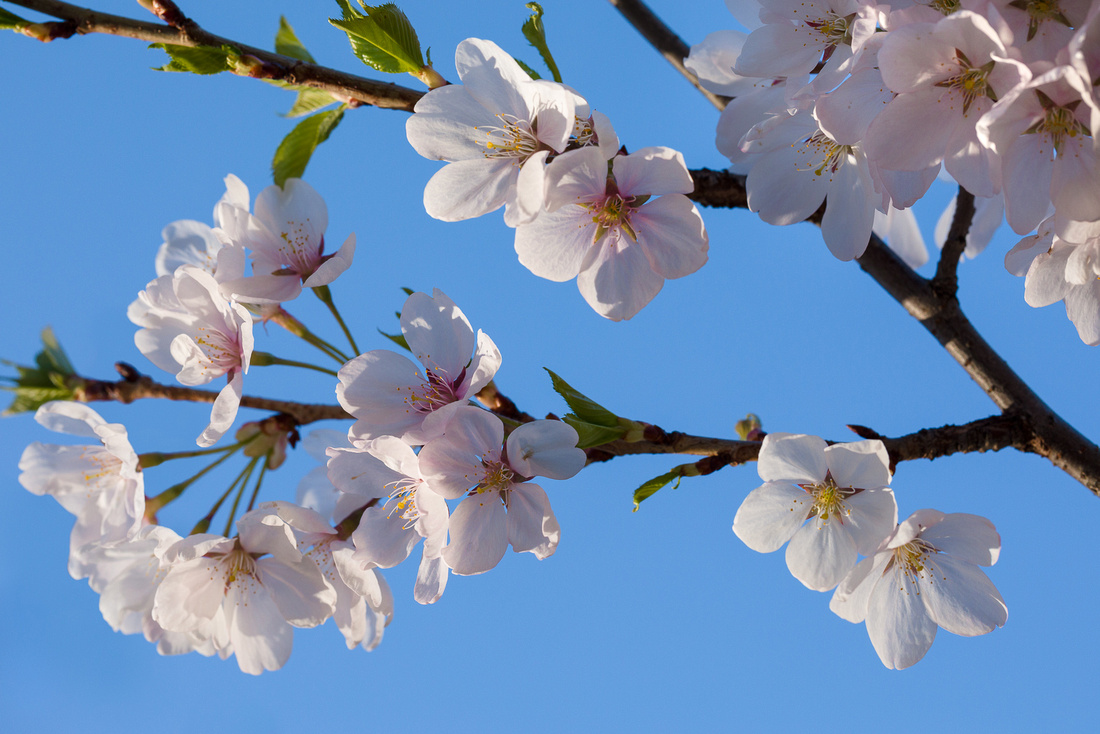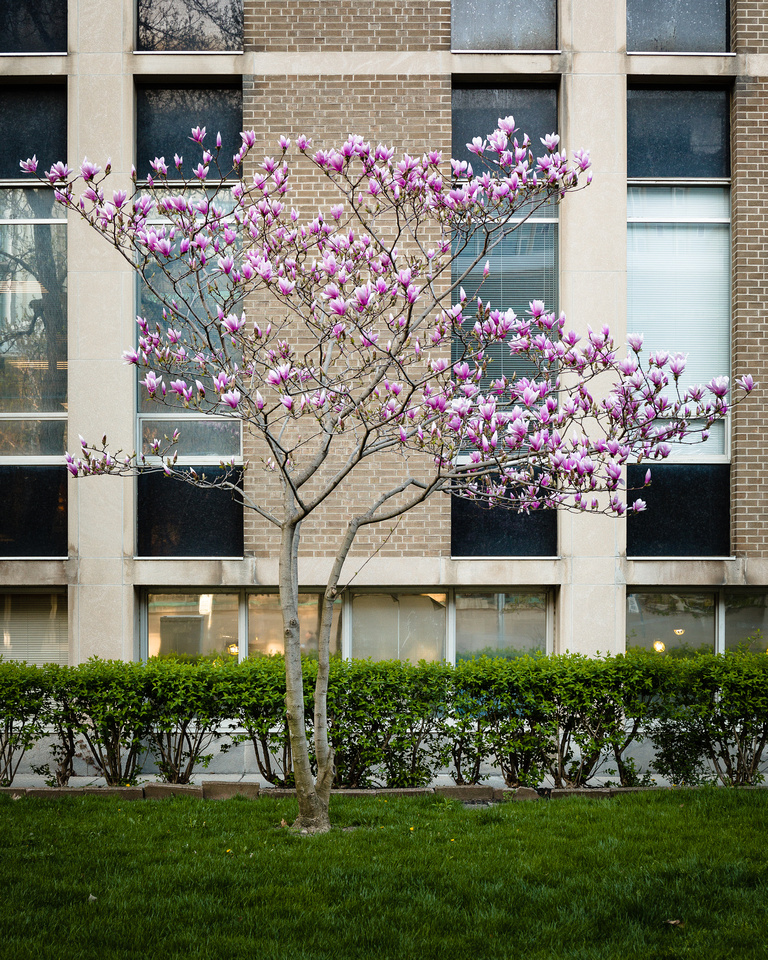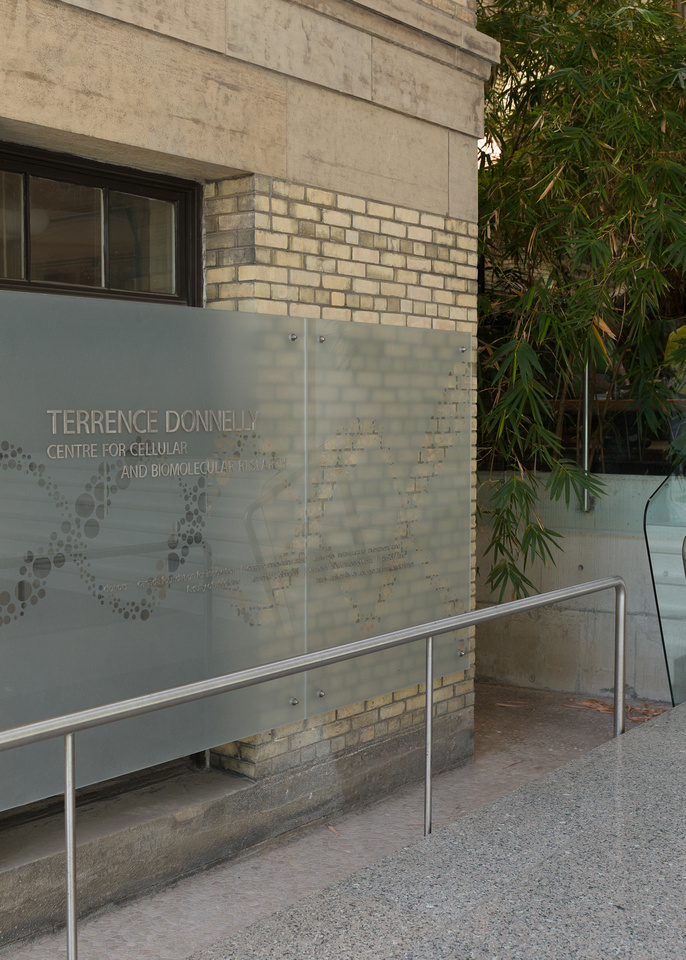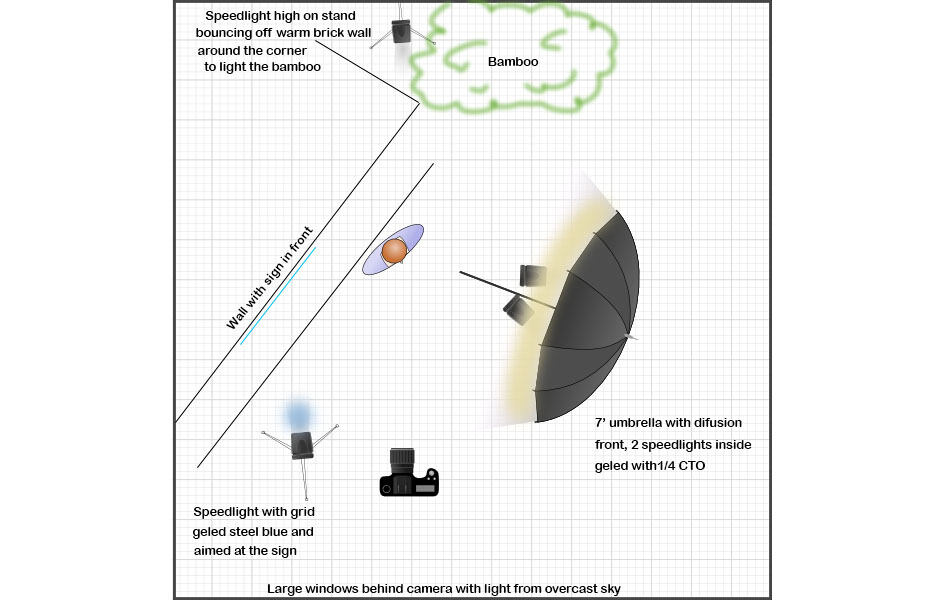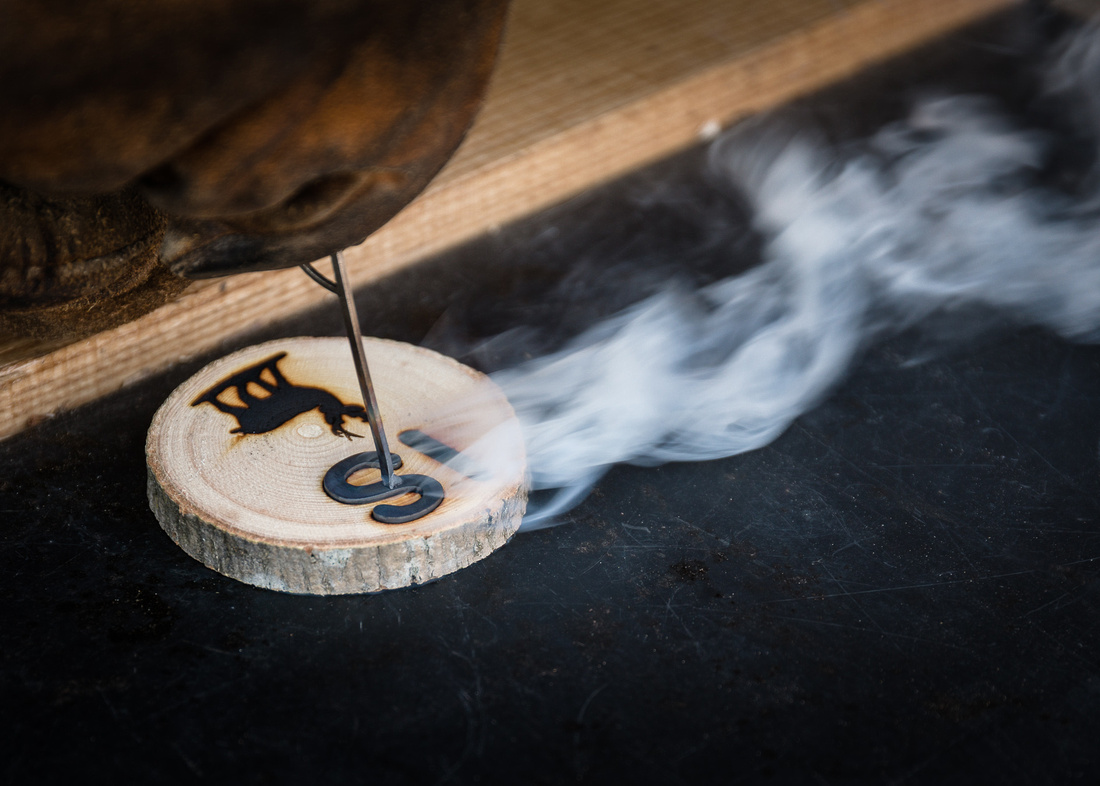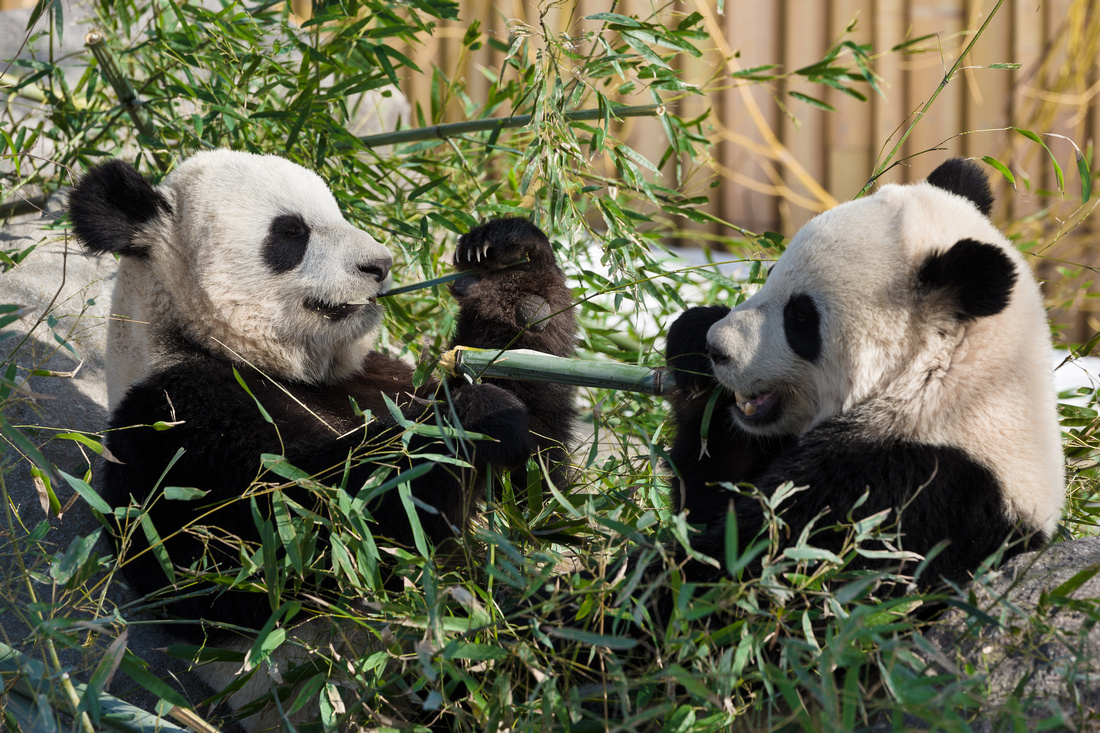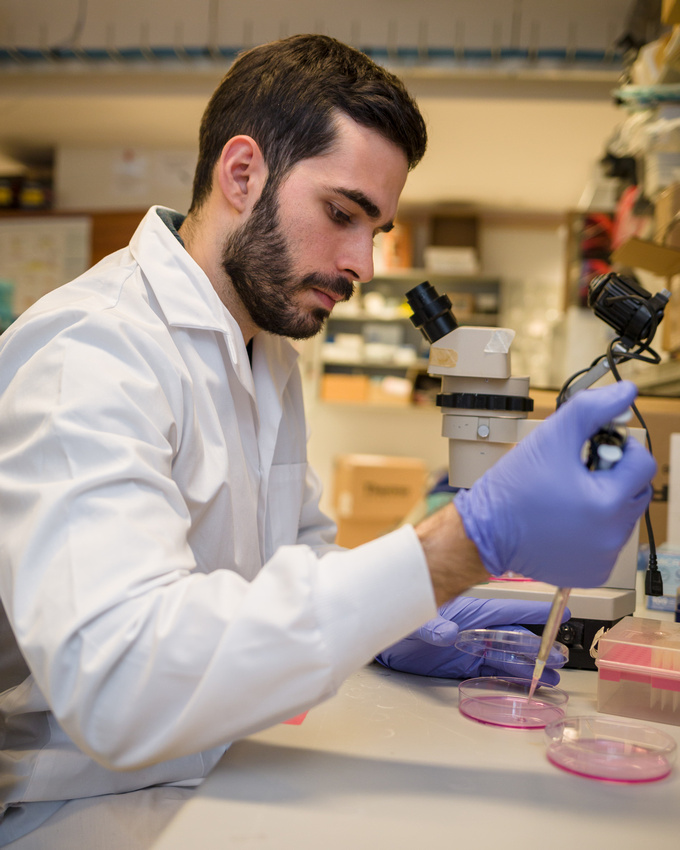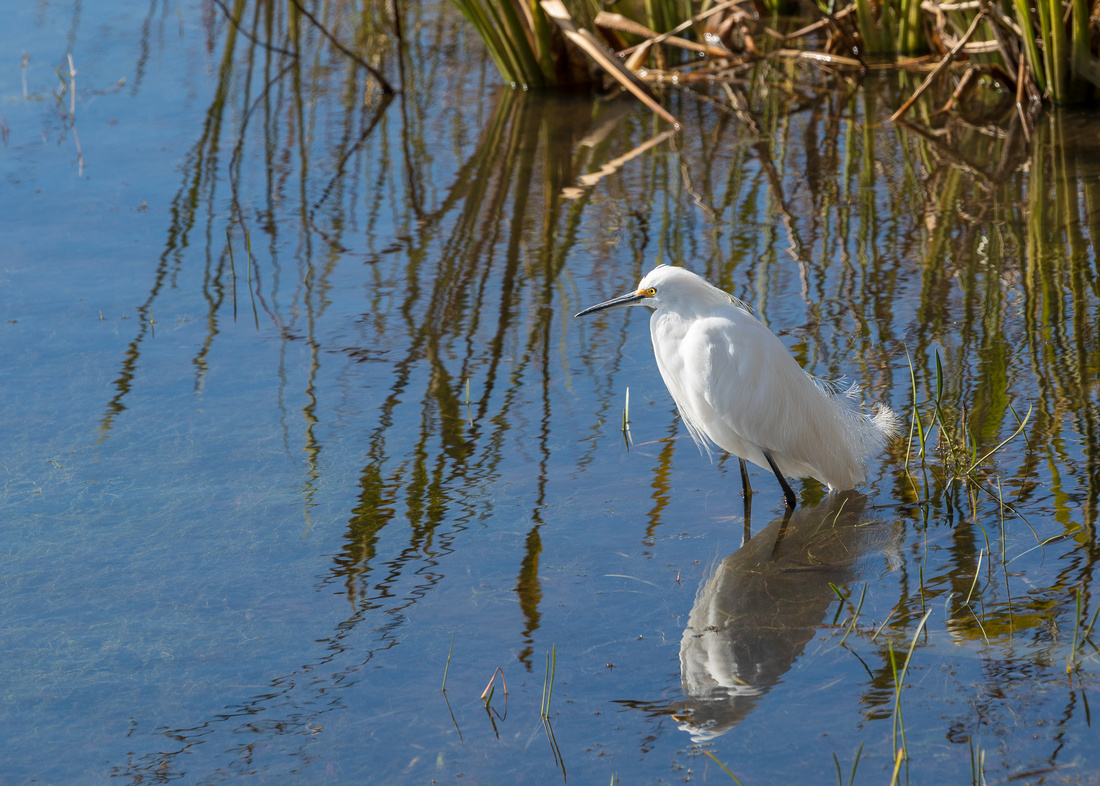Yoho National Park sits directly adjacent to Banff across the provincial border in British Columbia. It features several of the same mountain peaks that can be seen from Lake Louise, but they are approached from the western side instead. We only stayed for a couple of days in a log cain in the park (it was fairly expensive) but the park is less than 30 mins drive from Lake Louise and we made a couple of trips over to visit various sights.
The easiest attraction to get to is the Natural Bridge, where the Kicking Horse river has cut a channel through a rock ledge creating a natural overpass. The site is directly next to the road and is a popular stop for big tour buses. The area was a bit crowded, with people climbing on both the bridge and the rocky area upstream. As soon as one group left another would show up, making it extremely difficult to capture an image without people in it. But that just seems to be par-for-the-course at these well known spots in the Rockies. The shot below was a bit challenging due to the high contrast from the mid July sun and limited angles available, but I found the shape of the cut in the rock interesting and tried to frame it along with the surrounding landscape.
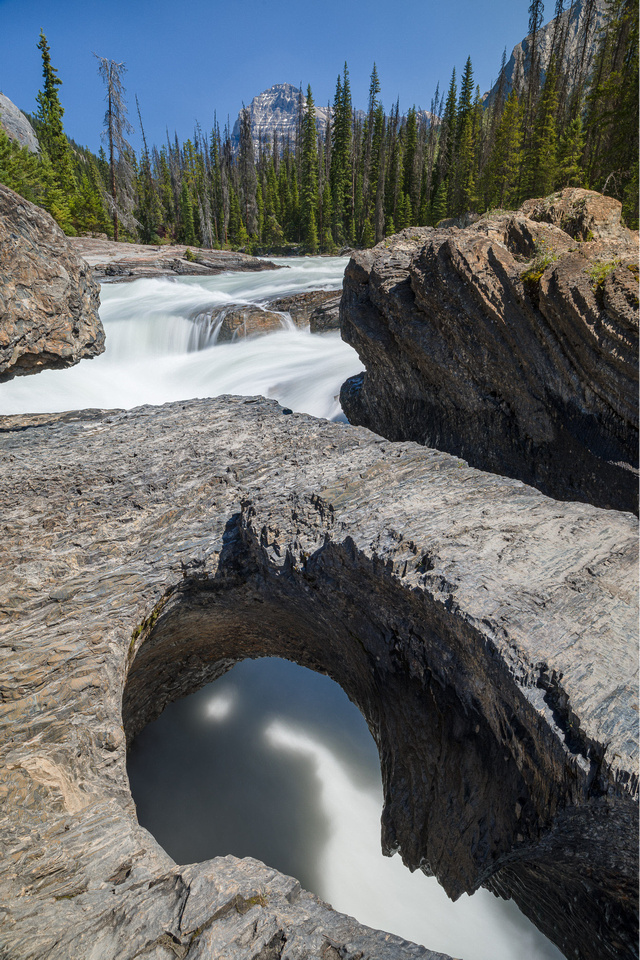
Emerald Lake is almost as hectic and overcrowded as the shores of Lake Louise; the pedestrian bridge and lodge restaurant are popular photographic subjects, especially in the evening or wintertime. On this day some rainclouds were rapidly moving in creating rather flat light, so I took a couple of long-exposure shots and we moved on to our next stop.
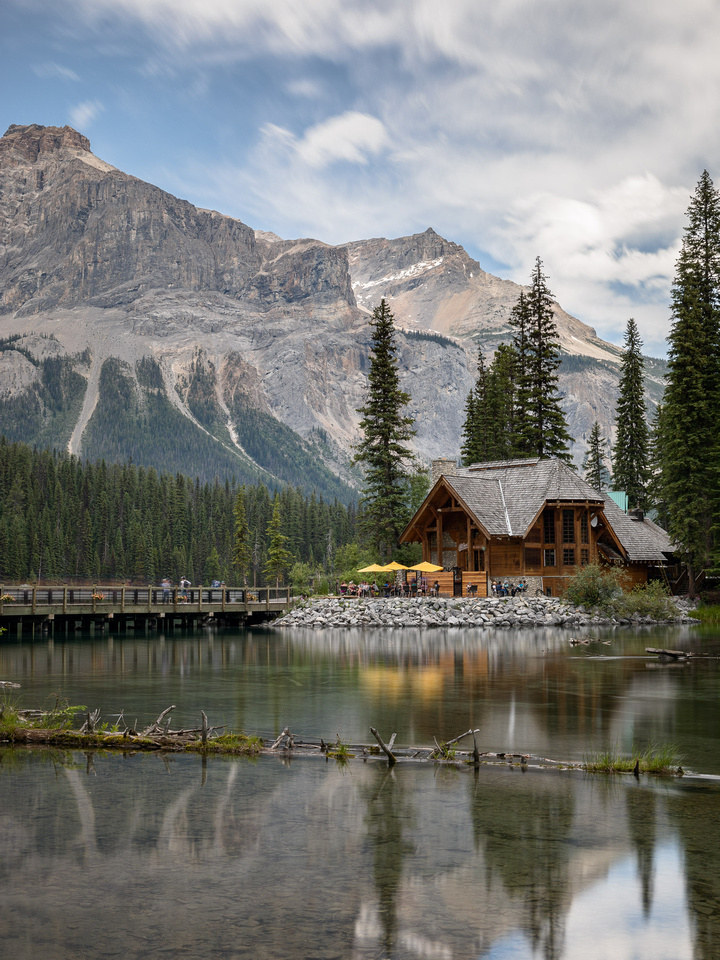
We returned to Emerald lake a few days later after our trip up to Jasper, on another rainy day, figuring it might be worth exploring the other side of the lake along the hiking trails to look for some different views. At the base of one of the avalanche slopes the forest gave way to a nice meadow filled with bright pink fireweed. As I approached the scene, the sun broke through the clouds, illuminating the fields and peaks above and I captured the following image.
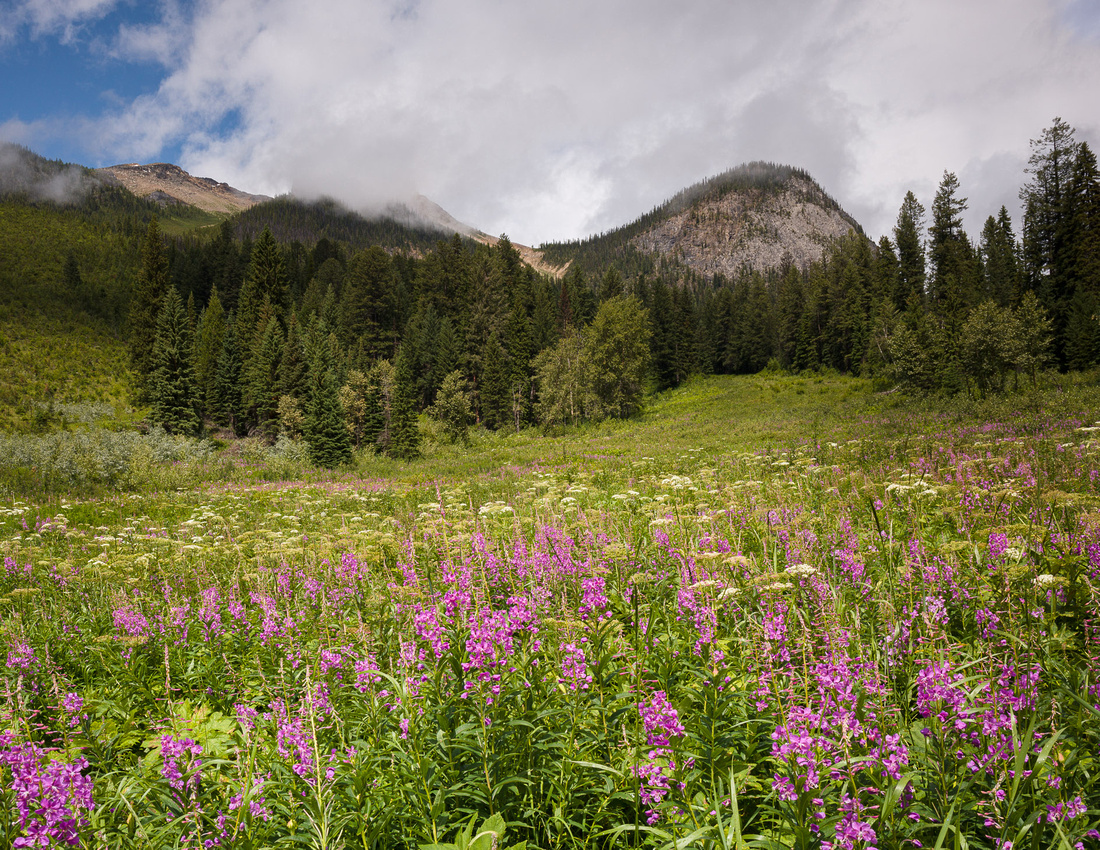
Takakkaw Falls is the second highest waterfall in Canada and is directly fed by a large mountaintop ice field that is shared with Banff park to the east. The water hasn't passed through a lake yet, so the river downstream is whiter and filled with sand from the glaciers that feed it. The trail from the parking lot leads you right up to the base of the falls, but they look more attractive back a bit near edge of the river. There was some light rain passing overhead as we arrived, so I waited patiently for quite a while hoping for a break in the clouds that would better light the foreground and the give some of that dramatic patchy dappled light that I love to shoot in.
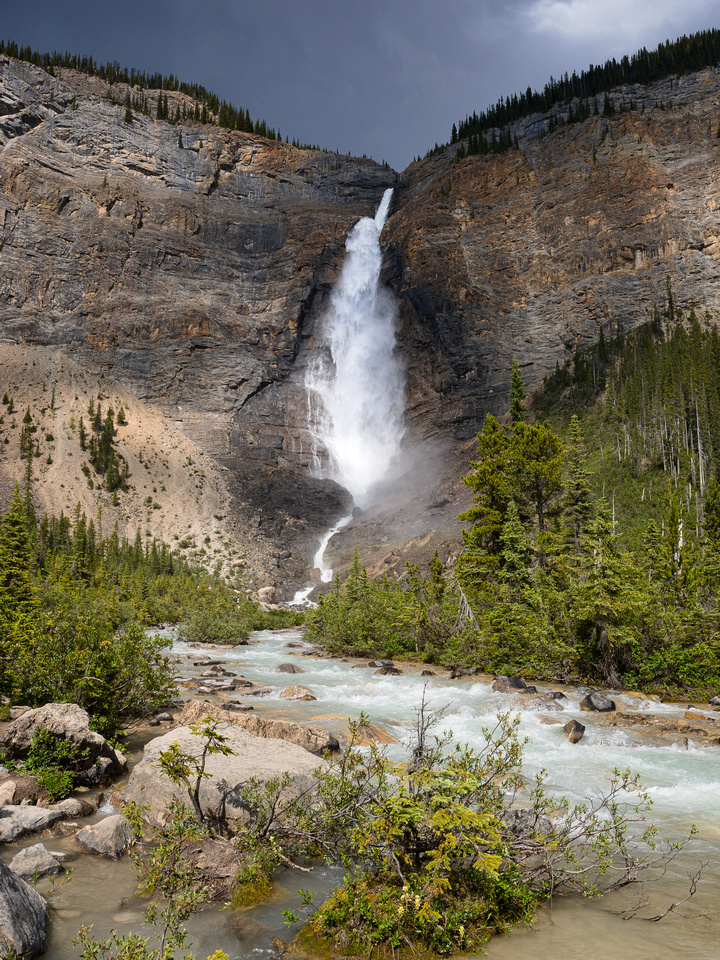
I can easily say that the part of our trip I was most looking forward to was a visit to Lake O'Hara and the surrounding alpine trails. While most of the popular attractions in the area suffer from large crowds, Lake O'Hara is accessible by a bus ride down an old 11km logging road, and there are only a limited number of seats available for the two buses each day. In order to obtain tickets for the bus, they had to be reserved online in April and the tickets usually sell out for the entire year in a matter of a few minutes. We were extremely fortunate to be able to get 4 spots on the first bus.
Our experience at the lake did not disappoint! Due to the strict quotas and limited access there were far fewer people around on the trails and it was a much more pleasant experience. We chose to take the trail up towards Lake Oesa, with a few smaller alpine lakes in between, and stunning views of the peaks along the way. The trail started out by going around the edge of Lake O'Hara, giving amazing views right from the start.
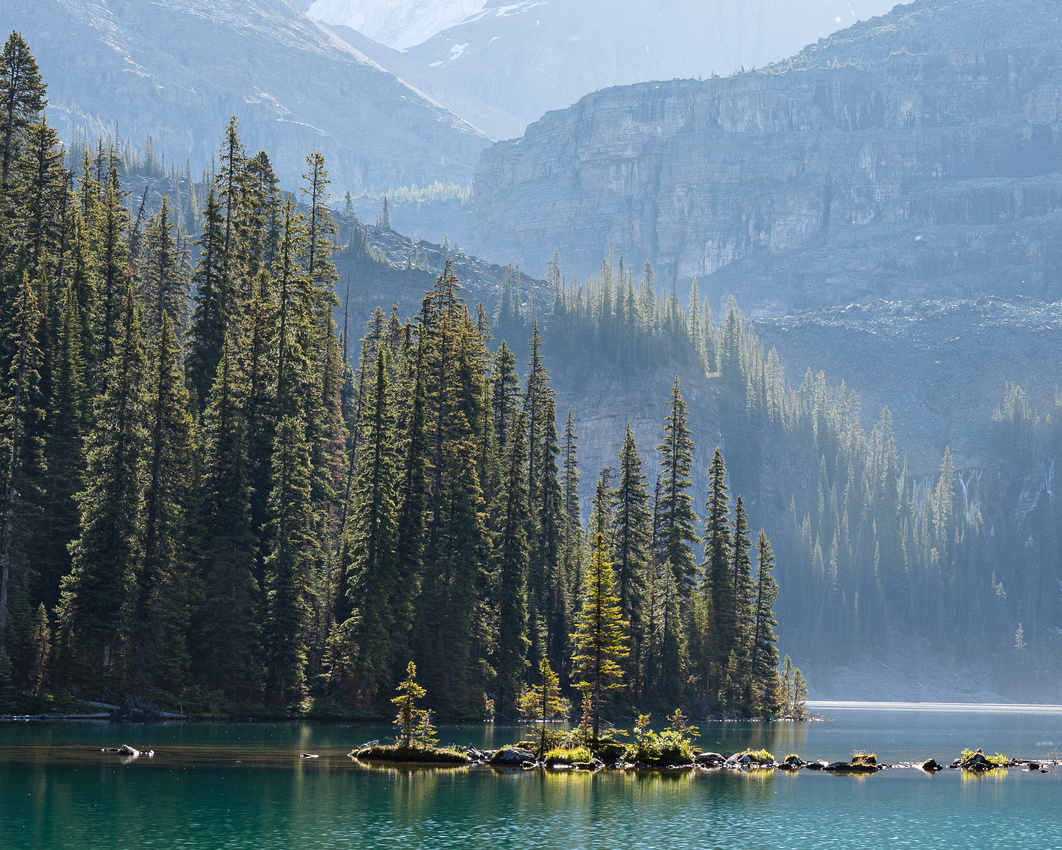
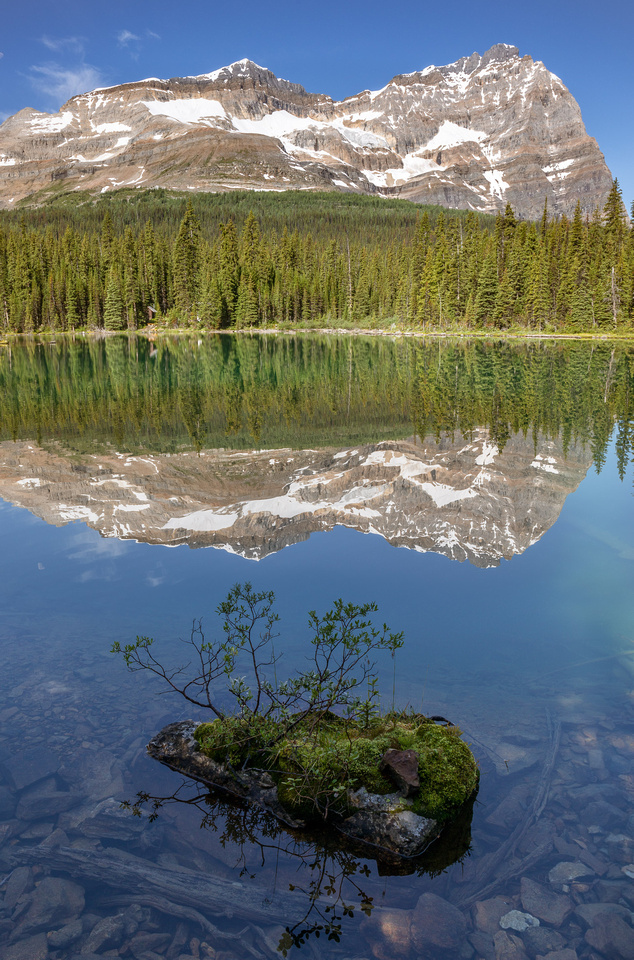
The path soon split off into a series of switchbacks rising up a steep hill. The kids did a great job making this assent and before long we were treated to a great view of Lake O'Hara from the top of a prominent rocky cliff.
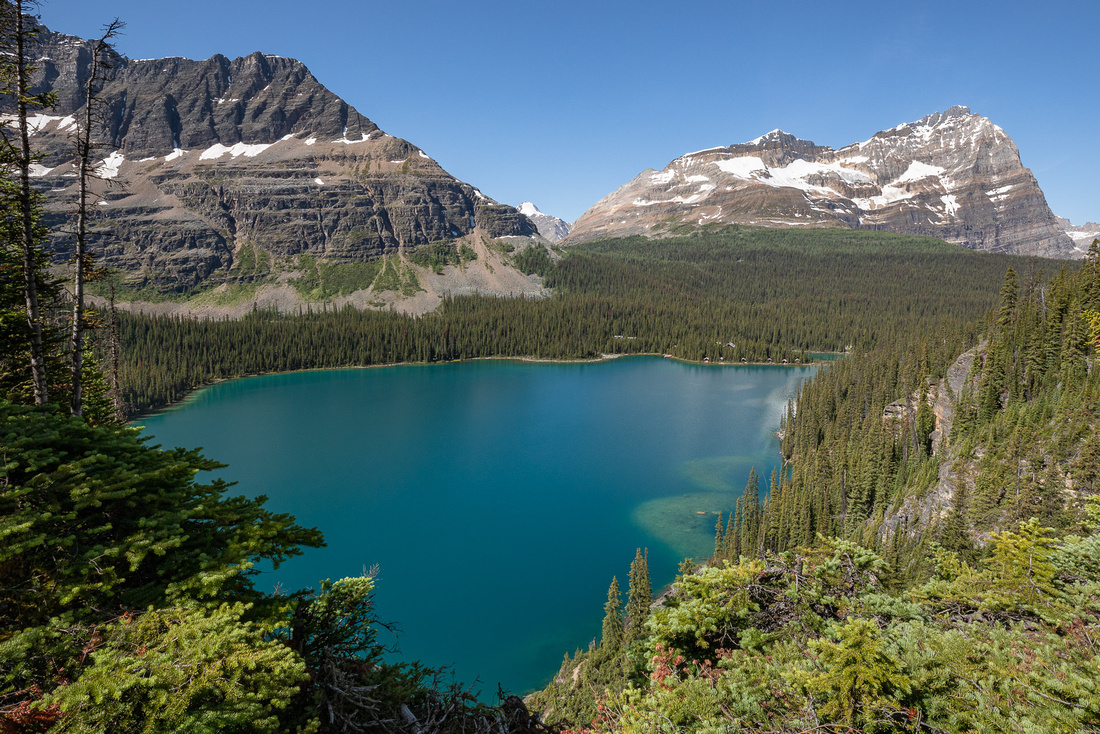
The first of the smaller alpine lakes we passed was Lake Yukeness, at the base of it's namesake mountain. We saw a marmot searching for food amongst the rocks next to the lake, but it scampered away rather quickly once it saw us. The trees surrounding the water looked nice backlit by the sun, resulting in the shot below.
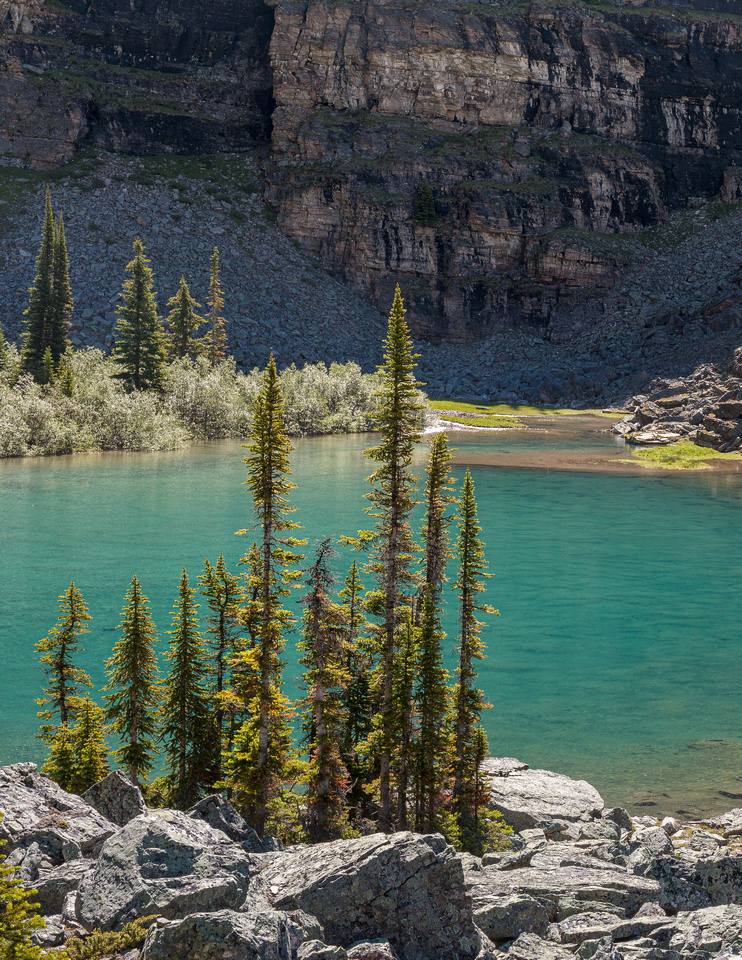
After scrambling up some rather steep steps and pathways adjacent to a rushing waterfall, we arrived at my favourite of the smaller alpine lakes, Lake Victoria. The colour of the water was an amazingly clear and bright blue, with very picturesque rocks, waterfalls and the snowy mountain peaks off in the distance.
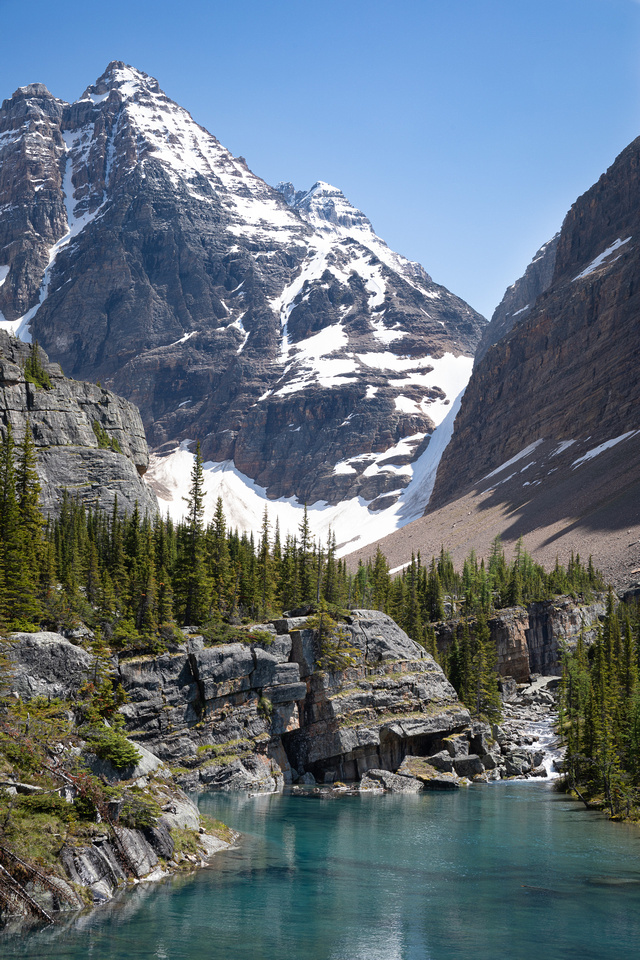
Our final destination for the day was the expansive Lake Oesa surrounded on three sides with towering mountain peaks. The lake is actually quite a bit larger than it appears in the shot due to foreshortening and the extremely wide angle of this panoramic image. We stopped here to eat lunch and enjoy the surroundings before descending the trail the same way we came from to get back to the trailhead.
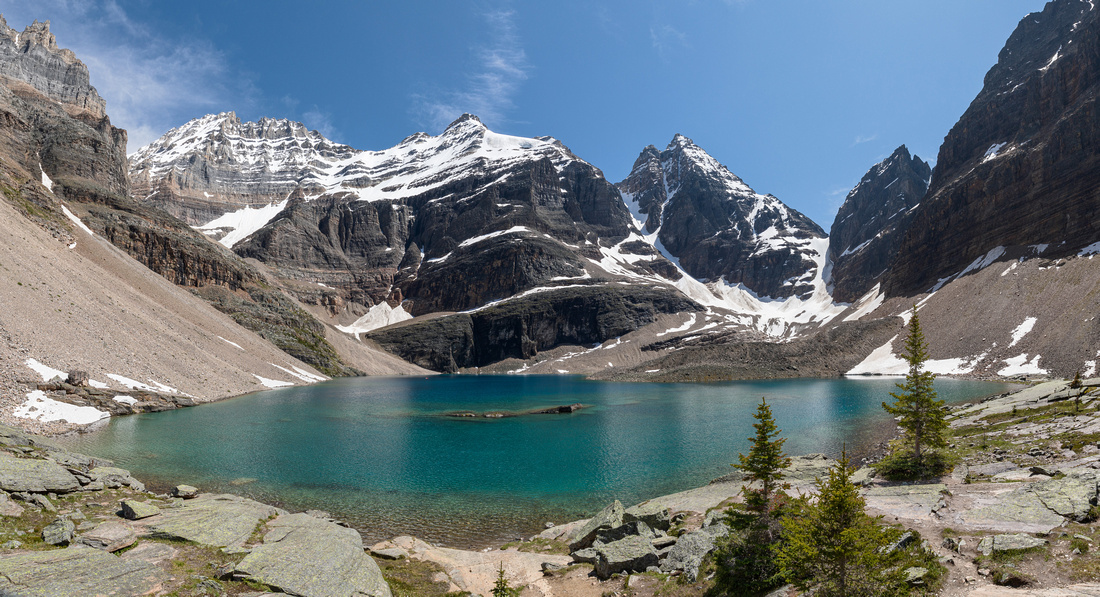
As the afternoon drew to an end, some clouds started to make their way across the scene, casting shadows and dappled light on the ridges, waterfalls and lakeside trees. I captured this final image before we boarded the bus to return back to the parking lot. Lily was so tired from the day that she fell asleep on the bus, despite it being one of the bumpiest rides I've ever taken.

Lake O'Hara lived up to all the hype, all my expectations, and was easily my favourite part of our entire trip. I hope to be able to return one day and explore some of the other trails in the area including the hanging valley of the Opabin Plateau which we didn't have time to explore this time around.
